
Sun Educational Services
JavaBeans Component Development
November 1999
JavaBeans Component
Development
SL-291

Sun Educational Services
JavaBeans Component Development
slide 2 of 2
Copyright 1999 Sun Microsystems, Inc. All Rights Reserved. SunService November 1999
Copyright 1999 Sun Microsystems, Inc., 901 San Antonio Road, Palo Alto, California 94303, U.S.A. All rights reserved.
This product or document is protected by copyright and distributed under licenses restricting its use, copying, distribution, and decompilation. No part of this product or document may
be reproduced in any form by any means without prior written authorization of Sun and its licensors, if any.
Third-party software, including font technology, is copyrighted and licensed from Sun suppliers.
Parts of the product may be derived from Berkeley BSD systems, licensed from the University of California. UNIX is a registered trademark in the U.S. and other countries, exclusively
licensed through X/Open Company, Ltd.
Sun, Sun Microsystems, and the Sun Logo are trademarks or registered trademarks of Sun Microsystems, Inc. in the U.S. and other countries.
All SPARC trademarks are used under license and are trademarks or registered trademarks of SPARC International, Inc. in the U.S. and other countries. Products bearing SPARC trade-
marks are based upon an architecture developed by Sun Microsystems, Inc.
UNIX is a registered trademark in the U.S. and other countries, exclusively licensed through X/Open Company, Ltd.
The OPEN LOOK and Sun Graphical User Interface was developed by Sun Microsystems, Inc. for its users and licensees. Sun acknowledges the pioneering efforts of Xerox in researching
and developing the concept of visual or graphical user interfaces for the computer industry. Sun holds a non-exclusive license from Xerox to the Xerox Graphical User Interface, which
license also covers Sun’s licensees who implement OPEN LOOK GUIs and otherwise comply with Sun’s written license agreements.
U.S. Government approval required when exporting the product.
RESTRICTED RIGHTS: Use, duplication, or disclosure by the U.S. Government is subject to restrictions of FAR 52.227-14(g) (2)(6/87) and FAR 52.227-19(6/87), or DFAR 252.227-7015
(b)(6/95) and DFAR 227.7202-3(a).
DOCUMENTATION IS PROVIDED "AS IS" AND ALL EXPRESS OR IMPLIED CONDITIONS, REPRESENTATIONS, AND WARRANTIES, INCLUDING ANY IMPLIED WARRANTY
OF MERCHANTABILITY, FITNESS FOR A PARTICULAR PURPOSE OR NON-INFRINGEMENT, ARE DISCLAIMED, EXCEPT TO THE EXTENT THAT SUCH DISCLAIMERS ARE
HELD TO BE LEGALLY INVALID.

JavaBeans Component Development
ii
Copyright 1999 Sun Microsystems, Inc. All Rights Reserved. Enterprise Services November 1999, Revision B.2
Course Contents
About This Course .......................................................................................................Preface-1
Course Goal .................................................................................................................................. Preface-2
Course Overview ......................................................................................................................... Preface-3
Course Map ................................................................................................................................... Preface-4
Module-by-Module Overview ................................................................................................... Preface-5
Course Objectives ......................................................................................................................... Preface-7
Skills Gained by Module ............................................................................................................. Preface-8
Guidelines for Module Pacing ................................................................................................... Preface-9
Topics Not Covered ................................................................................................................... Preface-10
How Prepared Are You? ........................................................................................................... Preface-11
Introductions .............................................................................................................................. Preface-12
How to Use Course Materials .................................................................................................. Preface-13
How to Use the Icons ................................................................................................................. Preface-14
Typographical Conventions and Symbols ............................................................................. Preface-15
Overview of JavaBeans .........................................................................................................1-1
Module Overview ................................................................................................................................... 1-2
What Is JavaBeans? ................................................................................................................................. 1-3
What Is a Bean? ....................................................................................................................................... 1-4
Design Goals of JavaBeans .................................................................................................................... 1-5
Component Architectures ...................................................................................................................... 1-6
Putting Beans Together .......................................................................................................................... 1-7
Life Cycle of a Bean ................................................................................................................................. 1-8
The BDK 1.0 Overview ........................................................................................................................... 1-9
ActiveX as a Component Model ......................................................................................................... 1-11

Sun Educational Services
JavaBeans Component Development
iii
Copyright 1999 Sun Microsystems, Inc. All Rights Reserved. Enterprise Services November 1999, Revision B.2
Check Your Progress ............................................................................................................................ 1-13
Think Beyond ........................................................................................................................................ 1-14
The BeanBox ............................................................................................................................2-1
Module Overview ................................................................................................................................... 2-2
What Is the BeanBox? ............................................................................................................................. 2-3
Windows of the BeanBox ....................................................................................................................... 2-4
Design Mode in the BeanBox ................................................................................................................ 2-6
Manipulating a Bean ............................................................................................................................... 2-7
Changing Bean Properties – Properties Window ............................................................................... 2-8
Changing Bean Properties – Customizers ........................................................................................... 2-9
Bound Properties ................................................................................................................................... 2-10
Connecting Beans With Event Handlers ........................................................................................... 2-11
Saving and Restoring the BeanBox ..................................................................................................... 2-12
Adding Beans to the ToolBox Window ............................................................................................. 2-13
Home Directory Structure ................................................................................................................... 2-14
Check Your Progress ............................................................................................................................ 2-15
Think Beyond ........................................................................................................................................ 2-16
Bean Event Model ...................................................................................................................3-1
Module Overview ................................................................................................................................... 3-2
What Is an Event? ................................................................................................................................... 3-3
Delegation Model Overview ................................................................................................................. 3-4
Simple Code Example ............................................................................................................................ 3-5
Code Explanation .................................................................................................................................... 3-6
Categories of Events ............................................................................................................................... 3-7
Obtaining Details About the Event ...................................................................................................... 3-8
Creating Your Own Event ..................................................................................................................... 3-9
Listeners ................................................................................................................................................. 3-10
Creating Your Own Listener Interface ............................................................................................... 3-11

Sun Educational Services
JavaBeans Component Development
iv
Copyright 1999 Sun Microsystems, Inc. All Rights Reserved. Enterprise Services November 1999, Revision B.2
Event Sources ......................................................................................................................................... 3-12
Multicast Syntax .................................................................................................................................... 3-13
Unicast Syntax ....................................................................................................................................... 3-14
Notifying All Listeners ......................................................................................................................... 3-15
Event Delivery Issues ........................................................................................................................... 3-16
Recap of Event Model .......................................................................................................................... 3-17
Bean Components and Event Handling ............................................................................................ 3-18
Stock
Class ............................................................................................................................................ 3-19
StockPriceChangeEvent
Code ......................................................................................................... 3-20
StockWatcher
Code ............................................................................................................................. 3-21
StockDetail
Class ............................................................................................................................... 3-24
Running Stock Market Beans .............................................................................................................. 3-25
Exercise: Working With the Bean Event Model ............................................................................... 3-26
Check Your Progress ............................................................................................................................ 3-27
Think Beyond ........................................................................................................................................ 3-28
Bean Conventions ...................................................................................................................4-1
Module Overview ................................................................................................................................... 4-2
Introduction to Introspection ................................................................................................................ 4-3
Introspection Addresses Key Issues ..................................................................................................... 4-4
Definitions ................................................................................................................................................ 4-5
Sample Uses for
BeanInfo
................................................................................................................... 4-6
The Introspector ...................................................................................................................................... 4-7
Naming Conventions for Properties .................................................................................................... 4-8
Naming Conventions for Events ........................................................................................................ 4-10
Naming Conventions for Methods ..................................................................................................... 4-12
Check Your Progress ............................................................................................................................ 4-13
Think Beyond ........................................................................................................................................ 4-14

Sun Educational Services
JavaBeans Component Development
v
Copyright 1999 Sun Microsystems, Inc. All Rights Reserved. Enterprise Services November 1999, Revision B.2
Bean Properties .......................................................................................................................5-1
Module Overview ................................................................................................................................... 5-2
What Is a Bean Property? ....................................................................................................................... 5-3
Simple Properties .................................................................................................................................... 5-4
Adding Simple Properties ..................................................................................................................... 5-5
Properties and Edit Menu ...................................................................................................................... 5-7
Bound and Constrained Properties ...................................................................................................... 5-8
Bound Properties ..................................................................................................................................... 5-9
Example of Creating a Bound Property ............................................................................................. 5-10
Bound Properties and the BeanBox .................................................................................................... 5-11
Recap of Bound Properties .................................................................................................................. 5-12
Constrained Properties ......................................................................................................................... 5-13
Example of Creating a Constrained Property ................................................................................... 5-16
Constrained Properties and Validation ............................................................................................. 5-17
Constrained Properties and the BeanBox .......................................................................................... 5-18
Recap of Constrained Properties ........................................................................................................ 5-19
Properties and the BeanBox ................................................................................................................. 5-20
Views on the Properties Window ....................................................................................................... 5-21
Example of Views ................................................................................................................................. 5-22
Exercise: Defining Bean Properties ..................................................................................................... 5-23
Check Your Progress ............................................................................................................................ 5-24
Think Beyond ........................................................................................................................................ 5-25
Introspection ...........................................................................................................................6-1
Module Overview ................................................................................................................................... 6-2
Advantages Provided by Introspection ............................................................................................... 6-3
Bean Creation and Analysis .................................................................................................................. 6-4
Beans.instantiate
Method ............................................................................................................... 6-5
Instantiation Supports Customized Beans and Applets ................................................................... 6-6
Introspector.getBeanInfo
Method ................................................................................................ 6-7

Sun Educational Services
JavaBeans Component Development
vi
Copyright 1999 Sun Microsystems, Inc. All Rights Reserved. Enterprise Services November 1999, Revision B.2
Information Discovered by
getBeanInfo
......................................................................................... 6-8
SimpleBeanInfo
Class ........................................................................................................................ 6-10
A
BeanInfo
Class That Affects Properties ........................................................................................ 6-11
Using
getAdditionalBeanInfo
....................................................................................................... 6-13
BeanInfo
Class That Affects Methods .............................................................................................. 6-14
How Is a
BeanInfo
Processed? ........................................................................................................... 6-15
Available
BeanInfo
Methods ............................................................................................................. 6-16
Reflection and JavaBeans ..................................................................................................................... 6-17
Check Your Progress ............................................................................................................................ 6-18
Think Beyond ........................................................................................................................................ 6-19
Persistence ...............................................................................................................................7-1
Module Overview ................................................................................................................................... 7-2
Goals for Bean Storage ........................................................................................................................... 7-3
Java Object Serialization ......................................................................................................................... 7-4
What Is and Is Not Saved ...................................................................................................................... 7-5
Input and Output Interfaces .................................................................................................................. 7-6
Saving Beans to Streams ........................................................................................................................ 7-7
Retrieving Beans From Streams ............................................................................................................ 7-8
defaultReadObject
and
defaultWriteObject
Methods ............................................................. 7-9
Sample Code .......................................................................................................................................... 7-11
Sample Code Discussion ...................................................................................................................... 7-15
Deserialization and
Beans.instantiate
....................................................................................... 7-16
Creating a Java Beans Prototype ......................................................................................................... 7-17
Packaging a Prototype Bean ................................................................................................................ 7-18
Recap of Persistence .............................................................................................................................. 7-19
Exercise: Creating a New Bean Through Serialization .................................................................... 7-20
Check Your Progress ............................................................................................................................ 7-21
Think Beyond ........................................................................................................................................ 7-22

Sun Educational Services
JavaBeans Component Development
vii
Copyright 1999 Sun Microsystems, Inc. All Rights Reserved. Enterprise Services November 1999, Revision B.2
Property Sheets and Property Editors ................................................................................8-1
Module Overview ................................................................................................................................... 8-2
What Can You Do Through Customization? ...................................................................................... 8-3
Property Sheets and Property Editors ................................................................................................. 8-4
Representing Properties ......................................................................................................................... 8-5
Review of Views ...................................................................................................................................... 8-6
Property Editor Basics ............................................................................................................................ 8-7
Behavior Requirements .......................................................................................................................... 8-8
Overview of All Methods ...................................................................................................................... 8-9
Bean, Builder Tool, Property Editor, and User Interaction ............................................................. 8-10
Predefined or Your Own Editor? ........................................................................................................ 8-11
PropertyEditor
Requirements ......................................................................................................... 8-12
Multiple Line Label ............................................................................................................................... 8-13
Custom GUI ........................................................................................................................................... 8-14
LabelEditor
Custom GUI .................................................................................................................. 8-15
Choice of Tags ....................................................................................................................................... 8-17
BoolEditor Choice of Tags Methods ................................................................................................... 8-18
Simple String in a Text Field ............................................................................................................... 8-19
StringEditor
From the BeanBox ...................................................................................................... 8-20
Making Your Property Editor Known ............................................................................................... 8-21
BeanInfo
for Multiple Line Label Bean ............................................................................................ 8-22
Recap of Property Editors .................................................................................................................... 8-23
Exercise: Creating a Property Editor .................................................................................................. 8-24
Check Your Progress ............................................................................................................................ 8-25
Think Beyond ........................................................................................................................................ 8-26
Customizers .............................................................................................................................9-1
Module Overview ................................................................................................................................... 9-2
When Is a Property-Specific Editor Not Enough? .............................................................................. 9-3
Customizers ............................................................................................................................................. 9-4

Sun Educational Services
JavaBeans Component Development
viii
Copyright 1999 Sun Microsystems, Inc. All Rights Reserved. Enterprise Services November 1999, Revision B.2
Implementing a
Customizer
Class ...................................................................................................... 9-5
Defining
BeanInfo
................................................................................................................................ 9-6
Extending
Component
/Implementing
Customizer
......................................................................... 9-7
Adding and Removing
PropertyChangeListeners
...................................................................... 9-8
Defining
setObject()
.......................................................................................................................... 9-9
Example of a Customizer ..................................................................................................................... 9-10
Recap of Customizers ........................................................................................................................... 9-12
Exercise: Creating a Customizer ......................................................................................................... 9-13
Check Your Progress ............................................................................................................................ 9-14
Think Beyond ........................................................................................................................................ 9-15
Event Adapters ......................................................................................................................10-1
Module Overview ................................................................................................................................. 10-2
What Is an Event Adapter? .................................................................................................................. 10-3
Adapters Used in the BeanBox ........................................................................................................... 10-4
Types of Adapters ................................................................................................................................. 10-5
Adapter Diagrams ................................................................................................................................ 10-6
Differentiating Adapters From Normal Listeners ............................................................................ 10-7
Demultiplexing Adapter Example ..................................................................................................... 10-8
Description of Application .................................................................................................................. 10-9
Builder.java
Code ........................................................................................................................... 10-10
Widgets.java
Code ........................................................................................................................... 10-11
ActionAdapter.java
Code .............................................................................................................. 10-13
WhatToDo.java
Code ......................................................................................................................... 10-15
Multiplexing Adapters ....................................................................................................................... 10-16
Overview of Multiplexer Exercise .................................................................................................... 10-17
Exercise: Working With Adapters .................................................................................................... 10-18
Check Your Progress .......................................................................................................................... 10-19
Think Beyond ...................................................................................................................................... 10-20

Sun Educational Services
JavaBeans Component Development
ix
Copyright 1999 Sun Microsystems, Inc. All Rights Reserved. Enterprise Services November 1999, Revision B.2
Distributed Computing With Beans ..................................................................................11-1
Module Overview ................................................................................................................................. 11-2
Distributed Bean Programming .......................................................................................................... 11-3
Enterprise JavaBeans ............................................................................................................................ 11-4
EJB Developer Roles ............................................................................................................................. 11-5
EJB Features ........................................................................................................................................... 11-6
Types of Enterprise Beans .................................................................................................................... 11-7
JavaBeans and Enterprise JavaBeans ................................................................................................. 11-8
Applications for Distributed Beans .................................................................................................. 11-10
Distributed Computing Technologies ............................................................................................. 11-11
BeanBox RMI Bean .............................................................................................................................. 11-12
Definition of RMI ................................................................................................................................ 11-13
RMI Architecture Overview .............................................................................................................. 11-14
RMI Exercise Code .............................................................................................................................. 11-16
Source Files Provided ......................................................................................................................... 11-17
Data.java
File .................................................................................................................................... 11-18
DataFactory.java
File ..................................................................................................................... 11-19
DataImpl.java
File ........................................................................................................................... 11-20
DataFactoryImpl.java
.................................................................................................................. 11-22
Server Code Overview ....................................................................................................................... 11-23
Exercise: Creating an RMI Client Bean ............................................................................................ 11-24
Check Your Progress .......................................................................................................................... 11-25
Think Beyond ...................................................................................................................................... 11-26
Beans Outside the BeanBox ................................................................................................12-1
Module Overview ................................................................................................................................. 12-2
Options for Building Beans ................................................................................................................. 12-3
Subclassing a Bean and Adding
BeanInfo
...................................................................................... 12-4
Restricting Visible Properties .............................................................................................................. 12-5
Specifying a Customizer for the Bean ................................................................................................ 12-6

Sun Educational Services
JavaBeans Component Development
x
Copyright 1999 Sun Microsystems, Inc. All Rights Reserved. Enterprise Services November 1999, Revision B.2
Adding Icons ......................................................................................................................................... 12-7
Limiting Visible Events ........................................................................................................................ 12-8
Composing a Bean From Other Beans ............................................................................................... 12-9
Customizing and Saving a Bean ....................................................................................................... 12-10
Restoring the Bean .............................................................................................................................. 12-11
Creating Applets and Applications With Beans ............................................................................ 12-12
Delivering Your Beans ....................................................................................................................... 12-13
Using JAR Files in HTML .................................................................................................................. 12-14
Sample Bean Applet ........................................................................................................................... 12-15
Loading and Instantiating a Bean ..................................................................................................... 12-16
Instantiating a Bean From a Serialized Stream ............................................................................... 12-17
Instantiating a Bean in an Applet/Application .............................................................................. 12-18
The
-jar
Option to the
java
Command ......................................................................................... 12-23
Hooking Beans Together .................................................................................................................... 12-24
Issues for Applets That Are Beans .................................................................................................... 12-25
Instantiating a Bean That Is an Applet ............................................................................................. 12-26
Writing a Bean That Is an Applet ..................................................................................................... 12-27
Summary of Issues .............................................................................................................................. 12-28
Exercise: Writing Applets or Applications With Beans ................................................................. 12-29
Check Your Progress .......................................................................................................................... 12-30
Think Beyond ...................................................................................................................................... 12-31
Business Environment for JavaBeans ...............................................................................13-1
Module Overview ................................................................................................................................. 13-2
“Write Once, Run Anywhere” ............................................................................................................ 13-3
Component-based Software Review .................................................................................................. 13-4
Bridging JavaBeans to Other Component Models ........................................................................... 13-5
Development Environments ............................................................................................................... 13-6
Visual Application Builder Tools ....................................................................................................... 13-7
JavaBeans Added Capabilities ............................................................................................................ 13-8

Sun Educational Services
JavaBeans Component Development
xi
Copyright 1999 Sun Microsystems, Inc. All Rights Reserved. Enterprise Services November 1999, Revision B.2
Handling or Sharing Data Among Beans .......................................................................................... 13-9
InfoBus Technology ............................................................................................................................ 13-10
Overview of the InfoBus Architecture ............................................................................................. 13-11
InfoBus Classes and Interfaces .......................................................................................................... 13-12
Code Samples From the InfoBus Software ...................................................................................... 13-14
InfoBus Events ..................................................................................................................................... 13-15
InfoBus Event Listeners ..................................................................................................................... 13-16
Events, Firing Methods, and Handlers ............................................................................................ 13-17
InfoBus
DataItem
Interface ............................................................................................................... 13-18
Sample
DataItem
s From the InfoBus Software .............................................................................. 13-19
Miscellaneous ...................................................................................................................................... 13-20
JavaBeans
beancontext
Package ..................................................................................................... 13-21
Beans and BeanContexts .................................................................................................................... 13-22
BeanContext
Interface ....................................................................................................................... 13-23
BeanContextServices
Interface ..................................................................................................... 13-24
Providing a Bean With a
BeanContext
.......................................................................................... 13-25
BeanContext
Support for Applets ................................................................................................... 13-26
BeanContext
Services Support ......................................................................................................... 13-27
BeanContext
Support Classes .......................................................................................................... 13-28
JavaBeans Activation Framework .................................................................................................... 13-29
Major Elements Comprising the JAF Architecture ........................................................................ 13-30
Overview of the Major Elements ...................................................................................................... 13-31
Check Your Progress .......................................................................................................................... 13-33
Think Beyond ...................................................................................................................................... 13-34

Sun Educational Services
JavaBeans Component Development
November 1999
Preface
About This Course

Sun Educational Services
JavaBeans Component Development
Preface, slide 2 of 15
Copyright 1999 Sun Microsystems, Inc. All Rights Reserved. Enterprise Services November 1999, Revision B.2
Course Goal
This course provides you with knowledge and skills to
• Create reusable bean components
• Create bean properties
• Understand how introspection and reflection works
• Work with the bean event model
• Customize and persist beans

Sun Educational Services
JavaBeans Component Development
Preface, slide 3 of 15
Copyright 1999 Sun Microsystems, Inc. All Rights Reserved. Enterprise Services November 1999, Revision B.2
Course Overview
• Use bean components to create new applications
• Create beans using conventions in the JavaBeans™ API
specification
• Use beans to bridge to component models that do not
support Java™ technology
• See how beans can run in any environment that
supports Java technology

Sun Educational Services
JavaBeans Component Development
Preface, slide 4 of 15
Copyright 1999 Sun Microsystems, Inc. All Rights Reserved. Enterprise Services, November 1999, Revision B.2
Course Map

Sun Educational Services
JavaBeans Component Development
Preface, slide 5 of 15
Copyright 1999 Sun Microsystems, Inc. All Rights Reserved. Enterprise Services November 1999, Revision B.2
Module-by-Module Overview
• Module 1 – “Overview of JavaBeans”
• Module 2 – “The BeanBox”
• Module 3 – “The Bean Event Model”
• Module 4 – “Bean Conventions”
• Module 5 – “Bean Properties”
• Module 6 – “Introspection”
• Module 7 – “Persistence”

Sun Educational Services
JavaBeans Component Development
Preface, slide 6 of 15
Copyright 1999 Sun Microsystems, Inc. All Rights Reserved. Enterprise Services November 1999, Revision B.2
Module-by-Module Overview
• Module 8 – “Property Sheets and Property Editors”
• Module 9 – “Customizers”
• Module 10 – “Event Adapters”
• Module 11 – “Distributed Computing With Beans”
• Module 12 – “Beans Outside of the BeanBox”
• Module 13 – “Business Environment for JavaBeans”

Sun Educational Services
JavaBeans Component Development
Preface, slide 7 of 15
Copyright 1999 Sun Microsystems, Inc. All Rights Reserved. Enterprise Services, November 1999, Revision B.2
Course Objectives
•
Define a bean component and describe why JavaBeans is a Java
component model
•
Package JavaBeans components into JAR files, add them to the
BeanBox tool palette, and test them in the BeanBox
•
Given a class that implements a specific listener interface, write the
appropriate event handling methods
•
Create a JavaBeans component with bound or constrained
properties
•
Describe how the introspection process works, including the
relevance to naming conventions and to menu options displayed
in the Beanbox
•
Write the required persistence mechanisms for a customized bean
component
•
Control the configuration and customization of bean components
through customizer classes, property editors, property sheets, and
BeanInfo
classes
•
Create event adapters to modify event delivery between sources
and listeners
•
Develop bean components as intelligent front-ends to network
servers using a network access mechanism (such as JDBC, RMI, or
CORBA)
•
Create applets or applications using existing bean components
•
Explain how JavaBeans components can be used with existing
component models such as ActiveX

Sun Educational Services
JavaBeans Component Development
Preface, slide 8 of 15
Copyright 1999 Sun Microsystems, Inc. All Rights Reserved. Enterprise Services November 1999, Revision B.2
Skills Gained by Module
Meaning of:
• Black boxes
• Gray boxes

Sun Educational Services
JavaBeans Component Development
Preface, slide 9 of 15
Copyright 1999 Sun Microsystems, Inc. All Rights Reserved. Enterprise Services November 1999, Revision B.2
Guidelines for Module Pacing
Module
Day 1
Day 2
Day 3
Day 4
“About This Course”
A.M.
Module 1 – “Overview of JavaBeans”
A.M.
Module 2 – “The BeanBox”
A.M/P.M.
Module 3 – “The Bean Event Model”
P.M.
Module 4 – “Bean Conventions”
A.M.
Module 5 – “Bean Properties”
A.M.
Module 6 – “Introspection”
P.M.
Module 7 – “Persistence”
P.M.
Module 8 – “Property Sheets and Property Editors”
A.M.
Module 9 – “Customizers”
A.M./P.M.
Module 10 – “Event Adapters”
P.M.
Module 11 – “Distributed Computing With Beans”
A.M.
Module 12 – “Beans Outside of the BeanBox”
A.M./P.M.
Module 13 – “Business Environment for JavaBeans”
P.M.

Sun Educational Services
JavaBeans Component Development
Preface, slide 10 of 15
Copyright 1999 Sun Microsystems, Inc. All Rights Reserved. Enterprise Services November 1999, Revision B.2
Topics Not Covered
• Object-oriented concepts
• Object-oriented design and analysis
• Java language constructs
• Details on distributed programming APIs

Sun Educational Services
JavaBeans Component Development
Preface, slide 11 of 15
Copyright 1999 Sun Microsystems, Inc. All Rights Reserved. Enterprise Services November 1999, Revision B.2
How Prepared Are You?
• Experienced programmer able to use AWT
components, layout managers, event handling in the
Java programming language?
• Able to implement interfaces and exception handling?
• Experienced with object-oriented programming
languages?
• Capable of designing an object-oriented model for a
problem?
• At ease with learning new APIs?
• Able to learn from code examples and a technical
explanation?

Sun Educational Services
JavaBeans Component Development
Preface, slide 12 of 15
Copyright 1999 Sun Microsystems, Inc. All Rights Reserved. Enterprise Services November 1999, Revision B.2
Introductions
• Name
• Company affiliation
• Title, function, and job responsibility
• Distributed computing experience
• Component development experience
• Application builder tool experience
• Reasons for enrolling in this course
• Expectations for this course

Sun Educational Services
JavaBeans Component Development
Preface, slide 13 of 15
Copyright 1999 Sun Microsystems, Inc. All Rights Reserved. Enterprise Services November 1999, Revision B.2
How to Use Course Materials
• Relevance
• Overhead image
• Lecture
• Exercise
• Check your progress
• Think beyond

Sun Educational Services
JavaBeans Component Development
Preface, slide 14 of 15
Copyright 1999 Sun Microsystems, Inc. All Rights Reserved. Enterprise Services November 1999, Revision B.2
How to Use the Icons
• Demonstration
• Discussion
• Exercise
• Additional resources

Sun Educational Services
JavaBeans Component Development
Preface, slide 15 of 15
Copyright 1999 Sun Microsystems, Inc. All Rights Reserved. Enterprise Services November 1999, Revision B.2
Typographical Conventions and
Symbols
•
Courier
is used for the names of commands, files,
directories, and parts of the Java programming
language, as well as on-screen computer output.
•
Courier bold
is used for characters and numbers that
you type.
•
Courier italic
is used for variables and command-
line placeholders that are replaced with a real name or
value.
• Palatino italics is used for book titles, new words or
terms, or words that are emphasized.

Sun Educational Services
JavaBeans Component Development
November 1999
Module 1
Overview of JavaBeans

Sun Educational Services
JavaBeans Component Development
Module 1, slide 2 of 14
Copyright 1999 Sun Microsystems, Inc. All Rights Reserved. Enterprise Services November 1999 Revision B.2
Module Overview
• Objectives
• Relevance
• References

Sun Educational Services
JavaBeans Component Development
Module 1, slide 3 of 14
Copyright 1999 Sun Microsystems, Inc. All Rights Reserved. Enterprise Services November 1999 Revision B.2
What Is JavaBeans?
• A Java component model
• JavaBeans APIs
• Extension of Java platform

Sun Educational Services
JavaBeans Component Development
Module 1, slide 4 of 14
Copyright 1999 Sun Microsystems, Inc. All Rights Reserved. Enterprise Services November 1999 Revision B.2
What Is a Bean?
• Definition
• Features of beans
• Examples of beans
• Classes and beans

Sun Educational Services
JavaBeans Component Development
Module 1, slide 5 of 14
Copyright 1999 Sun Microsystems, Inc. All Rights Reserved. Enterprise Services November 1999 Revision B.2
Design Goals of JavaBeans
• Compact: Leverage the strengths of the Java platform
• Easy to create and use
• Fully portable
• Flexible build-time component editors
• Leverage distributed computing mechanisms

Sun Educational Services
JavaBeans Component Development
Module 1, slide 6 of 14
Copyright 1999 Sun Microsystems, Inc. All Rights Reserved. Enterprise Services November 1999 Revision B.2
Component Architectures
• Why are they useful?
• Services of component models
• Component interface publishing and discovery
• Event handling
• Persistence
• Layout control
• Application builder support

Sun Educational Services
JavaBeans Component Development
Module 1, slide 7 of 14
Copyright 1999 Sun Microsystems, Inc. All Rights Reserved. Enterprise Services November 1999 Revision B.2
Putting Beans Together
Describe how the following beans might be hooked together:
• Graphing or charting bean
• Random number generator bean
• Animation bean
• Timer bean

Sun Educational Services
JavaBeans Component Development
Module 1, slide 8 of 14
Copyright 1999 Sun Microsystems, Inc. All Rights Reserved. Enterprise Services November 1999 Revision B.2
Life Cycle of a Bean
• Development
• Design time
• Run time

Sun Educational Services
JavaBeans Component Development
Module 1, slide 9 of 14
Copyright 1999 Sun Microsystems, Inc. All Rights Reserved. Enterprise Services November 1999 Revision B.2
The BDK 1.0 Overview
• The BDK provides a reference implementation of the
JavaBeans Specification and is intended for bean
developers and tool vendors.
• The BDK contains
• A reference bean container called the BeanBox
• Sample source code for developing JavaBeans
components
• An on line tutorial for developing JavaBeans
• Use the BDK with JDK™ 1.1.5 or later.

Sun Educational Services
JavaBeans Component Development
Module 1, slide 10 of 14
Copyright 1999 Sun Microsystems, Inc. All Rights Reserved. Enterprise Services November 1999 Revision B.2
The BDK 1.0 Overview
Hashed boundary
around the BeanBox
bean indicates
the currently selected
bean

Sun Educational Services
JavaBeans Component Development
Module 1, slide 11 of 14
Copyright 1999 Sun Microsystems, Inc. All Rights Reserved. Enterprise Services November 1999 Revision B.2
ActiveX as a Component Model
• Overview
• Advantages of ActiveX

Sun Educational Services
JavaBeans Component Development
Module 1, slide 12 of 14
Copyright 1999 Sun Microsystems, Inc. All Rights Reserved. Enterprise Services November 1999 Revision B.2
JavaBeans and ActiveX Comparison
• Platform
• Heavyweight or lightweight
• Network device support
• Interoperability
• Software versioning and distribution
• Distributed computing
• Performance
• Security

Sun Educational Services
JavaBeans Component Development
Module 1, slide 13 of 14
Copyright 1999 Sun Microsystems, Inc. All Rights Reserved. Enterprise Services November 1999 Revision B.2
Check Your Progress
• Define JavaBeans
• Explain what a bean is
• Describe the design goals for JavaBeans
• Explain why JavaBeans is a Java component model
• Describe the services every component model must
provide
• Compare and contrast JavaBeans and ActiveX as
component models

Sun Educational Services
JavaBeans Component Development
Module 1, slide 14 of 14
Copyright 1999 Sun Microsystems, Inc. All Rights Reserved. Enterprise Services November 1999 Revision B.2
Think Beyond
Suppose you have written a few JavaBeans components.
You now want to test how well your beans work.
Can you do this within the BDK? Do you need a third-party
builder tool?

Sun Educational Services
JavaBeans Component Development
November 1999
Module 2
The BeanBox

Sun Educational Services
JavaBeans Component Development
Module 2, slide 2 of 16
Copyright 1999 Sun Microsystems, Inc. All Rights Reserved. Enterprise Services November 1999 Revision B.2
Module Overview
• Objectives
• Relevance
• References

Sun Educational Services
JavaBeans Component Development
Module 2, slide 3 of 16
Copyright 1999 Sun Microsystems, Inc. All Rights Reserved. Enterprise Services November 1999 Revision B.2
What Is the BeanBox?
• Definition
• Running the BeanBox

Sun Educational Services
JavaBeans Component Development
Module 2, slide 4 of 16
Copyright 1999 Sun Microsystems, Inc. All Rights Reserved. Enterprise Services November 1999 Revision B.2
Windows of the BeanBox
Hashed boundary
around the BeanBox
bean

Sun Educational Services
JavaBeans Component Development
Module 2, slide 5 of 16
Copyright 1999 Sun Microsystems, Inc. All Rights Reserved. Enterprise Services November 1999 Revision B.2
Windows of the BeanBox
• ToolBox window
• BeanBox window
• Properties window

Sun Educational Services
JavaBeans Component Development
Module 2, slide 6 of 16
Copyright 1999 Sun Microsystems, Inc. All Rights Reserved. Enterprise Services November 1999 Revision B.2
Design Mode in the BeanBox
• When started, the BeanBox is in design mode
• To disable design mode, select View
➤
Disable Design
Mode
• What can you do in design mode
• What can you do in run-time mode

Sun Educational Services
JavaBeans Component Development
Module 2, slide 7 of 16
Copyright 1999 Sun Microsystems, Inc. All Rights Reserved. Enterprise Services November 1999 Revision B.2
Manipulating a Bean
• Placing a bean on the BeanBox window
• Selecting a bean
• Moving a bean
• Resizing a bean

Sun Educational Services
JavaBeans Component Development
Module 2, slide 8 of 16
Copyright 1999 Sun Microsystems, Inc. All Rights Reserved. Enterprise Services November 1999 Revision B.2
Changing Bean Properties – Properties
Window
• Mechanics
• Effects on the BeanBox window

Sun Educational Services
JavaBeans Component Development
Module 2, slide 9 of 16
Copyright 1999 Sun Microsystems, Inc. All Rights Reserved. Enterprise Services November 1999 Revision B.2
Changing Bean Properties –
Customizers
• Customizer class
• Edit
➤
Customize option
• Example beans with customizers

Sun Educational Services
JavaBeans Component Development
Module 2, slide 10 of 16
Copyright 1999 Sun Microsystems, Inc. All Rights Reserved. Enterprise Services November 1999 Revision B.2
Bound Properties
• Source bean with the bound property
• Target bean and target property
• Mechanics of connecting them
• Selecting Edit
➤
Bind property
• Selecting source property
• Selecting target bean and target property
• What happens after the beans are connected

Sun Educational Services
JavaBeans Component Development
Module 2, slide 11 of 16
Copyright 1999 Sun Microsystems, Inc. All Rights Reserved. Enterprise Services November 1999 Revision B.2
Connecting Beans With Event
Handlers
1. Select the source bean.
2. Select the event using Edit
➤
Events submenu.
3. Select the target bean.
4. Select the handler method.

Sun Educational Services
JavaBeans Component Development
Module 2, slide 12 of 16
Copyright 1999 Sun Microsystems, Inc. All Rights Reserved. Enterprise Services November 1999 Revision B.2
Saving and Restoring the BeanBox
• Use the File
➤
Save option.
• What is saved?
• What type of file is created?

Sun Educational Services
JavaBeans Component Development
Module 2, slide 13 of 16
Copyright 1999 Sun Microsystems, Inc. All Rights Reserved. Enterprise Services November 1999 Revision B.2
Adding Beans to the ToolBox Window
• JAR files
• Manifest files
• Specifying a JAR file in an HTML file
• Creating JAR files

Sun Educational Services
JavaBeans Component Development
Module 2, slide 14 of 16
Copyright 1999 Sun Microsystems, Inc. All Rights Reserved. Enterprise Services November 1999 Revision B.2
Home Directory Structure

Sun Educational Services
JavaBeans Component Development
Module 2, slide 15 of 16
Copyright 1999 Sun Microsystems, Inc. All Rights Reserved. Enterprise Services November 1999 Revision B.2
Check Your Progress
•
Explain the purpose of the BeanBox
•
Move and resize beans on the Composition window of the BeanBox
•
Change bean properties using the Properties window of the BeanBox
•
Register a bean as the listener of an event generated by another bean in the
Composition window
•
Save and restore the current state of the BeanBox
•
Explain what a Java archive (JAR) file is and how it can be used
•
Create a JAR file for a prewritten bean and add it to the ToolBox window
of the BeanBox

Sun Educational Services
JavaBeans Component Development
Module 2, slide 16 of 16
Copyright 1999 Sun Microsystems, Inc. All Rights Reserved. Enterprise Services November 1999 Revision B.2
Think Beyond
• How does the event handling work for beans?
• How do you define your own events?
• How do you indicate that you want to receive a
particular event?

Sun Educational Services
JavaBeans Component Development
November 1999
Module 3
Bean Event Model

Sun Educational Services
JavaBeans Component Development
Module 3, slide 2 of 28
Copyright 1999 Sun Microsystems, Inc. All Rights Reserved. Enterprise Services November 1999 Revision B.2
Module Overview
• Objectives
• Relevance
• References

Sun Educational Services
JavaBeans Component Development
Module 3, slide 3 of 28
Copyright 1999 Sun Microsystems, Inc. All Rights Reserved. Enterprise Services November 1999 Revision B.2
What Is an Event?
• Definition
• Examples
• Window events
• Mouse events
• Keyboard events
• List events
• Scrolling events

Sun Educational Services
JavaBeans Component Development
Module 3, slide 4 of 28
Copyright 1999 Sun Microsystems, Inc. All Rights Reserved. Enterprise Services November 1999 Revision B.2
Delegation Model Overview
• Sources and listeners
• Propagating notification of events

Sun Educational Services
JavaBeans Component Development
Module 3, slide 5 of 28
Copyright 1999 Sun Microsystems, Inc. All Rights Reserved. Enterprise Services November 1999 Revision B.2
Simple Code Example
1
import java.awt.*;
2
import java.awt.event.*;
3
public class ButtonHandler implements ActionListener {
4
/**
5
* Component that will contain messages about
6
* events generated.
7
*/
8
TextArea output;
9
10 /**
11 * Creates an ActionListener that will put messages in
12
* TextArea everytime event received.
13 */
14 public ButtonHandler(TextArea c) {
15
output = c;
16
}
17
18 /**
19 * When receives action event notification, appends
20
* message to the TextArea passed into the constructor.
21 */
22 public void actionPerformed(ActionEvent e) {
23
output.append("Action occurred:" + e + "\n");
24
}
25
}
26
27 class ActionTester {
28
public static void main(String args[]) {
29
Frame f = new Frame("Button Handler");
30
TextArea area = new TextArea(6, 80);
31
Button button = new Button("Fire Event");
32
button.addActionListener(new ButtonHandler(area));
33
f.add(button, BorderLayout.NORTH);
34
f.add(area, BorderLayout.CENTER);
35
f.pack();
36
f.setVisible(true);
37
}
38 }

Sun Educational Services
JavaBeans Component Development
Module 3, slide 6 of 28
Copyright 1999 Sun Microsystems, Inc. All Rights Reserved. Enterprise Services November 1999 Revision B.2
Code Explanation
Key items in the code:
• Registering listeners for the event using
addActionListener()
• Implementing the
ActionListener
interface
• Defining the required
ActionListener
event handler,
actionPerformed()

Sun Educational Services
JavaBeans Component Development
Module 3, slide 7 of 28
Copyright 1999 Sun Microsystems, Inc. All Rights Reserved. Enterprise Services November 1999 Revision B.2
Categories of Events
• Category –
XXX
• Action, Item, Mouse motion, Mouse button, Key, Focus,
Adjustment, Component, Window, Container, and Text
• Interface –
XXXListener
• ActionListener, ItemListener, and so on
• Event –
XXXEvent
• ActionEvent, ItemEvent, MouseEvent, and so on

Sun Educational Services
JavaBeans Component Development
Module 3, slide 8 of 28
Copyright 1999 Sun Microsystems, Inc. All Rights Reserved. Enterprise Services November 1999 Revision B.2
Obtaining Details About the Event
• All events have
java.util.EventObject
as a base
class.
• Events have accessor methods.
• For example,
getSource()
gets the object that generated
the event.
• You should check event classes in the
java.awt.event
package for examples of events generated by
components in the AWT.

Sun Educational Services
JavaBeans Component Development
Module 3, slide 9 of 28
Copyright 1999 Sun Microsystems, Inc. All Rights Reserved. Enterprise Services November 1999 Revision B.2
Creating Your Own Event
• Extend
java.util.EventObject
or an AWT event
class
• Define any accessor methods for listeners to obtain
information about the event
• Example
1
package sesbeans.stock;
2
import java.util.*;
3
public class StockPriceChangeEvent extends EventObject {
4
private Stock stock;
5
6
public StockPriceChangeEvent (Object source, Stock s) {
7
super(source);
8
stock = s;
9
}
10 public Stock getStock() {
11
return stock;
12
}
13 }

Sun Educational Services
JavaBeans Component Development
Module 3, slide 10 of 28
Copyright 1999 Sun Microsystems, Inc. All Rights Reserved. Enterprise Services November 1999 Revision B.2
Listeners
• Identify listeners
• Listener interfaces
•
ActionListener
interface
package java.awt.event;
import java.util.EventListener;
/**
* The listener interface for receiving action events.
*/
public interface ActionListener extends EventListener {
/**
* Invoked when an action occurs.
*/
public void actionPerformed(ActionEvent e);
}

Sun Educational Services
JavaBeans Component Development
Module 3, slide 11 of 28
Copyright 1999 Sun Microsystems, Inc. All Rights Reserved. Enterprise Services November 1999 Revision B.2
Creating Your Own Listener Interface
• Extend
java.util.EventListener
• Specify the handler method, with the event type as an
argument
• Example
package sesbeans.stock;
import java.util.EventListener;
public interface StockPriceChangeListener extends EventListener {
public void priceChange(StockPriceChangeEvent e);
}

Sun Educational Services
JavaBeans Component Development
Module 3, slide 12 of 28
Copyright 1999 Sun Microsystems, Inc. All Rights Reserved. Enterprise Services November 1999 Revision B.2
Event Sources
• Using common sources
• Creating your own source
• Identifying sources
•
add
XXXListener
•
remove
XXXListener

Sun Educational Services
JavaBeans Component Development
Module 3, slide 13 of 28
Copyright 1999 Sun Microsystems, Inc. All Rights Reserved. Enterprise Services November 1999 Revision B.2
Multicast Syntax
private Vector listeners = new Vector();
public void addStockPriceChangeListener(StockPriceChangeListener spcl) {
listeners.addElement(spcl);
}
public void
removeStockPriceChangeListener(StockPriceChangeListener spcl) {
listeners.removeElement(spcl);
}

Sun Educational Services
JavaBeans Component Development
Module 3, slide 14 of 28
Copyright 1999 Sun Microsystems, Inc. All Rights Reserved. Enterprise Services November 1999 Revision B.2
Unicast Syntax
private StockPriceChangeListener listener = null;
public void addStockPriceChangeListener(StockPriceChangeListener spcl)
throws java.util.TooManyListenersException {
if (listener == null) {
listener = spcl;
} else {
throw new java.util.TooManyListenersException();
}
}
public void removeStockPriceChangeListener
(StockPriceChangeListener spcl) {
if (listener == spcl) {
listener = null;
}
}

Sun Educational Services
JavaBeans Component Development
Module 3, slide 15 of 28
Copyright 1999 Sun Microsystems, Inc. All Rights Reserved. Enterprise Services November 1999 Revision B.2
Notifying All Listeners
private void generateStockEvent() {
StockPriceChangeEvent event;
event = new StockPriceChangeEvent(this, stock);
Vector lis= (Vector)listeners.clone();
StockPriceChangeListener spcl;
for (int i=0, len=lis.size(); i<len; i++) {
spcl = (StockPriceChangeListener)lis.elementAt(i);
spcl.priceChange(event);
}
}

Sun Educational Services
JavaBeans Component Development
Module 3, slide 16 of 28
Copyright 1999 Sun Microsystems, Inc. All Rights Reserved. Enterprise Services November 1999 Revision B.2
Event Delivery Issues
• Synchronous delivery
• Multiple listeners

Sun Educational Services
JavaBeans Component Development
Module 3, slide 17 of 28
Copyright 1999 Sun Microsystems, Inc. All Rights Reserved. Enterprise Services November 1999 Revision B.2
Recap of Event Model
•
XXXListener
interface
•
XXXEvent
• Event source
• Event listener

Sun Educational Services
JavaBeans Component Development
Module 3, slide 18 of 28
Copyright 1999 Sun Microsystems, Inc. All Rights Reserved. Enterprise Services November 1999 Revision B.2
Bean Components and Event
Handling
• Beans are connected in BeanBox using Edit
➤
Events.
• In the example of stock market beans:
• StockWatcher bean generates an event when the price of
stock changes.
• StockDetail bean describes a stock and receives price
change notifications.
• StockWatcher bean is nonvisual.
• The price of a stock can change every 5 seconds.

Sun Educational Services
JavaBeans Component Development
Module 3, slide 19 of 28
Copyright 1999 Sun Microsystems, Inc. All Rights Reserved. Enterprise Services November 1999 Revision B.2
Stock
Class
1
package sesbeans.stock;
2
3
public class Stock {
4
private String company;
5
private String symbol;
6
private double price;
7
8
public Stock(String co, String sym, double p) {
9
company = co;
10 symbol = sym;
11 price = p;
12 }
13
14 public void setCompany(String co) {
15
company = co;
16
}
17
18 public String getCompany() {
19
return company;
20
}
21
22 public void setSymbol(String sym) {
23
symbol = sym;
24
}
25
26
public String getSymbol() {
27
return symbol;
28
}
29
30 public double getPrice() {
31
return price;
32
}
33
34 public void setPrice(double p) {
35
price = p;
36
}
37 }

Sun Educational Services
JavaBeans Component Development
Module 3, slide 20 of 28
Copyright 1999 Sun Microsystems, Inc. All Rights Reserved. Enterprise Services November 1999 Revision B.2
StockPriceChangeEvent
Code
1
package sesbeans.stock;
2
import java.util.*;
3
public class StockPriceChangeEvent extends EventObject {
4
private Stock stock;
5
6
public StockPriceChangeEvent(Object source, Stock s) {
7
super(source);
8
stock = s;
9
}
10
11 public Stock getStock() {
12
return stock;
13
}
14
}
1
package sesbeans.stock;
2
3
import java.util.EventListener;
4
5
public interface StockPriceChangeListener extends EventListener {
6
public void priceChange(StockPriceChangeEvent e);
7
}

Sun Educational Services
JavaBeans Component Development
Module 3, slide 21 of 28
Copyright 1999 Sun Microsystems, Inc. All Rights Reserved. Enterprise Services November 1999 Revision B.2
StockWatcher
Code
1
package sesbeans.stock;
2
3
import java.awt.event.*;
4
import java.util.Vector;
5
import sesbeans.beans.*;
6
7
public class StockWatcher implements ActionListener {
8
Stock stock;
9
Vector listeners = new Vector();
10
11 public StockWatcher() {
12 this(new Stock("Sun Microsystems", "SUNW", 50));
13 }
14
15 public StockWatcher(Stock s) {
16 stock = s;
17
18 //create a timer that generates events every 5 secs,
19 //register this class as interested in timer ticks, and
20 //make timer active.
21 TimerBean t = new TimerBean(5000);
22 t.addActionListener(this);
23 t.setActive(true);
24 }
25
26 public String getCompany() {
27 return stock.getCompany();
28 }
29
30 public void setCompany(String co) {
31 stock.setCompany(co);
32 }

Sun Educational Services
JavaBeans Component Development
Module 3, slide 22 of 28
Copyright 1999 Sun Microsystems, Inc. All Rights Reserved. Enterprise Services November 1999 Revision B.2
StockWatcher
Code
33
34 public String getSymbol() {
35 return stock.getSymbol();
36 }
37
38 public void setSymbol(String s) {
39 stock.setSymbol(s);
40 }
41
42 public void setPrice(double p) {
43 stock.setPrice(p);
44 }
45
46 public double getPrice() {
47 return stock.getPrice();
48 }
49
50 public void actionPerformed(ActionEvent e) {
51 double random = Math.random();
52
53 if (random < .28) {
54 //price went down
55 stock.setPrice(stock.getPrice()-.25);
56 } else if (random > .7) {
57 //price went up
58 stock.setPrice(stock.getPrice()+.25);
59 } else {
60 //do not generate event b/c price did not change
61 return;
62 }
63
64 generateStockEvent();
65 }
66

Sun Educational Services
JavaBeans Component Development
Module 3, slide 23 of 28
Copyright 1999 Sun Microsystems, Inc. All Rights Reserved. Enterprise Services November 1999 Revision B.2
StockWatcher
Code
67
public void addStockPriceChangeListener(
68
StockPriceChangeListener spl) {
69
listeners.addElement(spl);
70 }
71
72 public void removeStockPriceChangeListener(
73 StockPriceChangeListener spl) {
74 listeners.removeElement(spl);
75 }
76
77 private void generateStockEvent() {
78 StockPriceChangeEvent event;
79 event = new StockPriceChangeEvent(this, stock);
80
81 Vector lis= (Vector)listeners.clone();
82 StockPriceChangeListener spcl;
83 for (int i=0, len=lis.size(); i<len; i++) {
84 spcl = (StockPriceChangeListener)lis.elementAt(i);
85 spcl.priceChange(event);
86 }
87 }
88 }

Sun Educational Services
JavaBeans Component Development
Module 3, slide 24 of 28
Copyright 1999 Sun Microsystems, Inc. All Rights Reserved. Enterprise Services November 1999 Revision B.2
StockDetail
Class
1
package sesbeans.stock;
2
3
import java.awt.TextArea;
4
5
public class StockDetail extends TextArea
6
implements StockPriceChangeListener {
7
public StockDetail() {
8
this(null);
9
}
10
11
public StockDetail(Stock s) {
12 super(4, 30);
13 showDetail(s);
14 }
15
16 public void priceChange(StockPriceChangeEvent e) {
17 showDetail(e.getStock());
18 }
19
20 public void showDetail(Stock s) {
21 if (s != null) {
22
setText("Company: " + s.getCompany() + "\n");
23
append(" symbol: " + s.getSymbol() + "\n");
24
append" price: " + s.getPrice());
25
} else {
26
setText("");
27
}
28
}
29 }

Sun Educational Services
JavaBeans Component Development
Module 3, slide 25 of 28
Copyright 1999 Sun Microsystems, Inc. All Rights Reserved. Enterprise Services November 1999 Revision B.2
Running Stock Market Beans
• Create a JAR file and load it in BeanBox
• Create instances of StockWatcher and StockDetail beans
• Connect StockWatcher to StockDetail using the
StockPriceChangeEvent

Sun Educational Services
JavaBeans Component Development
Module 3, slide 26 of 28
Copyright 1999 Sun Microsystems, Inc. All Rights Reserved. Enterprise Services November 1999 Revision B.2
Exercise: Working With the Bean Event
Model
• Objective
• Preparation
• Tasks
• Exercise summary

Sun Educational Services
JavaBeans Component Development
Module 3, slide 27 of 28
Copyright 1999 Sun Microsystems, Inc. All Rights Reserved. Enterprise Services November 1999 Revision B.2
Check Your Progress
• Define event, event source, and event listener
• Define the difference between multicast and unicast
sources
• Create a multicast or unicast source
• Implement a specified listener interface
• Create two simple bean components in which one is a
listener for the events of the other

Sun Educational Services
JavaBeans Component Development
Module 3, slide 28 of 28
Copyright 1999 Sun Microsystems, Inc. All Rights Reserved. Enterprise Services November 1999 Revision B.2
Think Beyond
In working with the BeanBox, different properties were
displayed in the PropertySheet window for each bean you
selected on the Composition window.
• How do you create bean properties?
• Are there different types of properties?

Sun Educational Services
JavaBeans Component Development
November 1999
Module 4
Bean Conventions

Sun Educational Services
JavaBeans Component Development
Module 4, slide 2 of 14
Copyright 1999 Sun Microsystems, Inc. All Rights Reserved. Enterprise Services November 1999 Revision B.2
Module Overview
• Objectives
• Relevance
• References

Sun Educational Services
JavaBeans Component Development
Module 4, slide 3 of 14
Copyright 1999 Sun Microsystems, Inc. All Rights Reserved. Enterprise Services November 1999 Revision B.2
Introduction to Introspection
• What problem does introspection solve?
• The code integration problem
• Introspection and JavaBeans API

Sun Educational Services
JavaBeans Component Development
Module 4, slide 4 of 14
Copyright 1999 Sun Microsystems, Inc. All Rights Reserved. Enterprise Services November 1999 Revision B.2
Introspection Addresses Key Issues
• Reuse affected by different coding styles used by
developers
• Event propagation model before JDK 1.1
• Lack of support for examination and invocation of
methods before to JDK 1.1

Sun Educational Services
JavaBeans Component Development
Module 4, slide 5 of 14
Copyright 1999 Sun Microsystems, Inc. All Rights Reserved. Enterprise Services November 1999 Revision B.2
Definitions
• Reflection
• Naming conventions
• Introspection
•
BeanInfo

Sun Educational Services
JavaBeans Component Development
Module 4, slide 6 of 14
Copyright 1999 Sun Microsystems, Inc. All Rights Reserved. Enterprise Services November 1999 Revision B.2
Sample Uses for
BeanInfo
• Limit a long list
• Provide GIF images as an icon
• Add a descriptive name for the properties
• Affect advanced options
• Specify additional "smart" customizer classes

Sun Educational Services
JavaBeans Component Development
Module 4, slide 7 of 14
Copyright 1999 Sun Microsystems, Inc. All Rights Reserved. Enterprise Services November 1999 Revision B.2
The Introspector
• What the Introspector is
• How it follows a plan for filling out Descriptor classes
• Finds information using
BeanInfo
classes and
getBeanInfo()
• Uses Reflection API classes

Sun Educational Services
JavaBeans Component Development
Module 4, slide 8 of 14
Copyright 1999 Sun Microsystems, Inc. All Rights Reserved. Enterprise Services November 1999 Revision B.2
Naming Conventions for Properties
• Simple properties
•
public
PropertyType getPropertyName()
•
public void set
PropertyName(PropertyType a)
• Boolean properties
•
public boolean is
PropertyName()
•
public void set
PropertyName(boolean b)

Sun Educational Services
JavaBeans Component Development
Module 4, slide 9 of 14
Copyright 1999 Sun Microsystems, Inc. All Rights Reserved. Enterprise Services November 1999 Revision B.2
Naming Conventions for Properties
• Indexed properties
public
PropertyElement getPropertyName(int index)
public void set
PropertyName(int index, PropertyElement element)
public
PropertyElement[] getPropertyName()
public void set
PropertyName(PropertyElement element[])

Sun Educational Services
JavaBeans Component Development
Module 4, slide 10 of 14
Copyright 1999 Sun Microsystems, Inc. All Rights Reserved. Enterprise Services November 1999 Revision B.2
Naming Conventions for Events
• Multicast event sources
public void add
EventNameListener(EventNameListener el)
public void remove
EventNameListener(EventNameListener el)

Sun Educational Services
JavaBeans Component Development
Module 4, slide 11 of 14
Copyright 1999 Sun Microsystems, Inc. All Rights Reserved. Enterprise Services November 1999 Revision B.2
Naming Conventions for Events
• Unicast event sources
public void add
EventNameListener(EventNameListener el)
throws java.util.TooManyListenersException
public void remove
EventNameListener(EventNameListener el)

Sun Educational Services
JavaBeans Component Development
Module 4, slide 12 of 14
Copyright 1999 Sun Microsystems, Inc. All Rights Reserved. Enterprise Services November 1999 Revision B.2
Naming Conventions for Methods
• Accessibility and public methods
• Properties
• Events
• Capitalization rules

Sun Educational Services
JavaBeans Component Development
Module 4, slide 13 of 14
Copyright 1999 Sun Microsystems, Inc. All Rights Reserved. Enterprise Services November 1999 Revision B.2
Check Your Progress
• Define introspection and reflection
• Analyze the relationship between introspection and the
naming conventions used for properties, events, and
methods

Sun Educational Services
JavaBeans Component Development
Module 4, slide 14 of 14
Copyright 1999 Sun Microsystems, Inc. All Rights Reserved. Enterprise Services November 1999 Revision B.2
Think Beyond
In working with the BeanBox, you might have noticed menu
choices on the Edit menu that referred to Bound or
Constrained properties.
What are these exactly, how do they work, and how do you
create them?

Sun Educational Services
JavaBeans Component Development
November 1999
Module 5
Bean Properties

Sun Educational Services
JavaBeans Component Development
Module 5, slide 2 of 25
Copyright 1999 Sun Microsystems, Inc. All Rights Reserved. Enterprise Services November 1999 Revision B.2
Module Overview
• Objectives
• Relevance
• References

Sun Educational Services
JavaBeans Component Development
Module 5, slide 3 of 25
Copyright 1999 Sun Microsystems, Inc. All Rights Reserved. Enterprise Services November 1999 Revision B.2
What Is a Bean Property?
• Definition
• Types of bean properties
• Simple
• Bound
• Constrained
• Indexed

Sun Educational Services
JavaBeans Component Development
Module 5, slide 4 of 25
Copyright 1999 Sun Microsystems, Inc. All Rights Reserved. Enterprise Services November 1999 Revision B.2
Simple Properties
• Defining simple properties
• Adding simple properties to a bean

Sun Educational Services
JavaBeans Component Development
Module 5, slide 5 of 25
Copyright 1999 Sun Microsystems, Inc. All Rights Reserved. Enterprise Services November 1999 Revision B.2
Adding Simple Properties
1
package sesbeans.circle;
2
3
import java.awt.*;
4
import java.beans.*;
5
6
/** A simple Bean that is a Circle with properties to
7
* change color, change radius, calculate circumference
8
*/
9
10 public class CircleBean extends Canvas {
11 private Color color = Color.blue;
12 private int radius;
13
private double circumference;
14
15 //Construct a small circle
16
public CircleBean() {
17
setSize(new Dimension(60,60));
18
this.radius= 100;
19
this.circumference = getCircum();
20
}
21
22 public void paint(Graphics g){
23
g.setColor(color);
24
g.fillArc(0,0,radius,radius,0,360);
25
}
26
27
// Read-write properties - these show up in the BeanBox
28
public Color getColor() {
29
return color;
30
}
31
32
public void setColor(Color newColor) {
33
color = newColor;
34
repaint();
35
}

Sun Educational Services
JavaBeans Component Development
Module 5, slide 6 of 25
Copyright 1999 Sun Microsystems, Inc. All Rights Reserved. Enterprise Services November 1999 Revision B.2
Adding Simple Properties
36
37
public int getRadius() {
38
return radius;
39
}
40
41
public void setRadius(int r) {
42
radius = r;
43
circumference = 2 * 3.14159 * radius;
44
System.out.println("Circumference: " + circumference);
45
repaint();
46
}
47
48 // read-only property - does not show up in BeanBox
49
public double getCircum() {
50
return circumference;
51
}
52 }

Sun Educational Services
JavaBeans Component Development
Module 5, slide 7 of 25
Copyright 1999 Sun Microsystems, Inc. All Rights Reserved. Enterprise Services November 1999 Revision B.2
Properties and Edit Menu
color property
radius property

Sun Educational Services
JavaBeans Component Development
Module 5, slide 8 of 25
Copyright 1999 Sun Microsystems, Inc. All Rights Reserved. Enterprise Services November 1999 Revision B.2
Bound and Constrained Properties
• In addition to simple, boolean, and indexed property
types, properties can also be bound or constrained.
• Support classes are provided in the JavaBeans API for
creating bound and constrained properties.

Sun Educational Services
JavaBeans Component Development
Module 5, slide 9 of 25
Copyright 1999 Sun Microsystems, Inc. All Rights Reserved. Enterprise Services November 1999 Revision B.2
Bound Properties
• Definition
• Defining bound properties
•
PropertyChangeSupport
class
• Modifying the property
set
method
• Fire the
PropertyChangeEvent

Sun Educational Services
JavaBeans Component Development
Module 5, slide 10 of 25
Copyright 1999 Sun Microsystems, Inc. All Rights Reserved. Enterprise Services November 1999 Revision B.2
Example of Creating a Bound Property
15
private PropertyChangeSupport support = new
16
PropertyChangeSupport(this);
17
18
//registration methods for PropertyChangeListeners
19
public void addPropertyChangeLIstener(PropertyChangeListener pcl) {
20
support.addPropertyChangeListener(pc;
21
}
22
23
public void removePropertyChangeListener(PropertyChangeListener pcl) {
24
support.removePropertyChangeListener(pcl);
25
}
43
public void setColor(Color newColor) {
44
Color prevColor = color;
45
color = newColor;
46
support.firePropertyChange("color", prevColor, color);
47
repaint();
48
}

Sun Educational Services
JavaBeans Component Development
Module 5, slide 11 of 25
Copyright 1999 Sun Microsystems, Inc. All Rights Reserved. Enterprise Services November 1999 Revision B.2
Bound Properties and the
BeanBox
Edit menu change

Sun Educational Services
JavaBeans Component Development
Module 5, slide 12 of 25
Copyright 1999 Sun Microsystems, Inc. All Rights Reserved. Enterprise Services November 1999 Revision B.2
Recap of Bound Properties

Sun Educational Services
JavaBeans Component Development
Module 5, slide 13 of 25
Copyright 1999 Sun Microsystems, Inc. All Rights Reserved. Enterprise Services November 1999 Revision B.2
Constrained Properties
• Definition
• Overview
• Order tasks are done in
set
XXX

Sun Educational Services
JavaBeans Component Development
Module 5, slide 14 of 25
Copyright 1999 Sun Microsystems, Inc. All Rights Reserved. Enterprise Services November 1999 Revision B.2
Constrained Properties
• Defining constrained properties
•
set
method throws
PropertyVetoException
• Handling vetoes
•
VetoableChangeListener
s

Sun Educational Services
JavaBeans Component Development
Module 5, slide 15 of 25
Copyright 1999 Sun Microsystems, Inc. All Rights Reserved. Enterprise Services November 1999 Revision B.2
Constrained Properties
• Using the
VetoableChangeSupport
class
• Utility class is similar to
PropertyChangeSupport
• What the utility class does for you
• Registering listeners
• Modifying the property
set
method
• Calls the
fireVetoableChange()
method of the
VetoableChangeSupport
object

Sun Educational Services
JavaBeans Component Development
Module 5, slide 16 of 25
Copyright 1999 Sun Microsystems, Inc. All Rights Reserved. Enterprise Services November 1999 Revision B.2
Example of Creating a Constrained
Property
17
private VetoableChangeSupport vetos = new
18
VetoableChangeSupport(this);
69
public void setRadius(int r) throws PropertyVetoException {
70
int prevRadius = radius;
71
// check for negative values
72
if (r < 0) {
73
System.out.println("Negative radius not allowed!");
74
} else {
75
vetos.fireVetoableChange("radius",
76
prevRadius, r);
77
// no one vetoed, so make the change
78
radius = r;
79
circumference = 2 * 3.14159 * radius;
80
System.out.println("Circumference " + circumference);
81
repaint();
82
}
83
}

Sun Educational Services
JavaBeans Component Development
Module 5, slide 17 of 25
Copyright 1999 Sun Microsystems, Inc. All Rights Reserved. Enterprise Services November 1999 Revision B.2
Constrained Properties and Validation
• Using a source or listener
• Validating the property change
• Listener implements
VetoableChangeListener
• Listener defines
vetoableChange
•
vetoableChange
validates proposed property value
•
vetoableChange
throws
PropertyVetoException
if the value is unacceptable

Sun Educational Services
JavaBeans Component Development
Module 5, slide 18 of 25
Copyright 1999 Sun Microsystems, Inc. All Rights Reserved. Enterprise Services November 1999 Revision B.2
Constrained Properties and the
BeanBox
•
VetoableChange
added to Edit
➤
Events submenu
• No special Edit option as for bound properties

Sun Educational Services
JavaBeans Component Development
Module 5, slide 19 of 25
Copyright 1999 Sun Microsystems, Inc. All Rights Reserved. Enterprise Services November 1999 Revision B.2
Recap of Constrained
Properties

Sun Educational Services
JavaBeans Component Development
Module 5, slide 20 of 25
Copyright 1999 Sun Microsystems, Inc. All Rights Reserved. Enterprise Services November 1999 Revision B.2
Properties and the BeanBox
• Discovering bean properties
• Only read-write properties are displayed on the
PropertySheet window
• Properties on the Properties window
• Property editors
• Editors provided with JavaBeans

Sun Educational Services
JavaBeans Component Development
Module 5, slide 21 of 25
Copyright 1999 Sun Microsystems, Inc. All Rights Reserved. Enterprise Services November 1999 Revision B.2
Views on the Properties Window
• Different views
• PropertyCanvas
• PropertySelector
• PropertyText
• How a view is determined

Sun Educational Services
JavaBeans Component Development
Module 5, slide 22 of 25
Copyright 1999 Sun Microsystems, Inc. All Rights Reserved. Enterprise Services November 1999 Revision B.2
Example of Views

Sun Educational Services
JavaBeans Component Development
Module 5, slide 23 of 25
Copyright 1999 Sun Microsystems, Inc. All Rights Reserved. Enterprise Services November 1999 Revision B.2
Exercise: Defining Bean Properties
• Objective
• Preparation
• Tasks
• Exercise summary

Sun Educational Services
JavaBeans Component Development
Module 5, slide 24 of 25
Copyright 1999 Sun Microsystems, Inc. All Rights Reserved. Enterprise Services November 1999 Revision B.2
Check Your Progress
• Define a bean property
• Compare the different types of bean properties
• Explain how the naming conventions for
get
and
set
methods are used to locate properties
• Determine if a property is read-write, read-only, or
write-only
• Create a bean component with a bound property
• Create a bean component with a constrained property

Sun Educational Services
JavaBeans Component Development
Module 5, slide 25 of 25
Copyright 1999 Sun Microsystems, Inc. All Rights Reserved. Enterprise Services November 1999 Revision B.2
Think Beyond
• What is introspection?
• How does it work to discover the properties and
behaviors of a bean?

Sun Educational Services
JavaBeans Component Development
November 1999
Module 6
Introspection

Sun Educational Services
JavaBeans Component Development
Module 6, slide 2 of 19
Copyright 1999 Sun Microsystems, Inc. All Rights Reserved. Enterprise Services November 1999 Revision B.2
Module Overview
• Objectives
• Relevance
• References

Sun Educational Services
JavaBeans Component Development
Module 6, slide 3 of 19
Copyright 1999 Sun Microsystems, Inc. All Rights Reserved. Enterprise Services November 1999 Revision B.2
Advantages Provided by Introspection
• Foundation concept that enables the JavaBeans
architecture to be effective
• Portability
• Reuse
• Introspection, reflection, and
BeanInfo
classes

Sun Educational Services
JavaBeans Component Development
Module 6, slide 4 of 19
Copyright 1999 Sun Microsystems, Inc. All Rights Reserved. Enterprise Services November 1999 Revision B.2
Bean Creation and Analysis

Sun Educational Services
JavaBeans Component Development
Module 6, slide 5 of 19
Copyright 1999 Sun Microsystems, Inc. All Rights Reserved. Enterprise Services November 1999 Revision B.2
Beans.instantiate
Method
The builder tool instantiates a bean using
String beanName = "beanco.chart.PieChart";
Component bean = (Component) Beans.instantiate(classLoader,
beanName);

Sun Educational Services
JavaBeans Component Development
Module 6, slide 6 of 19
Copyright 1999 Sun Microsystems, Inc. All Rights Reserved. Enterprise Services November 1999 Revision B.2
Instantiation Supports Customized
Beans and Applets
• The second argument to
Beans.instantiate
is a
String name for a bean. The bean can be a
• Serialized file
• Class file
• Applet

Sun Educational Services
JavaBeans Component Development
Module 6, slide 7 of 19
Copyright 1999 Sun Microsystems, Inc. All Rights Reserved. Enterprise Services November 1999 Revision B.2
Introspector.getBeanInfo
Method
• Called after
Beans.instantiate()
• Use code similar to
Class beanClass = Class.forName("beanco.chart.PieChart");
BeanInfo bi = Introspector.getBeanInfo(beanClass);

Sun Educational Services
JavaBeans Component Development
Module 6, slide 8 of 19
Copyright 1999 Sun Microsystems, Inc. All Rights Reserved. Enterprise Services November 1999 Revision B.2
Information Discovered by
getBeanInfo
CLASS: sesbeans.dataTable.DataTableBean
Properties:
rows
int
getRows/setRows
cellSize
int
getCellSize/setCellSize
foreground
class java.awt.Color
getForeground/setForeground
background
class java.awt.Color
getBackground/setBackground
font
class java.awt.Font
getFont/setFont
name
class java.lang.String
getName/setName
columns
int
getColumns/setColumns
constrained
boolean
getConstrained/setConstrained
...
Event sets:
vetoableChange addVetoableChangeListener/removeVetoableChangeListener
vetoableChange
mouse
addMouseListener/removeMouseListener
mouseClicked
mousePressed
mouseReleased
mouseEntered
mouseExited

Sun Educational Services
JavaBeans Component Development
Module 6, slide 9 of 19
Copyright 1999 Sun Microsystems, Inc. All Rights Reserved. Enterprise Services November 1999 Revision B.2
Information Discovered by
getBeanInfo
Methods:
public void sesbeans.dataTable.DataTableBean.
removeVetoableChangeListener(java.beans.VetoableChangeListener)
public synchronized void sesbeans.dataTable.DataTableBean.setRows
(int) throws java.beans.PropertyVetoException
public boolean sesbeans.dataTable.DataTableBean.getConstrained()
public void sesbeans.dataTable.DataTableBean.
addVetoableChangeListener(java.beans.VetoableChangeListener)
public int sesbeans.dataTable.DataTableBean.getCellSize()
public void sesbeans.dataTable.DataTableBean.
handleDataTableEvent(sesbeans.dataTable.DataTableEvent)
public synchronized void sesbeans.dataTable.DataTableBean.
setCellSize(int)
public synchronized void sesbeans.dataTable.DataTableBean.setColumns(int)
throws java.beans.PropertyVetoException
public synchronized void sesbeans.dataTable.DataTableBean.
setConstrained(boolean)
public int sesbeans.dataTable.DataTableBean.getColumns()
public int sesbeans.dataTable.DataTableBean.getRows()
...

Sun Educational Services
JavaBeans Component Development
Module 6, slide 10 of 19
Copyright 1999 Sun Microsystems, Inc. All Rights Reserved. Enterprise Services November 1999 Revision B.2
SimpleBeanInfo
Class
• Implements the
BeanInfo
interface
• Defines methods specified by the interface (return null)
•
getBeanDescriptor()
•
getAdditionalBeanInfo()
•
getPropertyDescriptors()
•
getDefaultPropertyIndex()
•
getEventSetDescriptors()
•
getDefaultEventIndex()
•
getMethodDescriptors()
•
getIcon(int)

Sun Educational Services
JavaBeans Component Development
Module 6, slide 11 of 19
Copyright 1999 Sun Microsystems, Inc. All Rights Reserved. Enterprise Services November 1999 Revision B.2
A
BeanInfo
Class That Affects
Properties
1
package sesbeans.circle;
2
3
import java.beans.*;
4
5
public class CircleBeanBeanInfo extends SimpleBeanInfo {
6
public PropertyDescriptor[] getPropertyDescriptors() {
7
try {
8
PropertyDescriptor props[] = {
9
new PropertyDescriptor("radius", CircleBean.class)
10
};
11
12
props[0].setDisplayName("Radius of circle");
13
props[0].setBound(true);
14
15
return props;
16
} catch (IntrospectionException ex) {
17
ex.printStackTrace();
18
return super.getPropertyDescriptors();
19
}
20
}
21 }

Sun Educational Services
JavaBeans Component Development
Module 6, slide 12 of 19
Copyright 1999 Sun Microsystems, Inc. All Rights Reserved. Enterprise Services November 1999 Revision B.2
A
BeanInfo
Class That Affects
Properties
• Overriding the
getPropertyDescriptors
method
• Limiting visible properties
•
PropertyDescriptor
class
•
setDisplayName
method
•
setBound
method

Sun Educational Services
JavaBeans Component Development
Module 6, slide 13 of 19
Copyright 1999 Sun Microsystems, Inc. All Rights Reserved. Enterprise Services November 1999 Revision B.2
Using
getAdditionalBeanInfo
• How to use it
1
// Replace CircleBeanBeanInfo.java with the contents of this file
2
package sesbeans.circle;
3
4
import java.beans.*;
5
6
public class CircleBeanBeanInfo extends SimpleBeanInfo {
7
public BeanInfo[] getAdditionalBeanInfo() {
8
return new BeanInfo[] {
9
new CircleBeanAdditionalInfo()
10
};
11 }
12 }
13
14 class CircleBeanAdditionalInfo extends SimpleBeanInfo {
15 public PropertyDescriptor[] getPropertyDescriptors() {
16
try {
17
PropertyDescriptor props[] = {
18
new PropertyDescriptor("radius", CircleBean.class)
19
};
20
21
props[0].setDisplayName("Radius of circle");
22
props[0].setBound(true);
23
24
return props;
25
} catch (IntrospectionException ex) {
26
ex.printStackTrace();
27
return super.getPropertyDescriptors();
28
}
29
}
30 }

Sun Educational Services
JavaBeans Component Development
Module 6, slide 14 of 19
Copyright 1999 Sun Microsystems, Inc. All Rights Reserved. Enterprise Services November 1999 Revision B.2
BeanInfo
Class That Affects Methods
• Limit number of methods for target bean
1
package sesbeans.stock;
2
3
import java.beans.*;
4
import java.lang.reflect.Method;
5
6
public class StockDetailBeanInfo extends SimpleBeanInfo {
7
MethodDescriptor method(String name, Class arg)
8
throws NoSuchMethodException {
9
Method m = StockDetail.class.getMethod(name, new Class[] {arg});
10
return new MethodDescriptor(m);
11 }
12
19
public MethodDescriptor[] getMethodDescriptors() {
20
try {
21
return new MethodDescriptor[] {
22
method("priceChange", StockPriceChangeEvent.class)
23
};
24
} catch(NoSuchMethodException ex) {
25
ex.printStackTrace();
26
return super.getMethodDescriptors();
27
}
28 }
29 }

Sun Educational Services
JavaBeans Component Development
Module 6, slide 15 of 19
Copyright 1999 Sun Microsystems, Inc. All Rights Reserved. Enterprise Services November 1999 Revision B.2
How Is a
BeanInfo
Processed?
• Probe
BeanInfo
classes for descriptor information
• Apply reflection and naming conventions

Sun Educational Services
JavaBeans Component Development
Module 6, slide 16 of 19
Copyright 1999 Sun Microsystems, Inc. All Rights Reserved. Enterprise Services November 1999 Revision B.2
Available
BeanInfo
Methods
In addition to the methods for the
BeanInfo
interface, refer to
the tables of methods for
•
BeanDescriptor
class
•
EventSetDescriptor
class
•
PropertyDescriptor
class
•
MethodDescriptor
class
•
FeatureDescriptor
class

Sun Educational Services
JavaBeans Component Development
Module 6, slide 17 of 19
Copyright 1999 Sun Microsystems, Inc. All Rights Reserved. Enterprise Services November 1999 Revision B.2
Reflection and JavaBeans
• Advantages of reflection
• Major classes of the Reflection API

Sun Educational Services
JavaBeans Component Development
Module 6, slide 18 of 19
Copyright 1999 Sun Microsystems, Inc. All Rights Reserved. Enterprise Services November 1999 Revision B.2
Check Your Progress
• List several ways in which supplying a class for a bean
can improve its usability
• Describe how the process of introspection works
• Create
BeanInfo
classes for bean components

Sun Educational Services
JavaBeans Component Development
Module 6, slide 19 of 19
Copyright 1999 Sun Microsystems, Inc. All Rights Reserved. Enterprise Services November 1999 Revision B.2
Think Beyond
This module has given you a foundation. The following
modules build on many of the methods and classes that were
discussed in the course of learning about introspection:
• Module 7 – Persistence, how beans are reloaded from a
serialized state
• Module 8 and 9 – How to write a customizer and a
property editor
• Module 12 – How to build programs that use beans
outside of the BeanBox

Sun Educational Services
JavaBeans Component Development
November 1999
Module 7
Persistence

Sun Educational Services
JavaBeans Component Development
Module 7, slide 2 of 22
Copyright 1999 Sun Microsystems, Inc. All Rights Reserved. Enterprise Services November 1999 Revision B.2
Module Overview
• Objectives
• Relevance
• References

Sun Educational Services
JavaBeans Component Development
Module 7, slide 3 of 22
Copyright 1999 Sun Microsystems, Inc. All Rights Reserved. Enterprise Services November 1999 Revision B.2
Goals for Bean Storage
• General Java object storage
• Object Serialization API
• Definition of object serialization
• Bean storage
• Object serialization mechanism
• Externalization mechanism

Sun Educational Services
JavaBeans Component Development
Module 7, slide 4 of 22
Copyright 1999 Sun Microsystems, Inc. All Rights Reserved. Enterprise Services November 1999 Revision B.2
Java Object Serialization
•
Serializable
interface
• Classes that are serialized

Sun Educational Services
JavaBeans Component Development
Module 7, slide 5 of 22
Copyright 1999 Sun Microsystems, Inc. All Rights Reserved. Enterprise Services November 1999 Revision B.2
What Is and Is Not Saved
• Bean properties and internal state
• Pointers and event adapters
• Fields automatically serialized
• Fields not serialized
• The keyword
transient

Sun Educational Services
JavaBeans Component Development
Module 7, slide 6 of 22
Copyright 1999 Sun Microsystems, Inc. All Rights Reserved. Enterprise Services November 1999 Revision B.2
Input and Output
Interfaces
•
ObjectOutput
and
ObjectInput
interfaces

Sun Educational Services
JavaBeans Component Development
Module 7, slide 7 of 22
Copyright 1999 Sun Microsystems, Inc. All Rights Reserved. Enterprise Services November 1999 Revision B.2
Saving Beans to Streams
•
ObjectOutputStream
class
•
writeObject()
method
• Example of code syntax
1
public static void main(String args[]) {
2
String serFile = "day.ser";
3
4
try {
5
Date today = new Date();
6
7
FileOutputStream fos = new FileOutputStream(serFile);
8
ObjectOutputStream oos = new ObjectOutputStream(fos);
9
oos.writeObject(today);
10
11
oos.close();
12
}
catch(IOException e) {
13
e.printStackTrace();
14
}
15
}

Sun Educational Services
JavaBeans Component Development
Module 7, slide 8 of 22
Copyright 1999 Sun Microsystems, Inc. All Rights Reserved. Enterprise Services November 1999 Revision B.2
Retrieving Beans From Streams
•
ObjectInputStream
class provides for deserializing
persisted objects
•
readObject()
method deserializes objects
1
public static void main(String args[]) {
2
try {
3
FileInputStream fis = new FileInputStream("day.ser");
4
ObjectInputStream ois = new ObjectInputStream(fis);
5
6
Date yesterday = (Date)ois.readObject();
7
System.out.println("The date was: "+ yesterday);
8
9
ois.close();
10
} catch(IOException e) {
11
e.printStackTrace();
12
} catch(ClassNotFoundException ex) {
13
//thrown if cannot locate a class used by serialized object
14
ex.printStackTrace();
15
}
16
}

Sun Educational Services
JavaBeans Component Development
Module 7, slide 9 of 22
Copyright 1999 Sun Microsystems, Inc. All Rights Reserved. Enterprise Services November 1999 Revision B.2
defaultReadObject
and
defaultWriteObject
Methods
• Private methods
private void writeObject(ObjectOutputStream ostr) throws IOException {
code
}
private void readObject(ObjectInputStream instr) throws IOException {
code
}
• Invoking
defaultReadObject
and
defaultWriteObject

Sun Educational Services
JavaBeans Component Development
Module 7, slide 10 of 22
Copyright 1999 Sun Microsystems, Inc. All Rights Reserved. Enterprise Services November 1999 Revision B.2
defaultReadObject
and
defaultWriteObject
Methods
private void writeObject(ObjectOutputStream ostr) throws IOException {
// specific definitions
// call defaultWriteObject method to perform default serialization
ostr.defaultWriteObject();
// write your specific information
}
private void readObject(ObjectInputStream instr) throws IOException {
// specific definitions
// call defaultReadObject method to perform default deserialization
istr.defaultReadObject();
// read back your specific information
}

Sun Educational Services
JavaBeans Component Development
Module 7, slide 11 of 22
Copyright 1999 Sun Microsystems, Inc. All Rights Reserved. Enterprise Services November 1999 Revision B.2
Sample Code
1
import java.io.*;
2
import java.awt.Color;
3
4
public class Car implements Serializable {
5
6
private Color bodyColor;
7
8
public Car() {
9
this(Color.black);
10 }
11
12 public Car (Color c) {
13 bodyColor = c;
14 }
15
16 // simple color property
17
18 public Color getColor() {
19 return bodyColor;
20 }
21
22 public void setColor (Color c) {
23 bodyColor = c;
24 }
25

Sun Educational Services
JavaBeans Component Development
Module 7, slide 12 of 22
Copyright 1999 Sun Microsystems, Inc. All Rights Reserved. Enterprise Services November 1999 Revision B.2
Sample Code
26
// for each time the car is written, also serialize its green color
27 // component
28
29 private void writeObject(ObjectOutputStream oos) {
30 try {
31
32 // use the default writing mechanism
33 oos.defaultWriteObject();
34
35 // write anything else you need to serialize
36 oos.writeInt(bodyColor.getGreen());
37
38 System.out.println("car written: " + bodyColor);
39 } catch(Exception e) {}
40 }
41
42 // for each deserialization, also read the int that was written
43
44 private void readObject(ObjectInputStream ois) {
45 int i=0;
46
47 try {
48
49 // restore the serialized data values for this object
50 ois.defaultReadObject();
51
52 // also read other information that was serialized manually
53 i = ois.readInt();
54
55 System.out.println("car read: " + bodyColor);
56 } catch(Exception e) {}
57 }
58 }

Sun Educational Services
JavaBeans Component Development
Module 7, slide 13 of 22
Copyright 1999 Sun Microsystems, Inc. All Rights Reserved. Enterprise Services November 1999 Revision B.2
Sample Code
1
import java.awt.Color;
2
import java.io.*;
3
import java.beans.*;
4
5
public class SerlCar {
6
7
private Car accord;
8
private FileOutputStream fos;
9
private ObjectOutputStream oos;
10 private FileInputStream fis;
11 private ObjectInputStream ois;
12
13 public SerlCar() {
14 accord = new Car();
15 accord.setColor(Color.green);
16 }
17
18 public void writeCar() {
19
20 try {
21
fos = new FileOutputStream("Car.ser");
22
oos = new ObjectOutputStream(fos);
23
24
oos.writeObject(accord);
25
26
oos.close();
27 } catch (IOException e) { }
28
29 }
30

Sun Educational Services
JavaBeans Component Development
Module 7, slide 14 of 22
Copyright 1999 Sun Microsystems, Inc. All Rights Reserved. Enterprise Services November 1999 Revision B.2
Sample Code
31 public void readCar() {
32
33 try {
34 fis = new FileInputStream("Car.ser");
35 ois = new ObjectInputStream(fis);
36
37 accord = (Car)ois.readObject();
38
39
ois.close();
40 } catch (Exception excep){
41 System.out.println(excep);
42 }
43 }
44
45 public void getBean() {
46 ClassLoader cl = SerlCar.class.getClassLoader();
47 Car myCar = null;
48
49 try {
50 myCar = (Car)Beans.instantiate(cl, "Car");
51 } catch (Exception excep) {
52 System.out.println(excep);
53 }
54
System.out.println("deserialized bean: " + myCar.getColor());
55 }
56
57 public static void main(String[] args) {
58 SerlCar sc = new SerlCar();
59 sc.writeCar();
60 sc.readCar();
61 sc.getBean();
62 }
63 }

Sun Educational Services
JavaBeans Component Development
Module 7, slide 15 of 22
Copyright 1999 Sun Microsystems, Inc. All Rights Reserved. Enterprise Services November 1999 Revision B.2
Sample Code Discussion
•
Beans.instantiate
method
• Arguments
• Steps performed
• Methods invoked by
main

Sun Educational Services
JavaBeans Component Development
Module 7, slide 16 of 22
Copyright 1999 Sun Microsystems, Inc. All Rights Reserved. Enterprise Services November 1999 Revision B.2
Deserialization and
Beans.instantiate
• Bean is serialized to a
.ser
file
•
Beans.instantiate
method creates an instance of the
bean
• Bean instance is created by deserializing the
.ser
file

Sun Educational Services
JavaBeans Component Development
Module 7, slide 17 of 22
Copyright 1999 Sun Microsystems, Inc. All Rights Reserved. Enterprise Services November 1999 Revision B.2
Creating a Java Beans Prototype
• You can create prototypes of Java beans using
serialization
• You create a prototype by
• Serializing a bean to a file
• Providing a manifest file
• Building a JAR file containing the serialized bean and the
manifest file
• You can customize an existing bean and reuse its state
without writing any code

Sun Educational Services
JavaBeans Component Development
Module 7, slide 18 of 22
Copyright 1999 Sun Microsystems, Inc. All Rights Reserved. Enterprise Services November 1999 Revision B.2
Packaging a Prototype Bean
1. Create an instance of the JellyBean bean.
2. Change the foreground color.
3. Serialize the bean to a file.
4. Create a manifest file for the prototype.
5. Package the bean into a JAR file.
6. Clear the BeanBox and load the new JAR file.
7. Create an instance of the prototype bean.

Sun Educational Services
JavaBeans Component Development
Module 7, slide 19 of 22
Copyright 1999 Sun Microsystems, Inc. All Rights Reserved. Enterprise Services November 1999 Revision B.2
Recap of Persistence

Sun Educational Services
JavaBeans Component Development
Module 7, slide 20 of 22
Copyright 1999 Sun Microsystems, Inc. All Rights Reserved. Enterprise Services November 1999 Revision B.2
Exercise: Creating a New Bean
Through Serialization
• Objective
• Tasks
• Exercise summary

Sun Educational Services
JavaBeans Component Development
Module 7, slide 21 of 22
Copyright 1999 Sun Microsystems, Inc. All Rights Reserved. Enterprise Services November 1999 Revision B.2
Check Your Progress
• Evaluate the goals for bean storage
• Describe how automatic Java serialization works
• Evaluate which data fields need to be marked as
transient using serializable rules
• Describe the requirements to create persistent storage of
objects
• Add the mechanisms to persist a bean component

Sun Educational Services
JavaBeans Component Development
Module 7, slide 22 of 22
Copyright 1999 Sun Microsystems, Inc. All Rights Reserved. Enterprise Services November 1999 Revision B.2
Think Beyond
The BeanBox provides a Properties window for modifying the
properties of a bean and a set of property editors.
• Can you define your own property editor or property
sheet?
• Is there some other way to customize a bean?

Sun Educational Services
JavaBeans Component Development
November 1999
Module 8
Property Sheets and
Property Editors

Sun Educational Services
JavaBeans Component Development
Module 8, slide 2 of 26
Copyright 1999 Sun Microsystems, Inc. All Rights Reserved. Enterprise Services November 1999 Revision B.2
Module Overview
• Objectives
• Relevance
• References

Sun Educational Services
JavaBeans Component Development
Module 8, slide 3 of 26
Copyright 1999 Sun Microsystems, Inc. All Rights Reserved. Enterprise Services November 1999 Revision B.2
What Can You Do Through
Customization?
• What is the definition of customization?
• How do previous modules relate to customization?
• Property sheets
• Can you extend editor support to new property types?
• Property editors
• When is a property-specific editor not enough?
• Customizers

Sun Educational Services
JavaBeans Component Development
Module 8, slide 4 of 26
Copyright 1999 Sun Microsystems, Inc. All Rights Reserved. Enterprise Services November 1999 Revision B.2
Property Sheets and Property Editors
• Property sheets
• Definition
• How property sheets work – builder tools
• Property editors
• Associated with properties for editing
• Editors provided by the API

Sun Educational Services
JavaBeans Component Development
Module 8, slide 5 of 26
Copyright 1999 Sun Microsystems, Inc. All Rights Reserved. Enterprise Services November 1999 Revision B.2
Representing Properties
• Using text fields
• Using choices
• Using a custom dialog

Sun Educational Services
JavaBeans Component Development
Module 8, slide 6 of 26
Copyright 1999 Sun Microsystems, Inc. All Rights Reserved. Enterprise Services November 1999 Revision B.2
Review of Views

Sun Educational Services
JavaBeans Component Development
Module 8, slide 7 of 26
Copyright 1999 Sun Microsystems, Inc. All Rights Reserved. Enterprise Services November 1999 Revision B.2
Property Editor Basics
• Description of the property editor API
•
PropertyEditor
interface
•
PropertyEditorSupport
class

Sun Educational Services
JavaBeans Component Development
Module 8, slide 8 of 26
Copyright 1999 Sun Microsystems, Inc. All Rights Reserved. Enterprise Services November 1999 Revision B.2
Behavior Requirements
• Support one of three display styles
• Support
setValue
• Support
PropertyChangeListeners
• Fire
PropertyChangeEvent
when property changes
• Define a default constructor

Sun Educational Services
JavaBeans Component Development
Module 8, slide 9 of 26
Copyright 1999 Sun Microsystems, Inc. All Rights Reserved. Enterprise Services November 1999 Revision B.2
Overview of All Methods
•
add/removePropertyChangeListener
•
get/setAsText
•
getCustomEditor
•
getJavaInitializationString
•
getTags
•
get/setValue
•
isPaintable
•
paintValue
•
supportsCustomEditor

Sun Educational Services
JavaBeans Component Development
Module 8, slide 10 of 26
Copyright 1999 Sun Microsystems, Inc. All Rights Reserved. Enterprise Services November 1999 Revision B.2
Bean, Builder Tool, Property Editor,
and User Interaction

Sun Educational Services
JavaBeans Component Development
Module 8, slide 11 of 26
Copyright 1999 Sun Microsystems, Inc. All Rights Reserved. Enterprise Services November 1999 Revision B.2
Predefined or Your Own Editor?
• Builder tools provide a set of predefined editors
• Build your own editor if predefined editors do not
match the needs for a particular property
•
PropertyEditor
interface
•
PropertyEditorSupport
class

Sun Educational Services
JavaBeans Component Development
Module 8, slide 12 of 26
Copyright 1999 Sun Microsystems, Inc. All Rights Reserved. Enterprise Services November 1999 Revision B.2
PropertyEditor
Requirements
• Use null argument constructor
• Support
setValue
• Add and remove property change listeners

Sun Educational Services
JavaBeans Component Development
Module 8, slide 13 of 26
Copyright 1999 Sun Microsystems, Inc. All Rights Reserved. Enterprise Services November 1999 Revision B.2
Multiple Line Label
1
package sesbeans.labelEditor;
2
3
import java.awt.*;
4
import java.awt.event.*;
5
import java.beans.*;
6
7
public class LabelEditor implements PropertyEditor {
8
private String value;
9
10
//Property editors should provide a default constructor.
11
public LabelEditor() { }
12
13
// Maintain the property value for the property being edited.
14
public void setValue(Object valFromBT) {
15
value = (String)valFromBT;
16
}
17
18
//Return the value of the property.
19
public Object getValue() {
20
return value;
21
}
...
86
PropertyChangeSupport listeners = new
87
PropertyChangeSupport(this);
88
89
//Register listeners for the PropertyChangeEvent.
90
public void addPropertyChangeListener(PropertyChangeListener pl)
{
91
listeners.addPropertyChangeListener(pl);
92
}
93
94
//Remove listeners for the PropertyChangeEvent.
95
public void removePropertyChangeListener
96
(PropertyChangeListener pl){
97
listeners.removePropertyChangeListener(pl);
98
}
99 }

Sun Educational Services
JavaBeans Component Development
Module 8, slide 14 of 26
Copyright 1999 Sun Microsystems, Inc. All Rights Reserved. Enterprise Services November 1999 Revision B.2
Custom GUI
• Methods required
•
isPaintable
•
paintValue
•
supportsCustomEditor
•
getCustomEditor

Sun Educational Services
JavaBeans Component Development
Module 8, slide 15 of 26
Copyright 1999 Sun Microsystems, Inc. All Rights Reserved. Enterprise Services November 1999 Revision B.2
LabelEditor
Custom GUI
7
public class LabelEditor implements PropertyEditor {
...
23
//Return true if the class provides a non-empty paintValue method.
24
public boolean isPaintable() {
25
return true;
26
}
27
28
// Paint a representation of the value into the given area of screen
29
//real estate. Note that the property editor is responsible for
30
//doing its own clipping to fit the drawing into the given region.
31
public void paintValue(Graphics gfx, Rectangle box) {
32
gfx.setClip(box);
33
FontMetrics fm = gfx.getFontMetrics();
34
gfx.drawString("Click to edit...",
35
box.x + 5,
36
(box.y + box.height + fm.getAscent())/2);
37
}
45
//Return the property value as a string, converting from the
46
// property’s data type when necessary.
47
public String getAsText() {
48
return value;
49
}
50
51
//Set the property value by parsing the given string, converting
52
// it to the property’s data type when necessary.
53
public void setAsText(String text) {
54
value = text;
55
}
56
57
//If the property value is one of a set of known tagged values,
58
// this method returns an array of the tags. When necessary, the
59
// tags are generated by converting the property data type’s values
60
// to strings.
61
public String[] getTags() {
62
return null;
63
}

Sun Educational Services
JavaBeans Component Development
Module 8, slide 16 of 26
Copyright 1999 Sun Microsystems, Inc. All Rights Reserved. Enterprise Services November 1999 Revision B.2
LabelEditor
Custom GUI
64
65
//Return a custom GUI component that is used to edit the
66
// property value.
67
public Component getCustomEditor() {
68
final TextArea labelArea = new TextArea(value);
69
labelArea.setSize(300, 150);
70
labelArea.addTextListener(new TextListener(){
71
public void textValueChanged(TextEvent e) {
72
value = labelArea.getText();
73
// Notify listeners that the value for this property
74
// has been modified.
75
listeners.firePropertyChange(null, null, null);
76
}
77
} );
78
return labelArea;
79
}
80
81
//Return true if the class provides a custom editor.
82
public boolean supportsCustomEditor() {
83
return true;
84
}

Sun Educational Services
JavaBeans Component Development
Module 8, slide 17 of 26
Copyright 1999 Sun Microsystems, Inc. All Rights Reserved. Enterprise Services November 1999 Revision B.2
Choice of Tags
•
getTags
returns a non-null
String[]
of choices
•
BoolEditor
is an example of this type of editor

Sun Educational Services
JavaBeans Component Development
Module 8, slide 18 of 26
Copyright 1999 Sun Microsystems, Inc. All Rights Reserved. Enterprise Services November 1999 Revision B.2
BoolEditor Choice of Tags
Methods
1
package sun.beans.editors;
2
3
// Property editor for a java built-in "boolean" type.
4
5
import java.beans.*;
6
public class BoolEditor extends PropertyEditorSupport {
7
8
public String getJavaInitializationString() {
9
// This must return local independent Java.
10
if (((Boolean)getValue()).booleanValue()) {
11
return ("true");
12
} else {
13
return ("false");
14
}
15
}
16
public String getAsText() {
17
if (((Boolean)getValue()).booleanValue()) {
18
return ("True");
19
} else {
20
return ("False");
21
}
22
}
23
public void setAsText(String text) {
24
if (text.toLowerCase().equals("true")) {
25
setValue(Boolean.TRUE);
26
} else if (text.toLowerCase().equals("false")) {
27
setValue(Boolean.FALSE);
28
} else {
29
throw new java.lang.IllegalArgumentException(text);
30
}
31
}
32
public String[] getTags() {
33
String result[] = { "True", "False" };
34
return result;
35
}
36 }

Sun Educational Services
JavaBeans Component Development
Module 8, slide 19 of 26
Copyright 1999 Sun Microsystems, Inc. All Rights Reserved. Enterprise Services November 1999 Revision B.2
Simple String in a Text Field
• The least complex display style
• Return non-null
String
from
getAsText
• Support
setAsText

Sun Educational Services
JavaBeans Component Development
Module 8, slide 20 of 26
Copyright 1999 Sun Microsystems, Inc. All Rights Reserved. Enterprise Services November 1999 Revision B.2
StringEditor
From the BeanBox
1
package sun.beans.editors;
2
3
import java.beans.*;
4
5
public class StringEditor extends PropertyEditorSupport {
6
7
public String getJavaInitializationString() {
8
return "\"" + getValue() + "\"";
9
}
10
11
public void setAsText(String text) {
12
setValue(text);
13
}
14 }

Sun Educational Services
JavaBeans Component Development
Module 8, slide 21 of 26
Copyright 1999 Sun Microsystems, Inc. All Rights Reserved. Enterprise Services November 1999 Revision B.2
Making Your Property Editor Known
•
PropertyEditorManager
class
• Naming conventions
•
BeanInfo
file

Sun Educational Services
JavaBeans Component Development
Module 8, slide 22 of 26
Copyright 1999 Sun Microsystems, Inc. All Rights Reserved. Enterprise Services November 1999 Revision B.2
BeanInfo
for Multiple Line
Label Bean
1
package sesbeans.beans;
2
3
import java.beans.*;
4
import java.awt.*;
5
6
public class MultilineLabelBeanInfo extends SimpleBeanInfo {
11
PropertyDescriptor property(String name, String desc)
12
throws IntrospectionException {
13
PropertyDescriptor p = new PropertyDescriptor(name,
14
MultilineLabel.class);
15
p.setShortDescription(desc);
16
return p;
17
}
18
19
public PropertyDescriptor[] getPropertyDescriptors() {
20
try {
21
PropertyDescriptor props[] = {
22
property("label", "The contents of the control"),
23
property("eolStyle",
24
"The method used to determine end of lines"),
32
};
33
34
props[0].setPropertyEditorClass(LabelEditor.class);
35
props[1].setPropertyEditorClass(EolStyleEditor.class);
36
props[2].setPropertyEditorClass(AlignmentStyleEditor.class);
37
return props;
38
} catch(IntrospectionException ex) {
39
ex.printStackTrace();
40
return super.getPropertyDescriptors();
41
}
42
}
47 }

Sun Educational Services
JavaBeans Component Development
Module 8, slide 23 of 26
Copyright 1999 Sun Microsystems, Inc. All Rights Reserved. Enterprise Services November 1999 Revision B.2
Recap of Property Editors

Sun Educational Services
JavaBeans Component Development
Module 8, slide 24 of 26
Copyright 1999 Sun Microsystems, Inc. All Rights Reserved. Enterprise Services November 1999 Revision B.2
Exercise: Creating a Property Editor
• Objective
• Preparation
• Tasks
• Exercise summary

Sun Educational Services
JavaBeans Component Development
Module 8, slide 25 of 26
Copyright 1999 Sun Microsystems, Inc. All Rights Reserved. Enterprise Services November 1999 Revision B.2
Check Your Progress
• Identify the mechanisms provided in the JavaBeans API
that enable properties of a bean to be manipulated
• Compare property sheets and property editors
• Create a property editor for a specified property of a
bean

Sun Educational Services
JavaBeans Component Development
Module 8, slide 26 of 26
Copyright 1999 Sun Microsystems, Inc. All Rights Reserved. Enterprise Services November 1999 Revision B.2
Think Beyond
You have a complex bean and have decided that a property
editor does not provide the level of help you feel is necessary
for anyone customizing your bean.
How do you create a wizard-type aid for users to handle your
bean customization?

Sun Educational Services
JavaBeans Component Development
November 1999
Module 9
Customizers

Sun Educational Services
JavaBeans Component Development
Module 9, slide 2 of 15
Copyright 1999 Sun Microsystems, Inc. All Rights Reserved. Enterprise Services November 1999 Revision B.2
Module Overview
• Objectives
• Relevance
• References

Sun Educational Services
JavaBeans Component Development
Module 9, slide 3 of 15
Copyright 1999 Sun Microsystems, Inc. All Rights Reserved. Enterprise Services November 1999 Revision B.2
When Is a Property-Specific Editor Not
Enough?
• Are property editors sufficient to support complex,
industrial-strength beans?
• What if a single root choice about the type of the bean
rendered half the properties irrelevant?
The JavaBeans specification provides customizers for these
wizard-like needs.

Sun Educational Services
JavaBeans Component Development
Module 9, slide 4 of 15
Copyright 1999 Sun Microsystems, Inc. All Rights Reserved. Enterprise Services November 1999 Revision B.2
Customizers
• Customizer use
• Characteristics of customizers
• Naming conventions

Sun Educational Services
JavaBeans Component Development
Module 9, slide 5 of 15
Copyright 1999 Sun Microsystems, Inc. All Rights Reserved. Enterprise Services November 1999 Revision B.2
Implementing a
Customizer
Class
• Defining
BeanInfo
• Extending
Component
• Implementing
Customizer
• Providing a null argument constructor
• Adding and removing
PropertyChangeListeners
• Defining
setObject()

Sun Educational Services
JavaBeans Component Development
Module 9, slide 6 of 15
Copyright 1999 Sun Microsystems, Inc. All Rights Reserved. Enterprise Services November 1999 Revision B.2
Defining
BeanInfo
import java.beans.*;
public class MyBeanBeanInfo extends SimpleBeanInfo() {
public BeanDescriptor getBeanDescriptor() {
return new BeanDescriptor(MyBean.class, MyBeanCustomizer.class);
}
}

Sun Educational Services
JavaBeans Component Development
Module 9, slide 7 of 15
Copyright 1999 Sun Microsystems, Inc. All Rights Reserved. Enterprise Services November 1999 Revision B.2
Extending
Component
/Implementing
Customizer
• Extend
Component
or its subclasses
• Implement the
Customizer
interface
• Use a null argument constructor
import java.beans.*;
public class MyBeanCustomizer extends Panel implements Customizer {
public MyBeanCustomizer() {
//
Code to build and add GUI of the customizer
}
//
All the other methods and code...
}

Sun Educational Services
JavaBeans Component Development
Module 9, slide 8 of 15
Copyright 1999 Sun Microsystems, Inc. All Rights Reserved. Enterprise Services November 1999 Revision B.2
Adding and Removing
PropertyChangeListeners
// In the most common case the support can be set globally this way.
private PropertyChangeSupport support = new PropertyChangeSupport(this);
public void addPropertyChangeListener(PropertyChangeListener pl) {
support.addPropertyChangeListener(pl);
}
public void removePropertyChangeListener(PropertyChangeListener pl) {
support.removePropertyChangeListener(pl);
}

Sun Educational Services
JavaBeans Component Development
Module 9, slide 9 of 15
Copyright 1999 Sun Microsystems, Inc. All Rights Reserved. Enterprise Services November 1999 Revision B.2
Defining
setObject()
private MyBean bean;
public void setObject(Object beanToCustomize) {
bean = (MyBean) beanToCustomize; // cast object passed to correct type
// Code to get current properties for "bean" and/or
// Code to build GUI elements for customizer and add them to layout.
}

Sun Educational Services
JavaBeans Component Development
Module 9, slide 10 of 15
Copyright 1999 Sun Microsystems, Inc. All Rights Reserved. Enterprise Services November 1999 Revision B.2
Example of a Customizer
1
package sunw.demo.buttons;
2
3
import java.awt.*;
4
import java.awt.event.*;
5
import java.beans.*;
6
7
public class ExplicitButtonCustomizer extends Panel implements
8
Customizer, KeyListener {
9
10
public ExplicitButtonCustomizer() {
11
setLayout(null);
12
}
13
14
public void setObject(Object obj) {
15
target = (ExplicitButton) obj;
16
17
Label t1 = new Label("Caption:", Label.RIGHT);
18
add(t1);
19
t1.setBounds(10, 5, 60, 30);
20
21
labelField = new TextField(target.getLabel(), 20);
22
add(labelField);
23
labelField.setBounds(80, 5, 100, 30);
24
25
labelField.addKeyListener(this);
26
}
27
28
public Dimension getPreferredSize() {
29
return new Dimension(200, 40);
30
}
31
32
/**
33
* @deprecated provided for backward compatibility with old layout
34
managers.
35
*/
36
public Dimension preferredSize() {
37
return getPreferredSize();
38
}
39

Sun Educational Services
JavaBeans Component Development
Module 9, slide 11 of 15
Copyright 1999 Sun Microsystems, Inc. All Rights Reserved. Enterprise Services November 1999 Revision B.2
Example of a Customizer
40
public void keyTyped(KeyEvent e) {
41
}
42
43
public void keyPressed(KeyEvent e) {
44
}
45
46
public void keyReleased(KeyEvent e) {
47
String txt = labelField.getText();
48
target.setLabel(txt);
49
support.firePropertyChange("", null, null);
50
}
51
52
//------------------------------------------------------------------
53
54
public void addPropertyChangeListener(PropertyChangeListener l) {
55
support.addPropertyChangeListener(l);
56
}
57
58
public void removePropertyChangeListener(PropertyChangeListener l) {
59
support.removePropertyChangeListener(l);
60
}
61
62
private PropertyChangeSupport support = new
63
PropertyChangeSupport(this);
64
65
//------------------------------------------------------------------
66
67 private ExplicitButton target;
68 private TextField labelField;
69 }

Sun Educational Services
JavaBeans Component Development
Module 9, slide 12 of 15
Copyright 1999 Sun Microsystems, Inc. All Rights Reserved. Enterprise Services November 1999 Revision B.2
Recap of Customizers

Sun Educational Services
JavaBeans Component Development
Module 9, slide 13 of 15
Copyright 1999 Sun Microsystems, Inc. All Rights Reserved. Enterprise Services November 1999 Revision B.2
Exercise: Creating a Customizer
• Objective
• Preparation
• Tasks
• Exercise summary

Sun Educational Services
JavaBeans Component Development
Module 9, slide 14 of 15
Copyright 1999 Sun Microsystems, Inc. All Rights Reserved. Enterprise Services November 1999 Revision B.2
Check Your Progress
• Describe a situation where it would be beneficial to use
a customizer for a bean
• Create a customizer for a bean component

Sun Educational Services
JavaBeans Component Development
Module 9, slide 15 of 15
Copyright 1999 Sun Microsystems, Inc. All Rights Reserved. Enterprise Services November 1999 Revision B.2
Think Beyond
The next module on adapters addresses some of the issues
that can occur when trying to handle events for which an
object has registered.
• For example, if you register with several components
that send
ActionEvents
, how do you determine which
component the
ActionEvent
originated from?
• What about the case where an event source has several
interested objects that want customized information
from the event sent by the source?

Sun Educational Services
JavaBeans Component Development
November 1999
Module 10
Event Adapters

Sun Educational Services
JavaBeans Component Development
Module 10, slide 2 of 20
Copyright 1999 Sun Microsystems, Inc. All Rights Reserved. Enterprise Services November 1999 Revision B.2
Module Overview
• Objectives
• Relevance
• References

Sun Educational Services
JavaBeans Component Development
Module 10, slide 3 of 20
Copyright 1999 Sun Microsystems, Inc. All Rights Reserved. Enterprise Services November 1999 Revision B.2
What Is an Event Adapter?
• Definition
• Diagram overview

Sun Educational Services
JavaBeans Component Development
Module 10, slide 4 of 20
Copyright 1999 Sun Microsystems, Inc. All Rights Reserved. Enterprise Services November 1999 Revision B.2
Adapters Used in the BeanBox
• When are hookup classes created?
• Where is the generated code stored?
• Example of an adapter hookup class:
package tmp.sun.beanbox;
public class ___Hookup_13fdc34850 implements java.awt.event.ActionListener,
java.io.Serializable {
public void setTarget(sl291.choice.MyChoice t) {
target = t;
}
public void actionPerformed(java.awt.event.ActionEvent arg0) {
target.addRemoveItem(arg0);
}
private sl291.choice.MyChoice target;
}

Sun Educational Services
JavaBeans Component Development
Module 10, slide 5 of 20
Copyright 1999 Sun Microsystems, Inc. All Rights Reserved. Enterprise Services November 1999 Revision B.2
Types of Adapters
• Demultiplexing
• Multiplexing
• Common uses of adapters

Sun Educational Services
JavaBeans Component Development
Module 10, slide 6 of 20
Copyright 1999 Sun Microsystems, Inc. All Rights Reserved. Enterprise Services November 1999 Revision B.2
Adapter Diagrams

Sun Educational Services
JavaBeans Component Development
Module 10, slide 7 of 20
Copyright 1999 Sun Microsystems, Inc. All Rights Reserved. Enterprise Services November 1999 Revision B.2
Differentiating Adapters From
Normal Listeners
• Case with no adapters
• Case with adapters

Sun Educational Services
JavaBeans Component Development
Module 10, slide 8 of 20
Copyright 1999 Sun Microsystems, Inc. All Rights Reserved. Enterprise Services November 1999 Revision B.2
Demultiplexing Adapter Example
• Application example
• Description of application
•
Builder.java
•
Widgets.java
•
ActionAdapter.java
•
WhatToDo.java

Sun Educational Services
JavaBeans Component Development
Module 10, slide 9 of 20
Copyright 1999 Sun Microsystems, Inc. All Rights Reserved. Enterprise Services November 1999 Revision B.2
Description of Application

Sun Educational Services
JavaBeans Component Development
Module 10, slide 10 of 20
Copyright 1999 Sun Microsystems, Inc. All Rights Reserved. Enterprise Services November 1999 Revision B.2
Builder.java
Code
1
package sesbeans.widadapter;
2
3
public class Builder {
4
5
// The builder is responsible for attaching the source to the
6
// adapter to the target.
7
8
public static void main(String[] args) {
9
Widgets src = new Widgets();
10
WhatToDo targ = new WhatToDo();
11
12
// To connect the pieces, make the adapter which knows about
13
// both the source and the target
14
ActionAdapter adapter = new ActionAdapter(src, targ);
15
}
16 }

Sun Educational Services
JavaBeans Component Development
Module 10, slide 11 of 20
Copyright 1999 Sun Microsystems, Inc. All Rights Reserved. Enterprise Services November 1999 Revision B.2
Widgets.java
Code
1
package sesbeans.widadapter;
2
3
import java.awt.*;
4
import java.awt.event.*;
5
6
// Create the Widgets for this application
7
// Give any listener the opportunity to choose
8
// any or all of the widgets to listen to.
9
10 public class Widgets {
11
12
private Frame fr;
13
private Button apply;
14
private Button quit;
15
private List myList;
16
17
public Widgets() {
18
19
// Make the GUI with its widgets
33
fr.add(apply);
34
fr.add(quit);
35
fr.add(myList);
36
37
// Put up the frame
38
fr.pack();
39
fr.setVisible(true);
40
}
41
42
public void addApplyListener(ActionListener targ) {
43
apply.addActionListener(targ);
44
}
45
46
public void removeApplyListener(ActionListener targ) {
47
apply.removeActionListener(targ);
48
}

Sun Educational Services
JavaBeans Component Development
Module 10, slide 12 of 20
Copyright 1999 Sun Microsystems, Inc. All Rights Reserved. Enterprise Services November 1999 Revision B.2
Widgets.java
Code
49
50
public void addQuitListener(ActionListener targ) {
51
quit.addActionListener(targ);
52
}
53
54
public void removeQuitListener(ActionListener targ) {
55
quit.removeActionListener(targ);
56
}
57
58
public void addListListener(ActionListener targ) {
59
myList.addActionListener(targ);
60
}
61
62
public void removeListListener(ActionListener targ) {
63
myList.removeActionListener(targ);
64
}
65
66
// Typical WindowAdapter to help kill the application
67
class WL extends WindowAdapter {
68
public void windowClosing(WindowEvent e) {
69
// kill the AWT thread by killing the application
70
System.exit(0);
71
}
72
}
73
}

Sun Educational Services
JavaBeans Component Development
Module 10, slide 13 of 20
Copyright 1999 Sun Microsystems, Inc. All Rights Reserved. Enterprise Services November 1999 Revision B.2
ActionAdapter.java
Code
1
package sesbeans.widadapter;
2
3
import java.awt.*;
4
import java.awt.event.*;
5
6
// An adapter that receives ActionEvents from widgets in
7
// the source bean. Not only does the adapter call
8
// appropriate methods in the target, it can do any other
9
// processing needed; in this case, it simply shows or
10 // hides a frame when one of the source buttons is pushed.
11
12
public class ActionAdapter {
13
14
private Widgets src;
15
private WhatToDo targ;
16
17
public ActionAdapter(Widgets s, WhatToDo t) {
18
src = s;
19
targ = t;
20
21
// We're choosing to make a different subtype of adapter
22
// for each source. That didn't have to be the case, but
23
// it does make for cleaner actionPerformed() methods.
24
src.addApplyListener(new ApplyAdapter());
25
src.addQuitListener(new QuitAdapter());
26
src.addListListener(new ListAdapter());
27
}
28
29
class ApplyAdapter implements ActionListener {
30
public void actionPerformed(ActionEvent evt) {
31
// Since it came from the Apply in the source,
32
// do something interesting like displaying an icon
33
displayIcon();
34
// Call target's appropriate method; could have passed
35
// information, had it been needed
36
targ.apply();
37
}
38 }

Sun Educational Services
JavaBeans Component Development
Module 10, slide 14 of 20
Copyright 1999 Sun Microsystems, Inc. All Rights Reserved. Enterprise Services November 1999 Revision B.2
ActionAdapter.java
Code
39
40
class QuitAdapter implements ActionListener {
41
public void actionPerformed(ActionEvent evt) {
42
// Get rid of the icon since you're quitting
43
fr.setVisible(false);
44
// Call target's appropriate method
45
targ.quit();
46
}
47
}
48
49
class ListAdapter implements ActionListener {
50
public void actionPerformed(ActionEvent evt) {
51
// No need to do anything more than call the right
52
// target method.
53
List l = (List)evt.getSource();
54
int index = l.getSelectedIndex();
55
56
if (index == 0) {
57
targ.doFonts();
58
} else if (index == 1) {
59
targ.doColor();
60
} else if (index == 2) {
61
targ.doPatterns();
62
} else {
63
System.out.println("Error: item not recognized");
64
}
65
}
66
}
67
68
69 // The displayIcon() method
98
}

Sun Educational Services
JavaBeans Component Development
Module 10, slide 15 of 20
Copyright 1999 Sun Microsystems, Inc. All Rights Reserved. Enterprise Services November 1999 Revision B.2
WhatToDo.java
Code
1
package sesbeans.widadapter;
2
3
import java.awt.*;
4
5
// The target has several jobs that it can do
6
7
public class WhatToDo {
8
9
public void apply() {
10
System.out.println("Do apply ...");
11
}
12
13
public void quit() {
14
System.out.println("Quitting...");
15
}
16
17
public void doFonts() {
18
System.out.println("Put up Fonts dialog");
19
}
20
21
public void doColor() {
22
System.out.println("Put up Color dialog");
23
}
24
25
public void doPatterns() {
26
System.out.println("Put up Patterns dialog");
27
}
28 }

Sun Educational Services
JavaBeans Component Development
Module 10, slide 16 of 20
Copyright 1999 Sun Microsystems, Inc. All Rights Reserved. Enterprise Services November 1999 Revision B.2
Multiplexing Adapters
Overview of multiplexer exercise
• Receives
DataEvent
from test button
• Generates
DataTableEvent
• Fires
DataTableEvent
to
• XAxis DataTableBean
• YAxis DataTableBean
• Table DataTableBean

Sun Educational Services
JavaBeans Component Development
Module 10, slide 17 of 20
Copyright 1999 Sun Microsystems, Inc. All Rights Reserved. Enterprise Services November 1999 Revision B.2
Overview of Multiplexer
Exercise
YAxis
DataTableBean
XAxis
DataTableBean
Table
DataTableBean
Test button
fires
DataEvent
Multiplexing
adapter

Sun Educational Services
JavaBeans Component Development
Module 10, slide 18 of 20
Copyright 1999 Sun Microsystems, Inc. All Rights Reserved. Enterprise Services November 1999 Revision B.2
Exercise: Working With Adapters
• Objective
• Preparation
• Tasks
• Exercise summary

Sun Educational Services
JavaBeans Component Development
Module 10, slide 19 of 20
Copyright 1999 Sun Microsystems, Inc. All Rights Reserved. Enterprise Services November 1999 Revision B.2
Check Your Progress
• Define event adapter
• Compare multiplexing and demultiplexing adapters
• List the common uses of event adapters
• Differentiate an event adapter from an event listener
• Write an event adapter for a bean component

Sun Educational Services
JavaBeans Component Development
Module 10, slide 20 of 20
Copyright 1999 Sun Microsystems, Inc. All Rights Reserved. Enterprise Services November 1999 Revision B.2
Think Beyond
• How can beans be used in distributed systems?
• Can beans be used as intelligent front-end clients that
interface with network servers?
• How might this work with RMI, JDBC™, and JavaIDL
APIs from JavaSoft™?

Sun Educational Services
JavaBeans Component Development
November 1999
Module 11
Distributed Computing
With Beans

Sun Educational Services
JavaBeans Component Development
Module 11, slide 2 of 26
Copyright 1999 Sun Microsystems, Inc. All Rights Reserved. Enterprise Services November 1999 Revision B.2
Module Overview
• Objectives
• Relevance
• References

Sun Educational Services
JavaBeans Component Development
Module 11, slide 3 of 26
Copyright 1999 Sun Microsystems, Inc. All Rights Reserved. Enterprise Services November 1999 Revision B.2
Distributed Bean Programming
• Areas of familiarity
• Facilities of the Java programming language
• RMI API
• Architecture options for distributed object solutions
• Technologies for enterprise services and transactions

Sun Educational Services
JavaBeans Component Development
Module 11, slide 4 of 26
Copyright 1999 Sun Microsystems, Inc. All Rights Reserved. Enterprise Services November 1999 Revision B.2
Enterprise JavaBeans
• Synopsis
• Enterprise JavaBeans specification
• Component architecture for distributed, object-oriented,
business applications
• Framework for the deployment of enterprise components

Sun Educational Services
JavaBeans Component Development
Module 11, slide 5 of 26
Copyright 1999 Sun Microsystems, Inc. All Rights Reserved. Enterprise Services November 1999 Revision B.2
EJB Developer Roles
• Server/container developer
• EJB developer
• Deployer
• Application assembler
• System administrator

Sun Educational Services
JavaBeans Component Development
Module 11, slide 6 of 26
Copyright 1999 Sun Microsystems, Inc. All Rights Reserved. Enterprise Services November 1999 Revision B.2
EJB Features
• Multi-tier, distributed architecture
• EJB server support
• Flexible and extensible components
• Protocol support

Sun Educational Services
JavaBeans Component Development
Module 11, slide 7 of 26
Copyright 1999 Sun Microsystems, Inc. All Rights Reserved. Enterprise Services November 1999 Revision B.2
Types of Enterprise Beans
• Session
• Entity

Sun Educational Services
JavaBeans Component Development
Module 11, slide 8 of 26
Copyright 1999 Sun Microsystems, Inc. All Rights Reserved. Enterprise Services November 1999 Revision B.2
JavaBeans and Enterprise JavaBeans

Sun Educational Services
JavaBeans Component Development
Module 11, slide 9 of 26
Copyright 1999 Sun Microsystems, Inc. All Rights Reserved. Enterprise Services November 1999 Revision B.2
JavaBeans and Enterprise JavaBeans
JavaBeans
Enterprise JavaBeans
Visual and deployed on client-side,
usually
Non-visual and deployed on server-side,
always
Deployed like any class – as an applet or
application
Deployed in a container
Properties and behaviors usually
introspected by builder tool
Properties and context discovered from
deployment descriptor file
An unmanaged component
A component managed by the container
and server
Events used extensively
Events not used, normally

Sun Educational Services
JavaBeans Component Development
Module 11, slide 10 of 26
Copyright 1999 Sun Microsystems, Inc. All Rights Reserved. Enterprise Services November 1999 Revision B.2
Applications for Distributed Beans
• Workflow applications
• Application servers
• Agents

Sun Educational Services
JavaBeans Component Development
Module 11, slide 11 of 26
Copyright 1999 Sun Microsystems, Inc. All Rights Reserved. Enterprise Services November 1999 Revision B.2
Distributed Computing
Technologies
• JDBC
• RMI
• JavaIDL

Sun Educational Services
JavaBeans Component Development
Module 11, slide 12 of 26
Copyright 1999 Sun Microsystems, Inc. All Rights Reserved. Enterprise Services November 1999 Revision B.2
BeanBox RMI Bean
• QuoteMonitorBean
QuoteMonitor
RMI bean
Server
application

Sun Educational Services
JavaBeans Component Development
Module 11, slide 13 of 26
Copyright 1999 Sun Microsystems, Inc. All Rights Reserved. Enterprise Services November 1999 Revision B.2
Definition of RMI
• A set of classes and interfaces designed to enable you to
make calls to remote objects that exist in the runtime of
a different Java virtual machine (JVM) invocation
• A Java-to-Java mechanism

Sun Educational Services
JavaBeans Component Development
Module 11, slide 14 of 26
Copyright 1999 Sun Microsystems, Inc. All Rights Reserved. Enterprise Services November 1999 Revision B.2
RMI Architecture Overview
• How it works
• Graphical overview

Sun Educational Services
JavaBeans Component Development
Module 11, slide 15 of 26
Copyright 1999 Sun Microsystems, Inc. All Rights Reserved. Enterprise Services November 1999 Revision B.2
RMI Architecture Overview
• Transport layer
• Remote Reference layer
• RMI stubs and skeletons
•
rmic
command
•
rmiregistry
application

Sun Educational Services
JavaBeans Component Development
Module 11, slide 16 of 26
Copyright 1999 Sun Microsystems, Inc. All Rights Reserved. Enterprise Services November 1999 Revision B.2
RMI Exercise Code
• Exercise description
• Conceptual overview

Sun Educational Services
JavaBeans Component Development
Module 11, slide 17 of 26
Copyright 1999 Sun Microsystems, Inc. All Rights Reserved. Enterprise Services November 1999 Revision B.2
Source Files Provided
• Interfaces:
DataFactory.java
,
Data.java
• Implementations and server:
DataFactoryImpl.java
,
DataImpl.java
,
DataServer.java
• Conceptual overview of exercise source files:

Sun Educational Services
JavaBeans Component Development
Module 11, slide 18 of 26
Copyright 1999 Sun Microsystems, Inc. All Rights Reserved. Enterprise Services November 1999 Revision B.2
Data.java
File
1
package sesbeans.rmilab;
2
3
import java.rmi.*;
4
import java.awt.Dimension;
5
6
public interface Data extends Remote{
7
8
public String getID() throws RemoteException;
9
10
public String getXLabel() throws RemoteException;
11
12
public String getYLabel() throws RemoteException;
13
14
public String [] getXAxis() throws RemoteException;
15
16
public String [] getYAxis() throws RemoteException;
17
18
public Dimension getSize() throws RemoteException;
19
20
public String [] [] getDataValues() throws RemoteException;
21 }

Sun Educational Services
JavaBeans Component Development
Module 11, slide 19 of 26
Copyright 1999 Sun Microsystems, Inc. All Rights Reserved. Enterprise Services November 1999 Revision B.2
DataFactory.java
File
1
package sesbeans.rmilab;
2
3
import java.rmi.*;
4
5
public interface DataFactory extends Remote{
6
7
public Data getData(String id) throws RemoteException;
8
public String [] getDataList() throws RemoteException;
9
public void addData(DataImpl dImpl) throws RemoteException;
10 }

Sun Educational Services
JavaBeans Component Development
Module 11, slide 20 of 26
Copyright 1999 Sun Microsystems, Inc. All Rights Reserved. Enterprise Services November 1999 Revision B.2
DataImpl.java
File
1
package sesbeans.rmilab;
2
3
import java.rmi.*;
4
import java.rmi.server.*;
5
import java.awt.Dimension;
6
7
public class DataImpl extends UnicastRemoteObject implements Data{
8
9
private String id, xLabel, yLabel;
10
private String [] xAxis, yAxis;
11
private String [][] dataValues;
12
private Dimension size;
13
14
public DataImpl(String id, String xLabel, String yLabel)
15
throws RemoteException {
16
17
this.id = id;
18
this.xLabel = xLabel;
19
this.yLabel = yLabel;
20
this.size = new Dimension (8,5);
21
xAxis = new String [size.height];
22
yAxis = new String [size.width];
23
dataValues = new String [yAxis.length] [xAxis.length];
24
}
25
26
public String getID() throws RemoteException {
27
return id;
28
}

Sun Educational Services
JavaBeans Component Development
Module 11, slide 21 of 26
Copyright 1999 Sun Microsystems, Inc. All Rights Reserved. Enterprise Services November 1999 Revision B.2
DataImpl.java
File
29 public String getXLabel() throws RemoteException {
30
return xLabel;
31
}
32
33
public String getYLabel() throws RemoteException {
34
return yLabel;
35
}
36
37
public String [] getXAxis() throws RemoteException {
38
return xAxis;
39
}
40
41
public String [] getYAxis() throws RemoteException {
42
return yAxis;
43
}
44
45
public Dimension getSize() throws RemoteException {
46
return size;
47
}
48
49
public String [] [] getDataValues() throws RemoteException {
50
return dataValues;
51
}
52
53
public void setXAxis(String [] sa1) {
54
xAxis = sa1;
55
}
56
57
public void setYAxis(String [] sa2) {
58
yAxis = sa2;
59
}
60
61
public void setSize(int width, int height) {
62
size = new Dimension(width, height);
63
}
64
65
public void setDataValues(String [] [] sa3) {
66
dataValues = sa3;
67
}
68 }

Sun Educational Services
JavaBeans Component Development
Module 11, slide 22 of 26
Copyright 1999 Sun Microsystems, Inc. All Rights Reserved. Enterprise Services November 1999 Revision B.2
DataFactoryImpl.java
1
package sesbeans.rmilab;
2
3
import java.rmi.*;
4
import java.rmi.server.*;
5
import java.util.Vector;
6
7
public class DataFactoryImpl extends UnicastRemoteObject implements
8
DataFactory{
9
10
private Vector storage;
11
12
public DataFactoryImpl() throws RemoteException {
13
storage = new Vector(1,1);
14
}
15
16
public Data getData(String id) throws RemoteException {
17
for (int i = 0; i < storage.size(); i++) {
18
19
if (((DataImpl)storage.elementAt(i)).getID().equals(id)){
20
return (Data)storage.elementAt(i);
21
}
22
}
23
return null;
24 }
25
public String [] getDataList() throws RemoteException {
26
String [] names = new String [storage.size()];
27
28
for (int i = 0; i < storage.size(); i++) {
29
names[i] = ((DataImpl)(storage.elementAt(i))).getID();
30
}
31
return names;
32
}
33
34
public void addData(DataImpl dImpl) throws RemoteException {
35
storage.addElement(dImpl);
36
}
37
38 }

Sun Educational Services
JavaBeans Component Development
Module 11, slide 23 of 26
Copyright 1999 Sun Microsystems, Inc. All Rights Reserved. Enterprise Services November 1999 Revision B.2
Server Code Overview
• Description of the DataServer application
• Description of binding a
DataFactoryImpl
object to a
name in
rmiregistry
Naming.rebind("dataServer", dfi);

Sun Educational Services
JavaBeans Component Development
Module 11, slide 24 of 26
Copyright 1999 Sun Microsystems, Inc. All Rights Reserved. Enterprise Services November 1999 Revision B.2
Exercise: Creating an RMI Client Bean
• Objective
• Preparation
• Tasks
• Exercise summary

Sun Educational Services
JavaBeans Component Development
Module 11, slide 25 of 26
Copyright 1999 Sun Microsystems, Inc. All Rights Reserved. Enterprise Services November 1999 Revision B.2
Check Your Progress
• Describe the key features of Enterprise JavaBeans
• Describe, in one paragraph, the Java RMI architecture
• Explain how to implement a Java RMI bean
• Create bean components to be used on the client side of
a Java RMI application

Sun Educational Services
JavaBeans Component Development
Module 11, slide 26 of 26
Copyright 1999 Sun Microsystems, Inc. All Rights Reserved. Enterprise Services November 1999 Revision B.2
Think Beyond
You have been running and testing bean components using
the BeanBox. The BeanBox is not considered an application
builder tool.
Without such a tool, how do you use your beans and build an
application that runs outside of the BeanBox?

Sun Educational Services
JavaBeans Component Development
November 1999
Module 12
Beans Outside the
BeanBox

Sun Educational Services
JavaBeans Component Development
Module 12, slide 2 of 31
Copyright 1999 Sun Microsystems, Inc. All Rights Reserved. Enterprise Services November 1999 Revision B.2
Module Overview
• Objectives
• Relevance
• References

Sun Educational Services
JavaBeans Component Development
Module 12, slide 3 of 31
Copyright 1999 Sun Microsystems, Inc. All Rights Reserved. Enterprise Services November 1999 Revision B.2
Options for Building Beans
• Building a bean from scratch
• Inheriting from a bean to form a new bean
• Subclassing a bean and adding a
BeanInfo
file
• Composing a bean from other beans
• Instantiating a bean from a serialized prototype

Sun Educational Services
JavaBeans Component Development
Module 12, slide 4 of 31
Copyright 1999 Sun Microsystems, Inc. All Rights Reserved. Enterprise Services November 1999 Revision B.2
Subclassing a Bean and Adding
BeanInfo
public class ExplicitButton extends OurButton { }
• Add a
BeanInfo
to
• Restrict visible properties
• Add icons
• Specify a customizer
• Limit visible events on the Edit menu

Sun Educational Services
JavaBeans Component Development
Module 12, slide 5 of 31
Copyright 1999 Sun Microsystems, Inc. All Rights Reserved. Enterprise Services November 1999 Revision B.2
Restricting Visible Properties
12 public PropertyDescriptor[] getPropertyDescriptors() {
13
try {
14
PropertyDescriptor background =
15
new PropertyDescriptor("background", beanClass);
16
PropertyDescriptor foreground =
17
new PropertyDescriptor("foreground", beanClass);
18
PropertyDescriptor font = new PropertyDescriptor("font",
19
beanClass);
20
PropertyDescriptor label =
21
new PropertyDescriptor("label", beanClass);
22
23
background.setBound(true);
24
foreground.setBound(true);
25
font.setBound(true);
26
label.setBound(true);
27
28
PropertyDescriptor rv[] = {background, foreground, font, label};
29
return rv;
30
} catch (IntrospectionException e) {
31
throw new Error(e.toString());
32
}
33 }

Sun Educational Services
JavaBeans Component Development
Module 12, slide 6 of 31
Copyright 1999 Sun Microsystems, Inc. All Rights Reserved. Enterprise Services November 1999 Revision B.2
Specifying a Customizer for the Bean
64 public BeanDescriptor getBeanDescriptor() {
65
BeanDescriptor back = new BeanDescriptor(beanClass, customizerClass);
66
back.setValue("hidden-state", Boolean.TRUE);
67
return back;
68 }
69
84 private final static Class beanClass = ExplicitButton.class;
85 private final static Class customizerClass = ExplicitButtonCustomizer.class;

Sun Educational Services
JavaBeans Component Development
Module 12, slide 7 of 31
Copyright 1999 Sun Microsystems, Inc. All Rights Reserved. Enterprise Services November 1999 Revision B.2
Adding Icons
70 public java.awt.Image getIcon(int iconKind) {
71
if (iconKind == BeanInfo.ICON_MONO_16x16 ||
72
iconKind == BeanInfo.ICON_COLOR_16x16 ) {
73
java.awt.Image img = loadImage("ExplicitButtonIcon16.gif");
74
return img;
75
}
76
if (iconKind == BeanInfo.ICON_MONO_32x32 ||
77
iconKind == BeanInfo.ICON_COLOR_32x32 ) {
78
java.awt.Image img = loadImage("ExplicitButtonIcon32.gif");
79
return img;
80
}
81
return null;
82 }

Sun Educational Services
JavaBeans Component Development
Module 12, slide 8 of 31
Copyright 1999 Sun Microsystems, Inc. All Rights Reserved. Enterprise Services November 1999 Revision B.2
Limiting Visible Events
42 public EventSetDescriptor[] getEventSetDescriptors() {
43 try {
44
EventSetDescriptor push = new EventSetDescriptor(beanClass,
45
"actionPerformed",
46
java.awt.event.ActionListener.class,
47
"actionPerformed");
48
49
EventSetDescriptor changed = new EventSetDescriptor(beanClass,
50
"propertyChange",
51
java.beans.PropertyChangeListener.class,
52
"propertyChange";
53
54
push.setDisplayName("button push");
55
changed.setDisplayName("bound property change");
56
57
EventSetDescriptor[] rv = { push, changed};
58
return rv;
59
} catch (IntrospectionException e) {
60
throw new Error(e.toString());
61
}
62 }

Sun Educational Services
JavaBeans Component Development
Module 12, slide 9 of 31
Copyright 1999 Sun Microsystems, Inc. All Rights Reserved. Enterprise Services November 1999 Revision B.2
Composing a Bean From Other Beans
• Use
Beans.instantiate
instead of
new
with beans
• Make composite bean responsible for
• Proper reading and writing of all beans
• Restoring connections between beans if loaded from a
persisted state

Sun Educational Services
JavaBeans Component Development
Module 12, slide 10 of 31
Copyright 1999 Sun Microsystems, Inc. All Rights Reserved. Enterprise Services November 1999 Revision B.2
Customizing and Saving a
Bean
1
import java.beans.*;
2
import sunw.demo.molecule.*;
3
import java.io.*;
4
5
// Create the serialized file of molecule changed to Benzene
6
public class MyMolSer {
7
private static Molecule moleculeB;
8
9
public MyMolSer() {
10
ClassLoader cl = null;
11
try {
12
cl = MyMolSer.class.getClassLoader();
13
moleculeB = (Molecule)
14
Beans.instantiate(cl,"sunw.demo.molecule.Molecule");
15
moleculeB.setMoleculeName("benzene");
16
FileOutputStream fos = new
17
FileOutputStream("sunw/demo/molecule/
moleculeSerFile.ser");
18
ObjectOutputStream outputStream = new
ObjectOutputStream(fos);
19
outputStream.writeObject(moleculeB);
20
} catch ( Exception e) {
21
throw new Error(e.toString());
22
}
23
}
24
25
public static void main (String args[]) {
26
MyMolSer m = new MyMolSer();
27
}
28 }
java MyMolSer

Sun Educational Services
JavaBeans Component Development
Module 12, slide 11 of 31
Copyright 1999 Sun Microsystems, Inc. All Rights Reserved. Enterprise Services November 1999 Revision B.2
Restoring the Bean
1
import java.awt.Frame;
2
import java.awt.Component;
3
import java.beans.Beans;
4
import java.io.*;
5
6
// Read the serialized file and display the bean
7
public class BeanUnSer extends Frame {
8
private static Component myBean;
9
public BeanUnSer(String beanSerFile) {
10
super("Unserialized from: "+beanSerFile);
11
try {
12
myBean = (Component) Beans.instantiate(null,beanSerFile);
13
} catch ( Exception e) {
14
System.out.println("Error unserializing bean " +
15
beanSerFile+": "+e);
16
}
17
this.add(myBean);
18
this.setSize(300,300);
19
this.show();
20
}
21
22
public static void main (String args[]) {
23
BeanUnSer m = new BeanUnSer(args[0]);
24
}
25
}
java BeanUnSer sunw.demo.molecule.moleculeSerFile

Sun Educational Services
JavaBeans Component Development
Module 12, slide 12 of 31
Copyright 1999 Sun Microsystems, Inc. All Rights Reserved. Enterprise Services November 1999 Revision B.2
Creating Applets and Applications
With Beans
• Using a builder tool: steps involved
• Coding programmatically

Sun Educational Services
JavaBeans Component Development
Module 12, slide 13 of 31
Copyright 1999 Sun Microsystems, Inc. All Rights Reserved. Enterprise Services November 1999 Revision B.2
Delivering Your Beans
• A set of
.class
files
• How JAR files are used
• JAR file review

Sun Educational Services
JavaBeans Component Development
Module 12, slide 14 of 31
Copyright 1999 Sun Microsystems, Inc. All Rights Reserved. Enterprise Services November 1999 Revision B.2
Using JAR Files in HTML
•
APPLET
tag and attributes
•
ARCHIVE
•
OBJECT
•
CODE
•
CODEBASE

Sun Educational Services
JavaBeans Component Development
Module 12, slide 15 of 31
Copyright 1999 Sun Microsystems, Inc. All Rights Reserved. Enterprise Services November 1999 Revision B.2
Sample Bean Applet
<APPLET
ARCHIVE=juggler.jar
CODEBASE=./
CODE=sunw.demo.juggler.Juggler
WIDTH=200
HEIGHT=200
></APPLET>

Sun Educational Services
JavaBeans Component Development
Module 12, slide 16 of 31
Copyright 1999 Sun Microsystems, Inc. All Rights Reserved. Enterprise Services November 1999 Revision B.2
Loading and Instantiating a Bean
• Steps involved
• Coding possibilities
• From a serialized stream
• In an applet – applet class loader
• In an application – bean or system class loader

Sun Educational Services
JavaBeans Component Development
Module 12, slide 17 of 31
Copyright 1999 Sun Microsystems, Inc. All Rights Reserved. Enterprise Services November 1999 Revision B.2
Instantiating a Bean From a Serialized
Stream
The
beanClassName
specified must resolve to a serialized
object (a
beanClassName.ser
file must exist)

Sun Educational Services
JavaBeans Component Development
Module 12, slide 18 of 31
Copyright 1999 Sun Microsystems, Inc. All Rights Reserved. Enterprise Services November 1999 Revision B.2
Instantiating a Bean in an Applet/
Application
• In an applet
ClassLoader cl = this.getClass().getClassLoader();
myBean = (MyBean) Beans.instantiate(cl, "myorg.mypkg.MyBean");
• In an application
import myorg.mypkg.MyBean;
ClassLoader cl = Class.forName("myorg.mypkg.MyBean").getClassLoader();
myBean = (MyBean) Beans.instantiate(cl, "myorg.mypkg.MyBean");

Sun Educational Services
JavaBeans Component Development
Module 12, slide 19 of 31
Copyright 1999 Sun Microsystems, Inc. All Rights Reserved. Enterprise Services November 1999 Revision B.2
Sample Code
• Using a JAR file to instantiate a bean in
an application
1
import java.net.*;
2
import java.beans.*;
3
4
public class JarReader {
5
6
// URLClassLoader requires an array of URLs
7
private URL[] regURL = new URL[1];
8
private URLClassLoader urlCL;
9
private Class classFromJar;
10
11
public static void main(String[] args) {
12
JarReader jr = new JarReader();
13
jr.readFromJar();
14
}
15
16
public void readFromJar() {
17
18
// Get a URL to your jar file
19
try {
20
// Use the local URL
21
regURL[0] = new URL("jar:file:widadpater.jar!/");
22
// Could read the file from a different host
23
//regURL[0] = new URL("jar:http://ghost:8080/widadapter.jar!/");
24
} catch (MalformedURLException e) {
25
System.out.println("bad URL: " + e);
26
}

Sun Educational Services
JavaBeans Component Development
Module 12, slide 20 of 31
Copyright 1999 Sun Microsystems, Inc. All Rights Reserved. Enterprise Services November 1999 Revision B.2
Sample Code
27
28
// From the URL, obtain a class loader
29
urlCL = new URLClassLoader(regURL);
30
31
// Get a class from the jar
32
try {
33
classFromJar = urlCL.loadClass("sesbeans.widadapter.Builder");
34
try {
35
// Prove that everything worked by forcing the loaded
36
// class to be used
37
// Could also do
38
// Object o =(Object)Beans.instantiate(urlCL,
39
//
"sesbeans.widadapter.Builder");
40
Object o = classFromJar.newInstance();
41
System.out.println(o);
42
} catch (Exception e) {
43
System.out.println("can't make new instance: " + e);
44
}
45
} catch (ClassNotFoundException e) {
46
System.out.println("bad class load: " + e);
47
}
48
49
// Get a data file from the jar
50
URL gifURL = classFromJar.getResource("dukeJB.gif");
51
}
52
53 }

Sun Educational Services
JavaBeans Component Development
Module 12, slide 21 of 31
Copyright 1999 Sun Microsystems, Inc. All Rights Reserved. Enterprise Services November 1999 Revision B.2
Sample Code
• Instantiating a bean in an applet
<APPLET
ARCHIVE="twosimple.jar"
CODE="LabelChanger"
WIDTH=300
HEIGHT=100
></APPLET>
1
import sesbeans.twoSimpleBeans;
2
3
import java.awt.Frame;
4
import java.awt.BorderLayout;
5
import java.applet.Applet;
6
import java.beans.*;
7
import java.io.*;
8
9
public class LabelChanger extends Applet {
10
11
public void init() {
12
MyButton myButton = null;
13
MyText myText = null;
14
try {
15
ClassLoader cl = this.getClass().getClassLoader();
16
myText = (MyText) Beans.instantiate(cl,
17
"sesbeans.twoSimpleBeans.MyText");
18
myButton = (MyButton) Beans.instantiate(cl,
19
"sesbeans.twoSimpleBeans.MyButton");
20
} catch (Exception e) {
21
throw new RuntimeException(e.toString());
22
}

Sun Educational Services
JavaBeans Component Development
Module 12, slide 22 of 31
Copyright 1999 Sun Microsystems, Inc. All Rights Reserved. Enterprise Services November 1999 Revision B.2
Sample Code
23
myText.addLabelListener(myButton);
24
setLayout(new BorderLayout());
25
add(myText, BorderLayout.CENTER);
26
add(myButton, BorderLayout.SOUTH);
27
}
28
29
public static void main(String args[]) {
30
Frame f = new Frame("Label Changer Application");
31
LabelChanger labelChanger = new LabelChanger();
32
f.setLayout(new BorderLayout());
33
f.add(labelChanger, BorderLayout.CENTER);
34
labelChanger.init();
35
f.setSize(300,100);
36
f.setVisible(true);
37
}
38
39 } // class LabelChanger

Sun Educational Services
JavaBeans Component Development
Module 12, slide 23 of 31
Copyright 1999 Sun Microsystems, Inc. All Rights Reserved. Enterprise Services November 1999 Revision B.2
The
-jar
Option to the
java
Command
• Run a class from a JAR file that contains a main method
using
java -jar jarname.jar
• Include a manifest file in the JAR containing the
Main-Class line using
Main-Class: LabelChanger

Sun Educational Services
JavaBeans Component Development
Module 12, slide 24 of 31
Copyright 1999 Sun Microsystems, Inc. All Rights Reserved. Enterprise Services November 1999 Revision B.2
Hooking Beans Together
• Instantiate the beans using
Beans.instantiate
• Register listener beans with source beans
sourceBean.add
XXXListener(listenerBean)
• Register visual beans with layout manager

Sun Educational Services
JavaBeans Component Development
Module 12, slide 25 of 31
Copyright 1999 Sun Microsystems, Inc. All Rights Reserved. Enterprise Services November 1999 Revision B.2
Issues for Applets That Are Beans
• Running an applet bean in a browser: the browser
initializes and starts the applet bean
• Instantiating a bean that is an applet with
Beans.instantiate
in an application
• Creating a bean that is an applet

Sun Educational Services
JavaBeans Component Development
Module 12, slide 26 of 31
Copyright 1999 Sun Microsystems, Inc. All Rights Reserved. Enterprise Services November 1999 Revision B.2
Instantiating a Bean That Is
an Applet
1
import java.beans.*;
2
import java.awt.*;
3
import sunw.demo.juggler.*;
4
5
public class TestApplet {
6
private Frame fr;
7
private Juggler jugg;
8
9
public static void main (String args[]){
10
TestApplet tst = new TestApplet();
11
tst.doDisplay();
12
}
13
14
public void doDisplay() {
15
ClassLoader cl;
16
17
cl = TestApplet.class.getClassLoader();
18
try {
19
jugg= (Juggler)Beans.instantiate(cl,
20
"sunw.demo.juggler.Juggler");
21
} catch (Exception e) {
22
throw new Error(e.toString());
23
}
24
fr = new Frame("test applet instantiation");
25
fr.add(jugg);
26
jugg.start();
27
fr.pack();
28
fr.setVisible(true);
29
}
30 }

Sun Educational Services
JavaBeans Component Development
Module 12, slide 27 of 31
Copyright 1999 Sun Microsystems, Inc. All Rights Reserved. Enterprise Services November 1999 Revision B.2
Writing a Bean That Is an Applet
• Do not use an HTML file to pass
PARAM
values
• Provide property
get
and
set
methods instead
• Test using Applet Viewer and BeanBox

Sun Educational Services
JavaBeans Component Development
Module 12, slide 28 of 31
Copyright 1999 Sun Microsystems, Inc. All Rights Reserved. Enterprise Services November 1999 Revision B.2
Summary of Issues
• Using
init
and
start
for serialized bean applet
• Restoring properties for serialized bean
• Calling
stop
before serializing an applet
• Using
get
and
set
methods for handling
PARAM
values
• Reviewing the life cycle of an applet bean
• Using the
NAME
tag
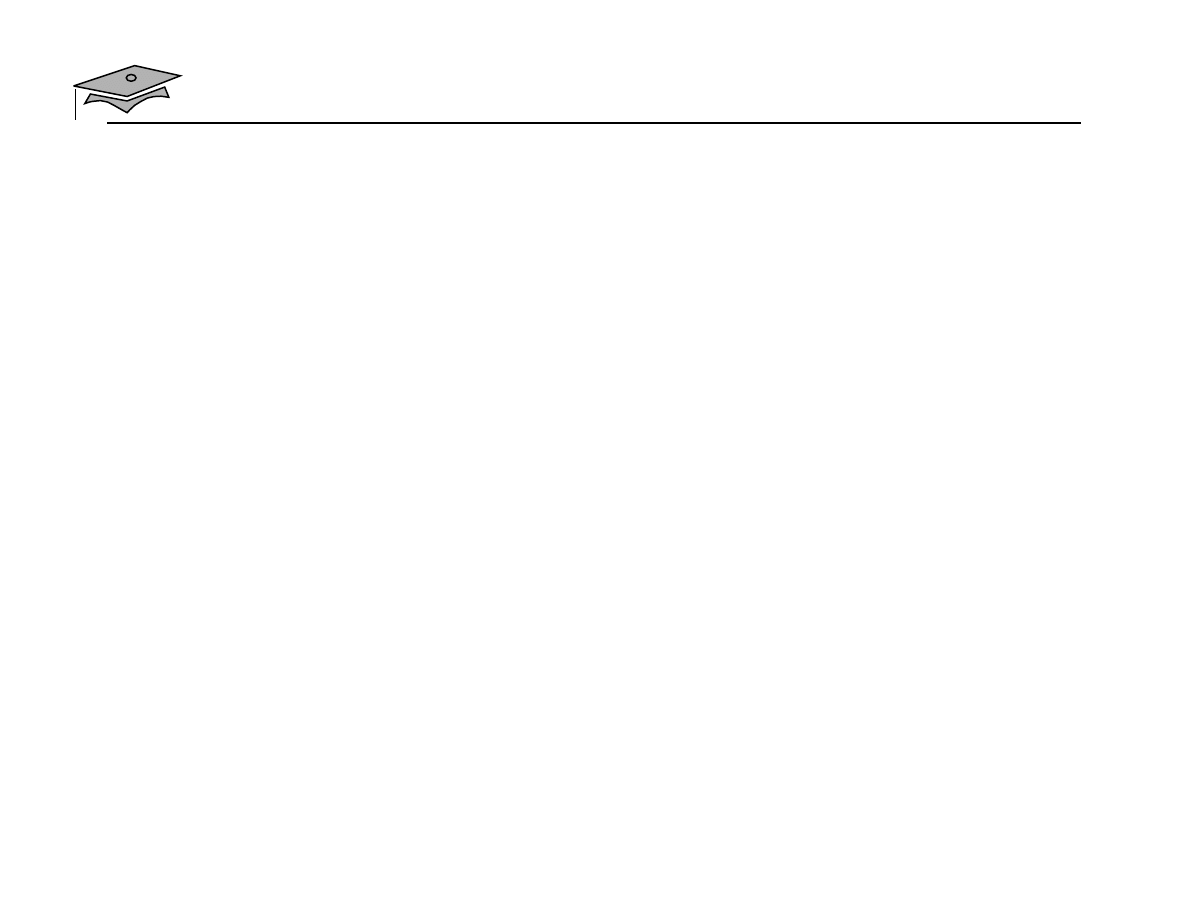
Sun Educational Services
JavaBeans Component Development
Module 12, slide 29 of 31
Copyright 1999 Sun Microsystems, Inc. All Rights Reserved. Enterprise Services November 1999 Revision B.2
Exercise: Writing Applets or
Applications With Beans
• Objective
• Preparation
• Tasks
• Exercise summary
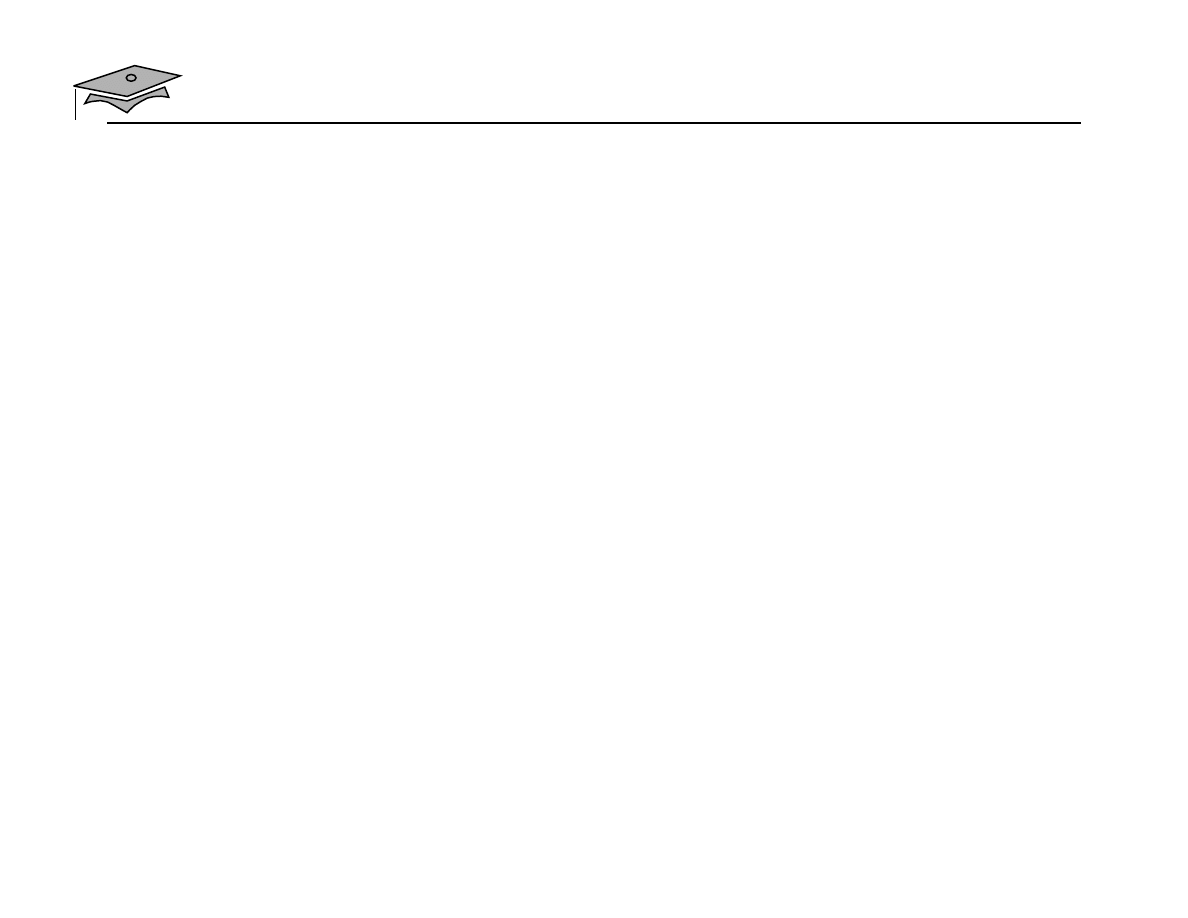
Sun Educational Services
JavaBeans Component Development
Module 12, slide 30 of 31
Copyright 1999 Sun Microsystems, Inc. All Rights Reserved. Enterprise Services November 1999 Revision B.2
Check Your Progress
• Provide examples of the various scenarios for building
beans
• Create an applet that uses existing bean components
and run it in the Applet Viewer
• Create an application that uses bean components
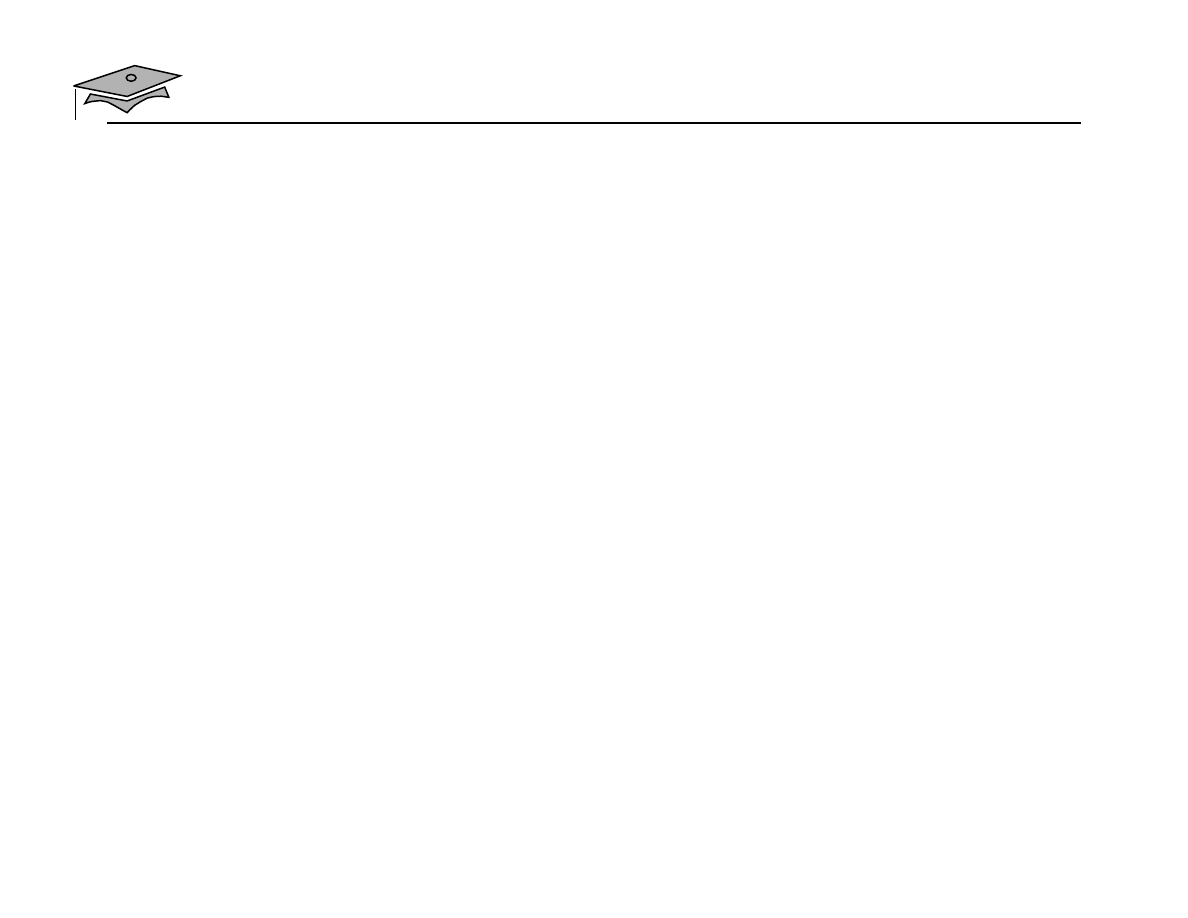
Sun Educational Services
JavaBeans Component Development
Module 12, slide 31 of 31
Copyright 1999 Sun Microsystems, Inc. All Rights Reserved. Enterprise Services November 1999 Revision B.2
Think Beyond
The next module, describes tools that enable you to use beans
in the business environment.
You will also get a preview of the current and future advances
that will make beans easier to use in your enterprise solutions.
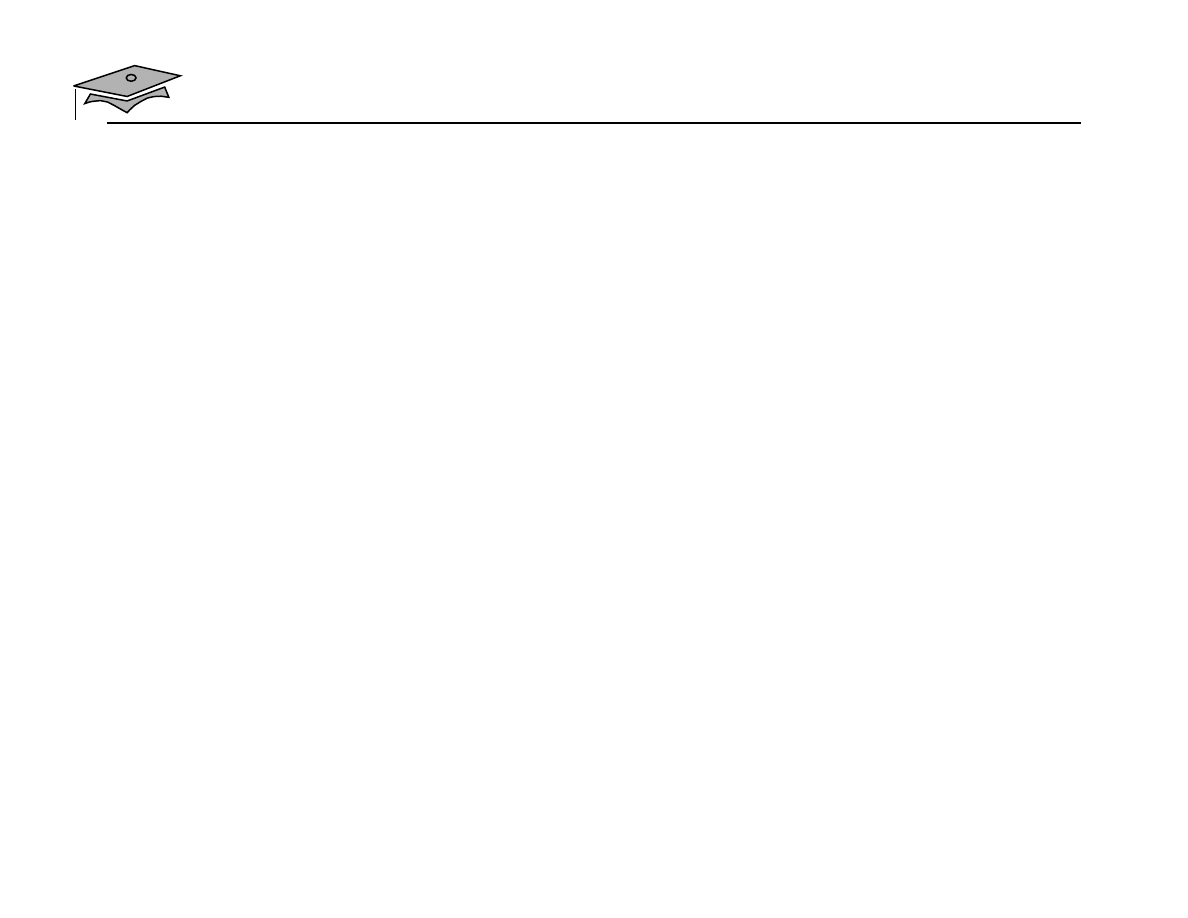
Sun Educational Services
JavaBeans Component Development
November 1999
Module 13
Business Environment
for JavaBeans
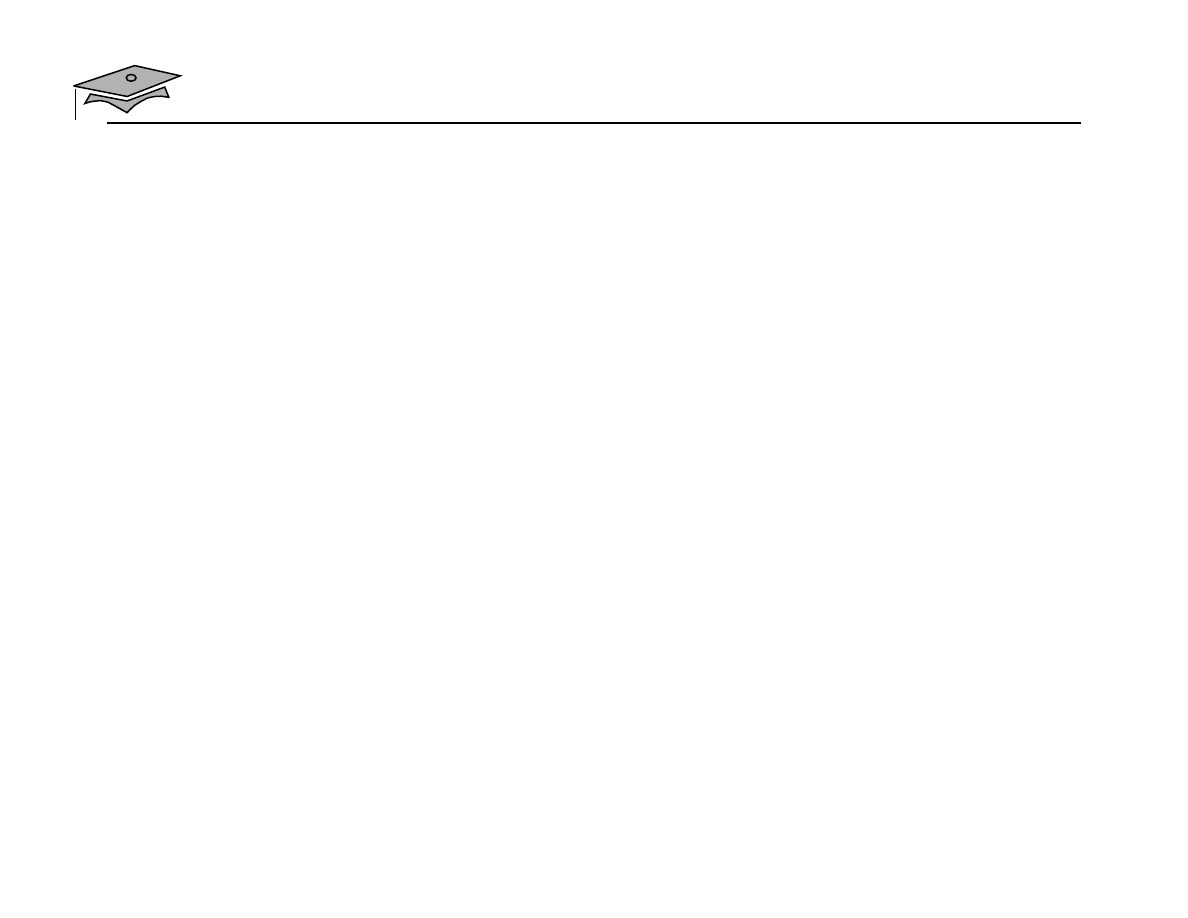
Sun Educational Services
JavaBeans Component Development
Module 13, slide 2 of 34
Copyright 1999 Sun Microsystems, Inc. All Rights Reserved. Enterprise Services November 1999 Revision B.2
Module Overview
• Objectives
• Relevance
• References
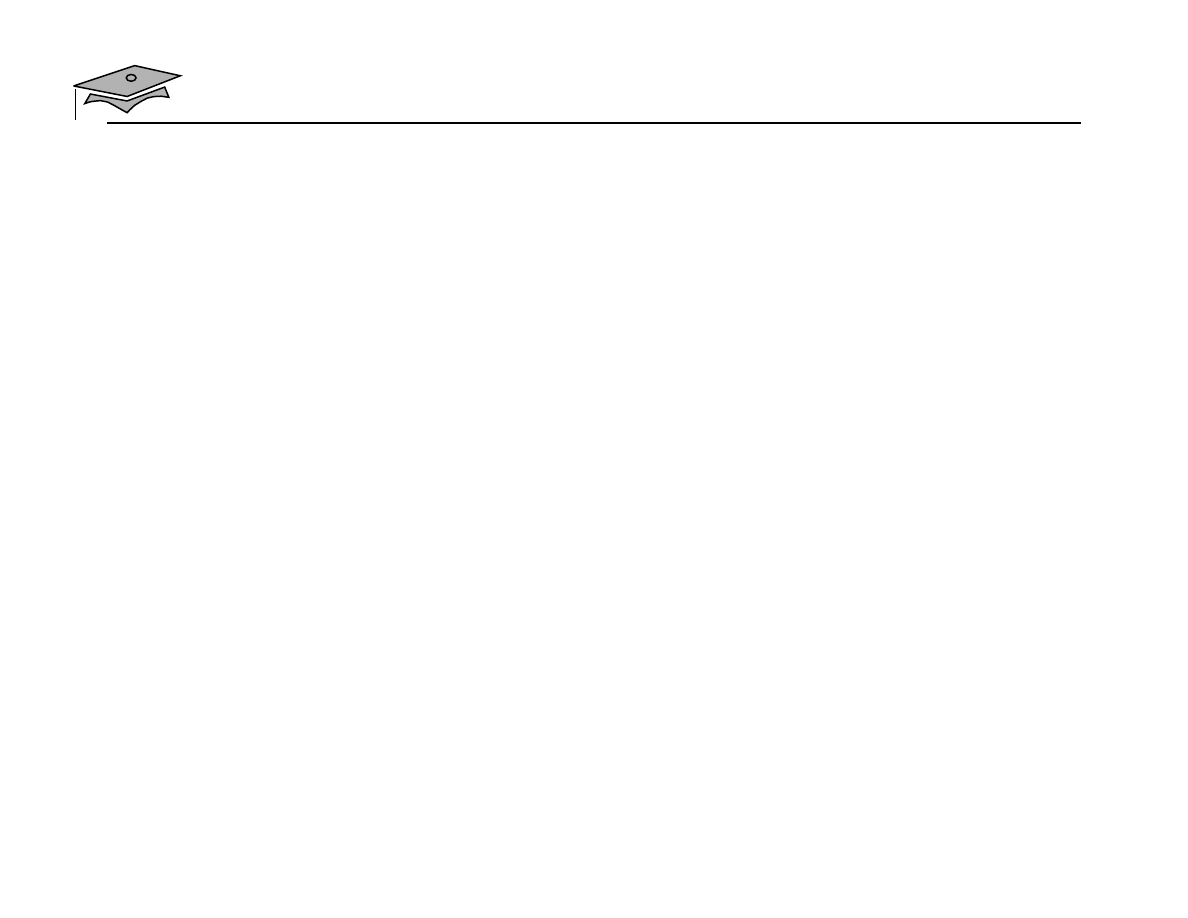
Sun Educational Services
JavaBeans Component Development
Module 13, slide 3 of 34
Copyright 1999 Sun Microsystems, Inc. All Rights Reserved. Enterprise Services November 1999 Revision B.2
“Write Once, Run Anywhere”
• Phrase associated with Java language
• With JavaBeans, the phrase has become:
“Write once, run anywhere, reuse everywhere”
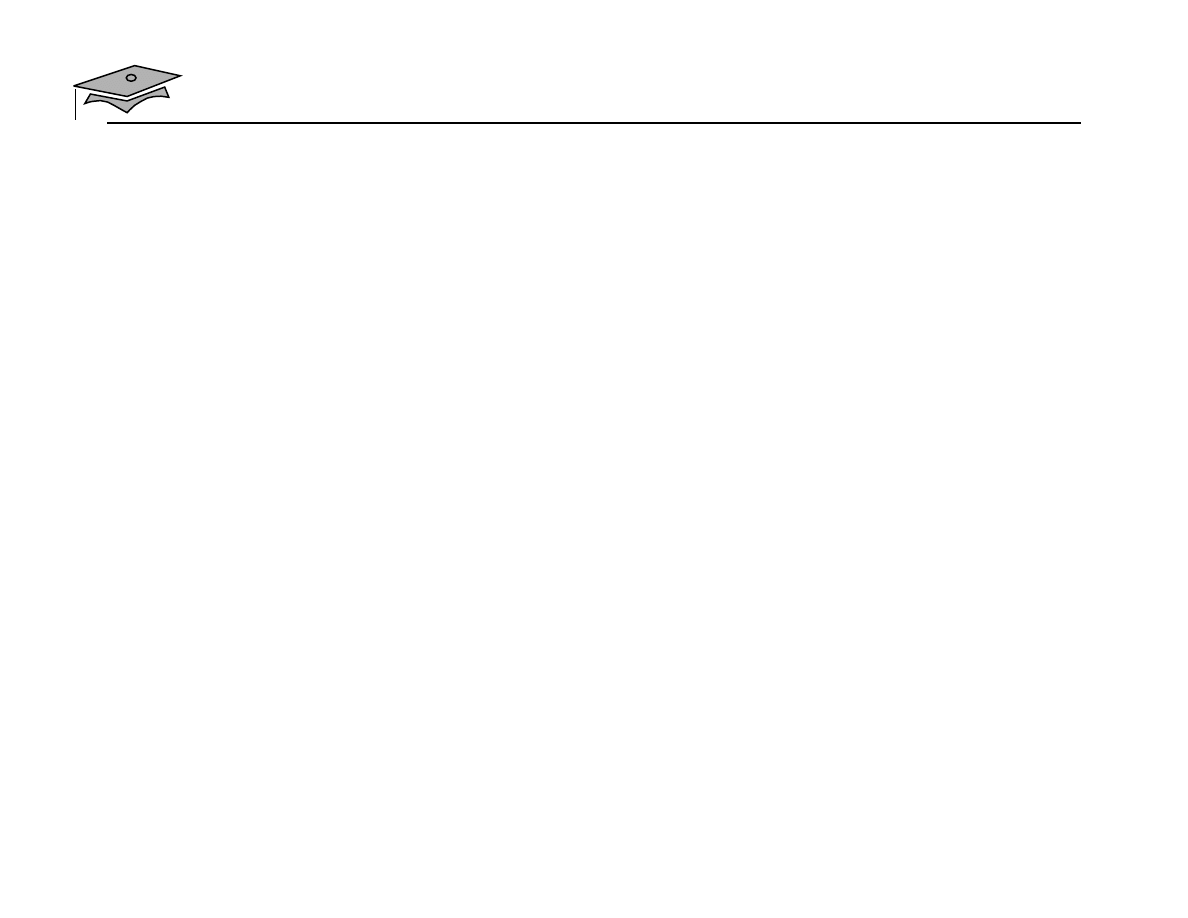
Sun Educational Services
JavaBeans Component Development
Module 13, slide 4 of 34
Copyright 1999 Sun Microsystems, Inc. All Rights Reserved. Enterprise Services November 1999 Revision B.2
Component-based Software Review
• Business influences
• Major elements
• Components
• Containers
• Scripting
• Review of services
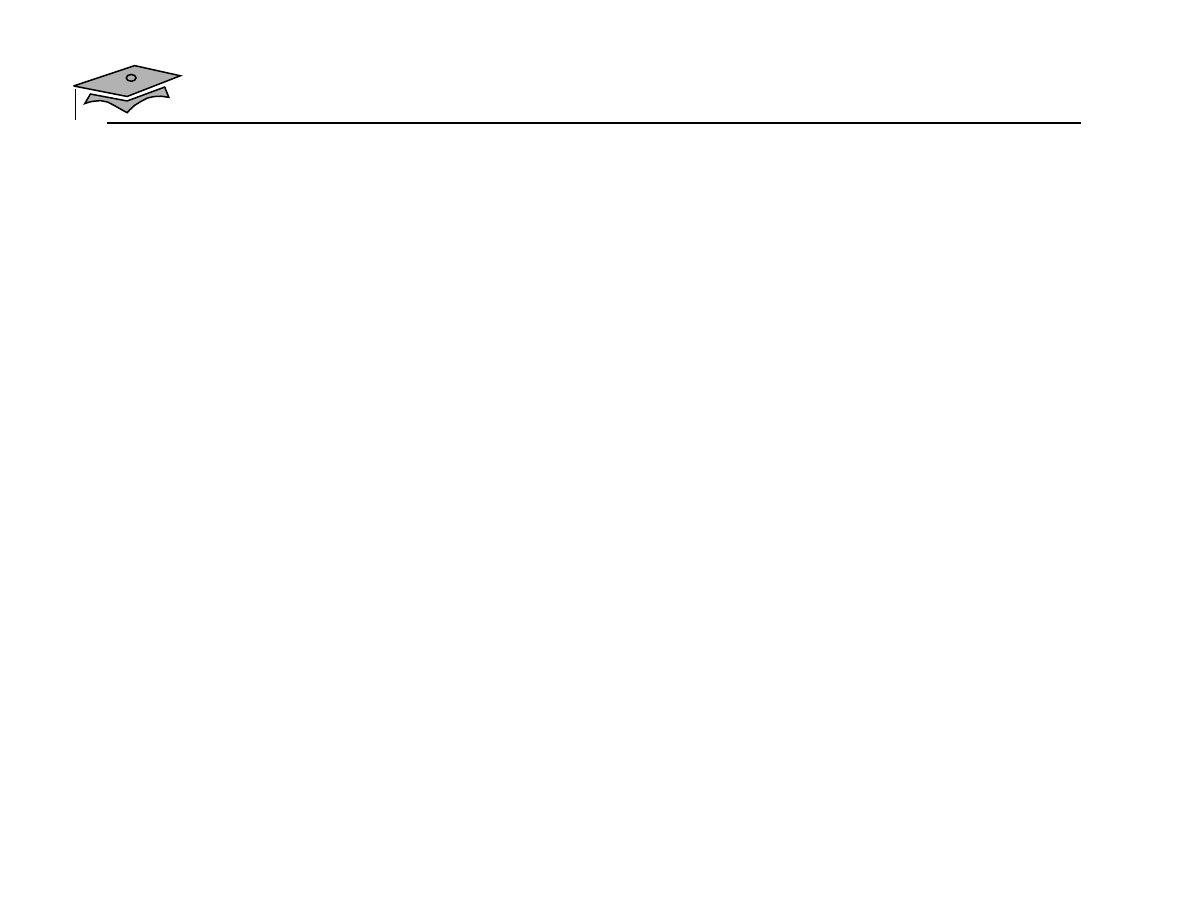
Sun Educational Services
JavaBeans Component Development
Module 13, slide 5 of 34
Copyright 1999 Sun Microsystems, Inc. All Rights Reserved. Enterprise Services November 1999 Revision B.2
Bridging JavaBeans to Other
Component Models
• Other component models in the industry
• Portability to containers
• ActiveX bridge
• JavaBeans Migration Assistant for ActiveX
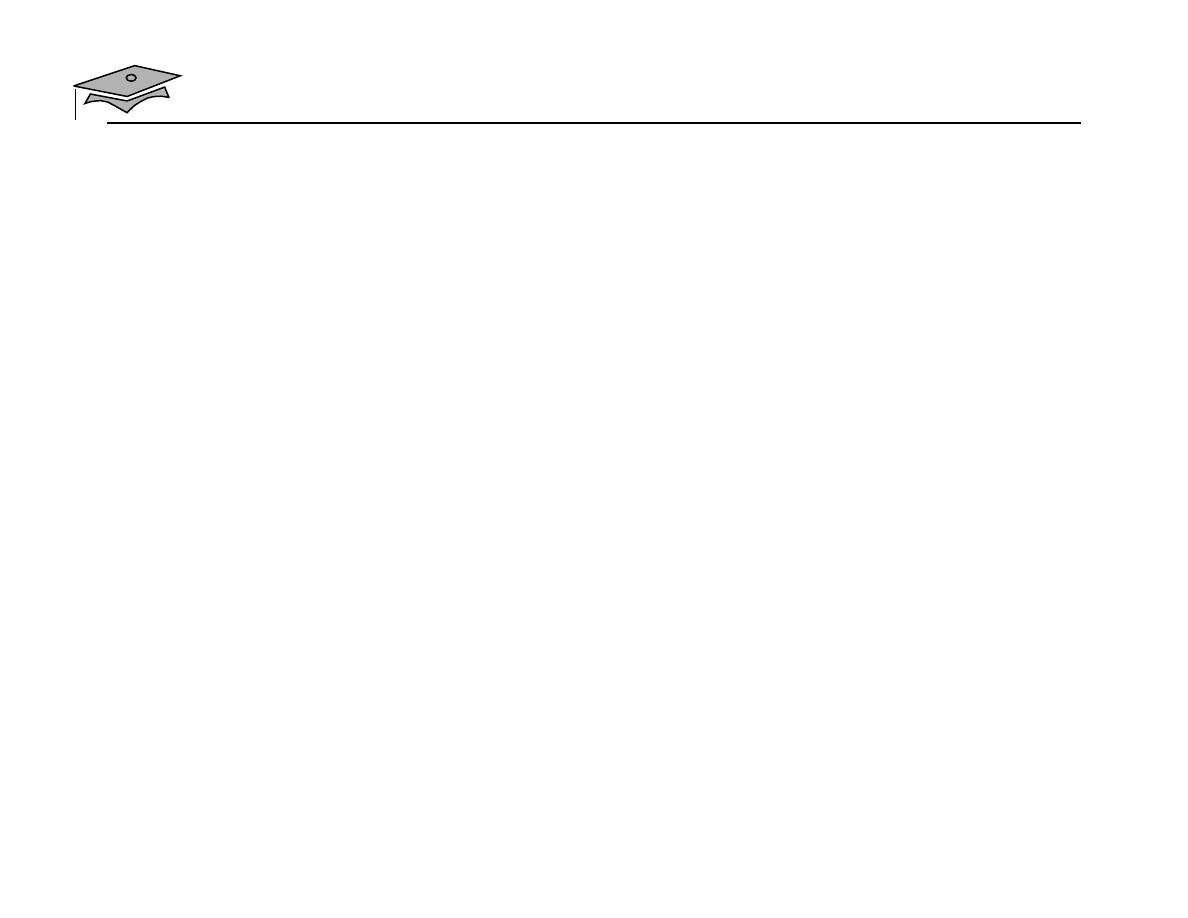
Sun Educational Services
JavaBeans Component Development
Module 13, slide 6 of 34
Copyright 1999 Sun Microsystems, Inc. All Rights Reserved. Enterprise Services November 1999 Revision B.2
Development Environments
• Integrated development environments (IDEs)
• Rapid application development (RAD)
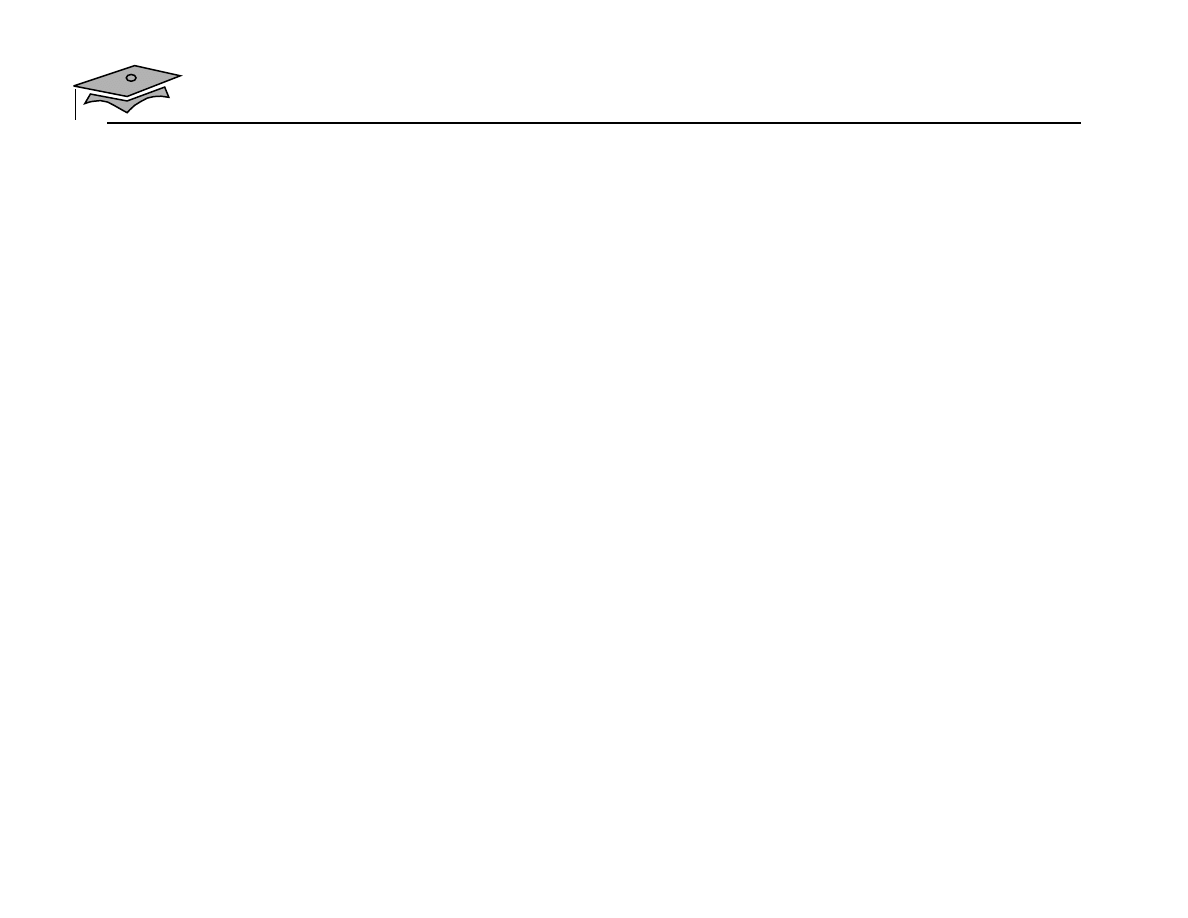
Sun Educational Services
JavaBeans Component Development
Module 13, slide 7 of 34
Copyright 1999 Sun Microsystems, Inc. All Rights Reserved. Enterprise Services November 1999 Revision B.2
Visual Application Builder Tools
• Determining what they are
• Deciding on the tool for you
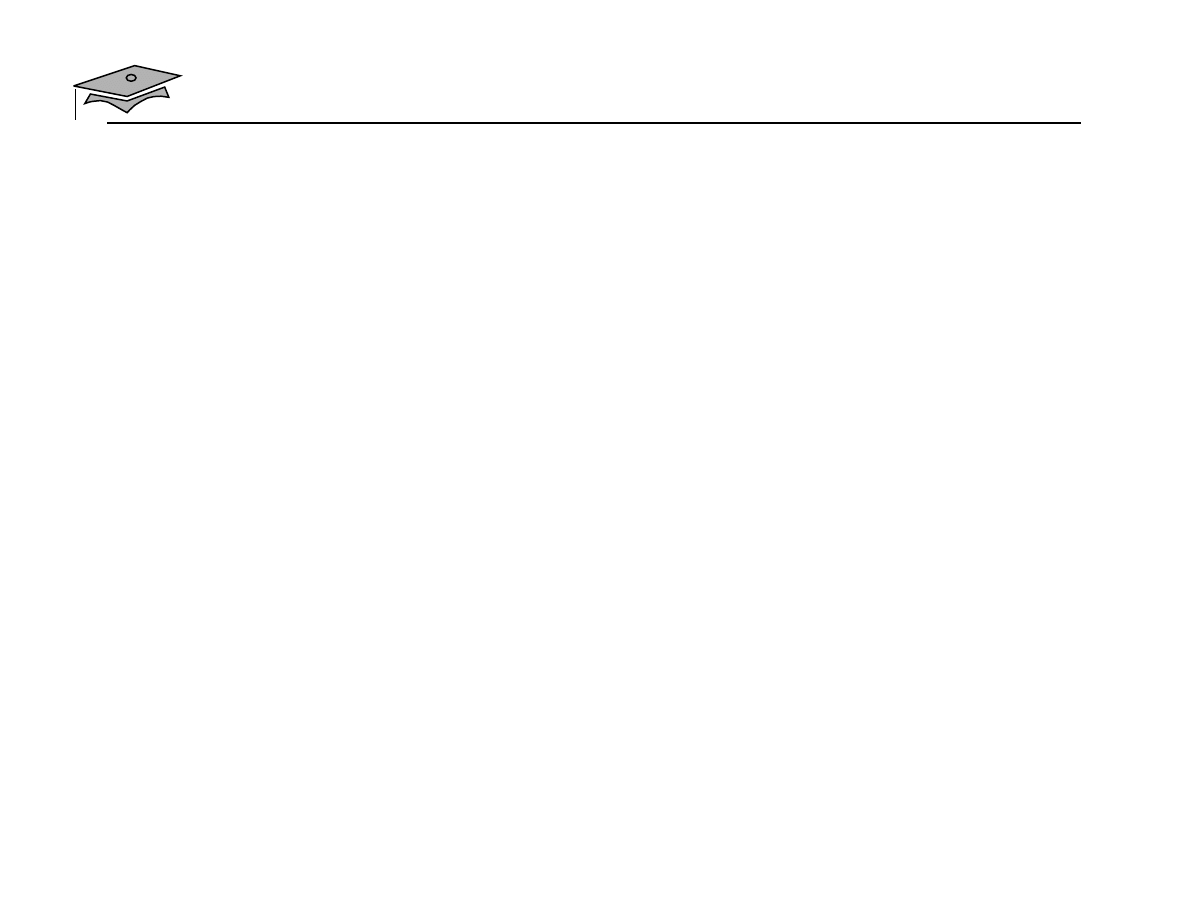
Sun Educational Services
JavaBeans Component Development
Module 13, slide 8 of 34
Copyright 1999 Sun Microsystems, Inc. All Rights Reserved. Enterprise Services November 1999 Revision B.2
JavaBeans Added Capabilities
• Glasgow project
• InfoBus technology
• Packaging
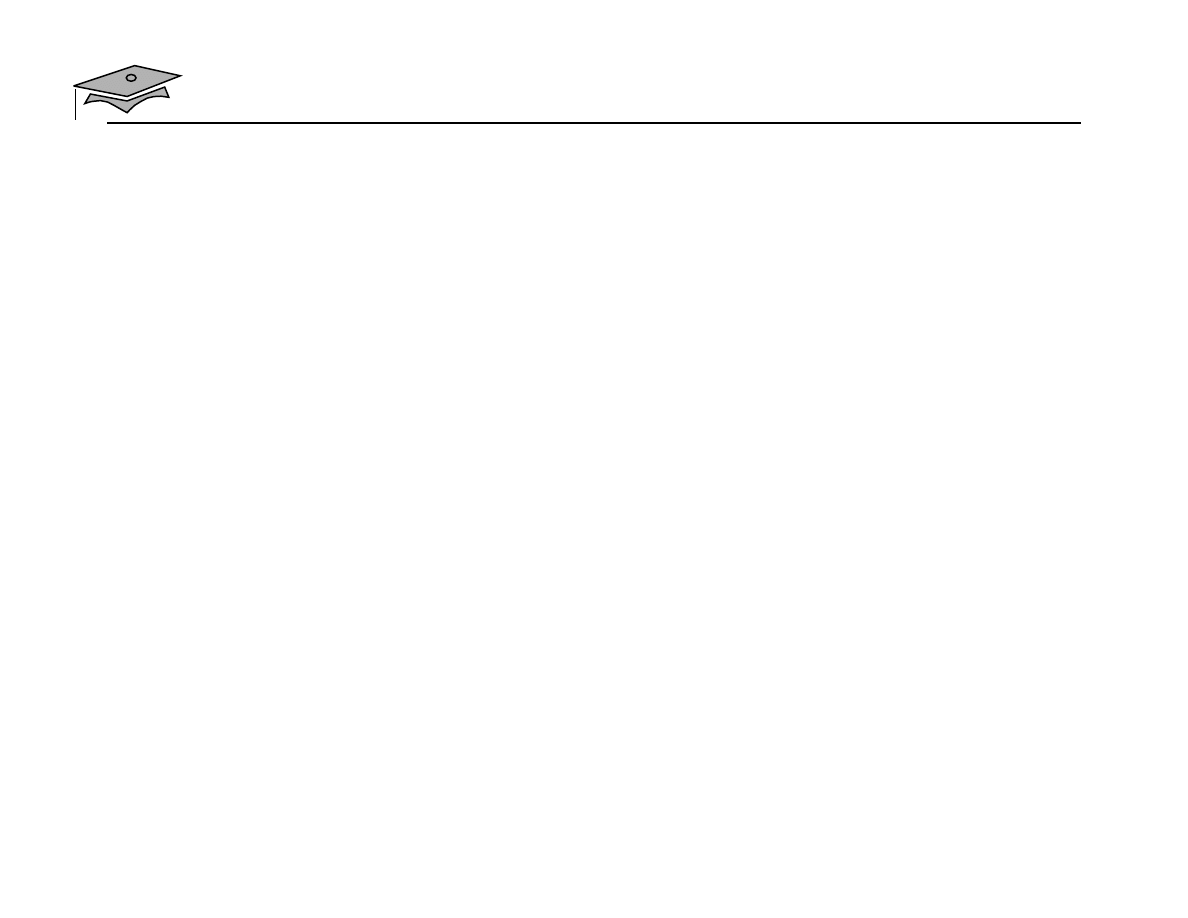
Sun Educational Services
JavaBeans Component Development
Module 13, slide 9 of 34
Copyright 1999 Sun Microsystems, Inc. All Rights Reserved. Enterprise Services November 1999 Revision B.2
Handling or Sharing Data Among
Beans
• How BeanContext, JavaBeans Activation Framework (JAF),
and InfoBus differ
• BeanContext – About rendezvous, hierarchy, and services
• JAF – About associating components with encapsulated
MIME typed external data
• InfoBus – About sharing data between loosely coupled
components
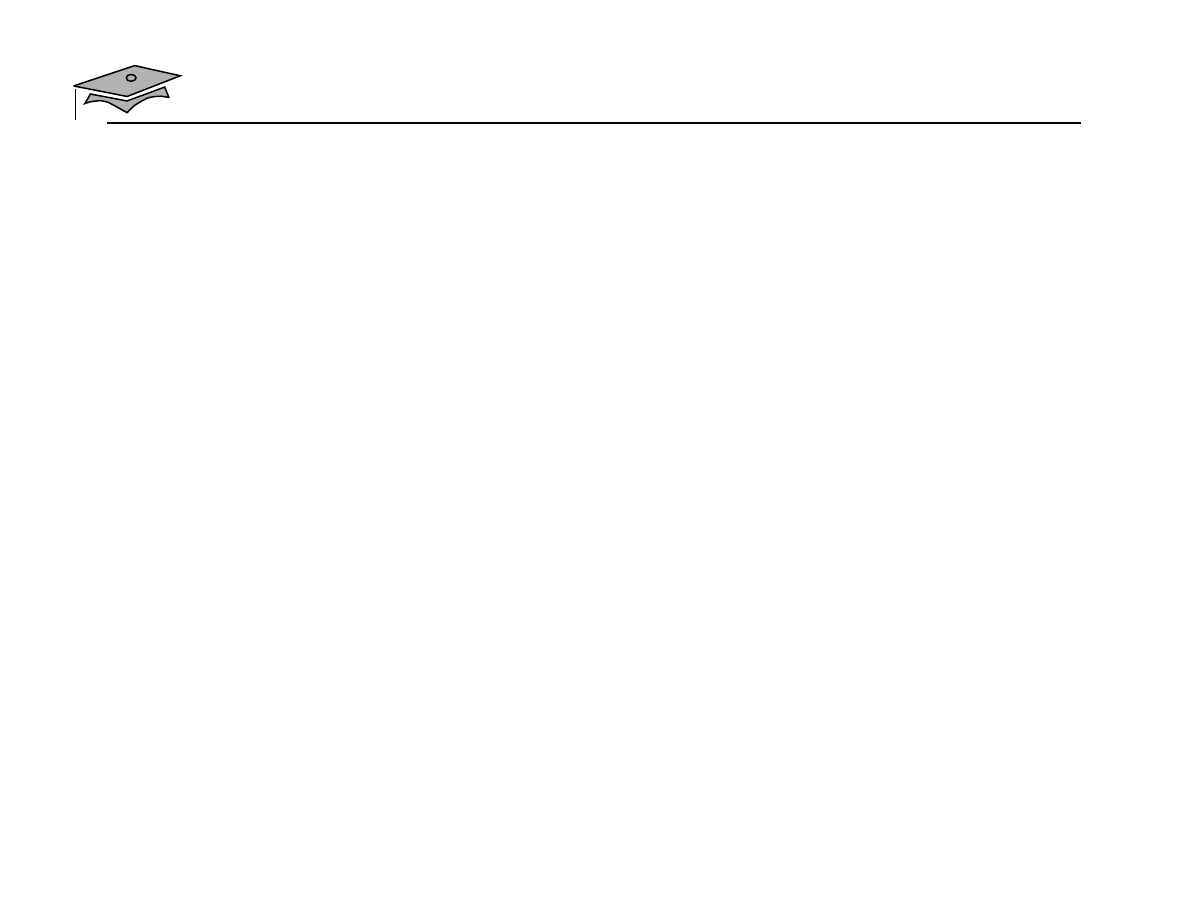
Sun Educational Services
JavaBeans Component Development
Module 13, slide 10 of 34
Copyright 1999 Sun Microsystems, Inc. All Rights Reserved. Enterprise Services November 1999 Revision B.2
InfoBus Technology
• InfoBus technology and JavaBeans
• InfoBus architecture overview
• Data producers
• Data consumers
• Data controllers
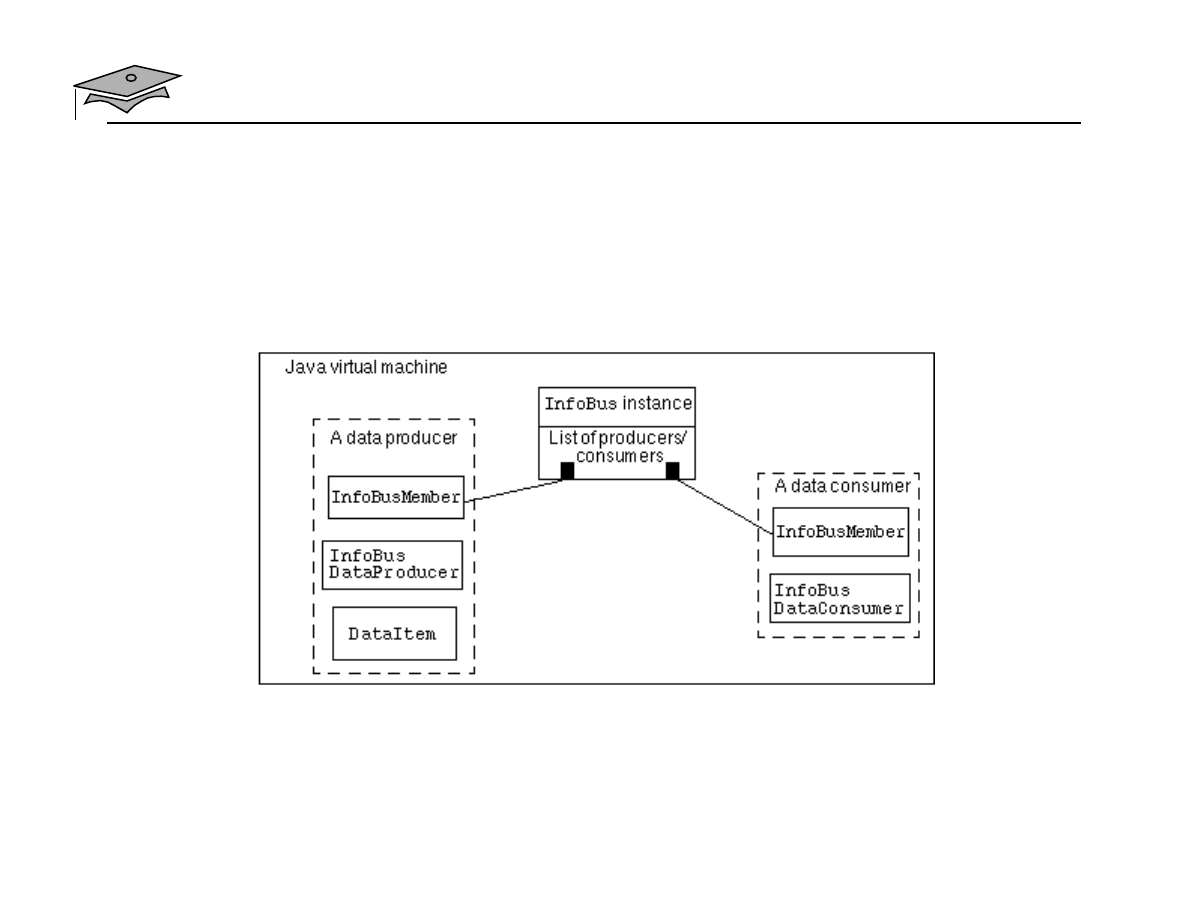
Sun Educational Services
JavaBeans Component Development
Module 13, slide 11 of 34
Copyright 1999 Sun Microsystems, Inc. All Rights Reserved. Enterprise Services November 1999 Revision B.2
Overview of the InfoBus Architecture
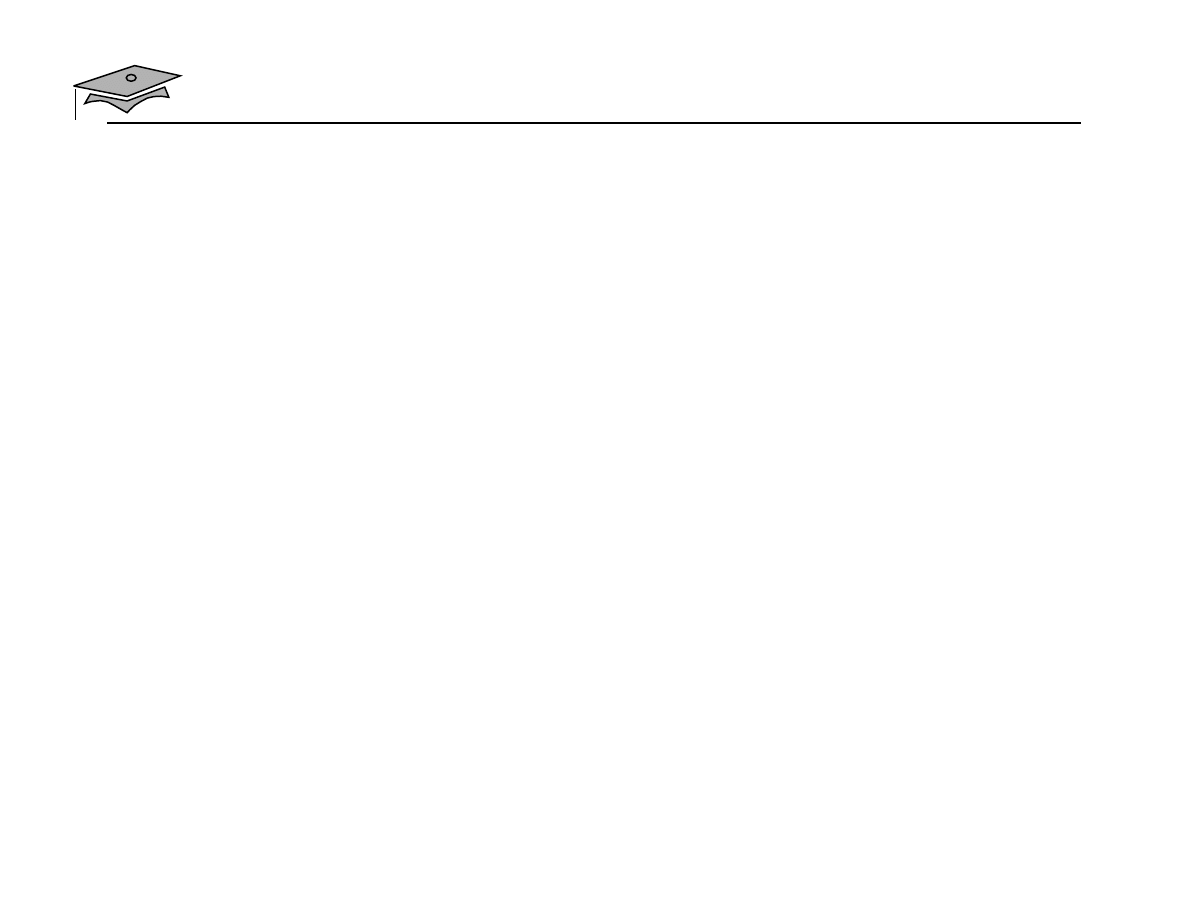
Sun Educational Services
JavaBeans Component Development
Module 13, slide 12 of 34
Copyright 1999 Sun Microsystems, Inc. All Rights Reserved. Enterprise Services November 1999 Revision B.2
InfoBus Classes and Interfaces
•
InfoBus
class
public final class InfoBus extends
java.lang.Object implements
java.beans.PropertyChangeListener
static InfoBus get(java.awt.Component component)
static InfoBus get(java.lang.String busName)
•
InfoBusMember
interface
public abstract interface InfoBusMember
•
getInfoBus
and
setInfoBus
methods
• InfoBus property (bound and constrained)
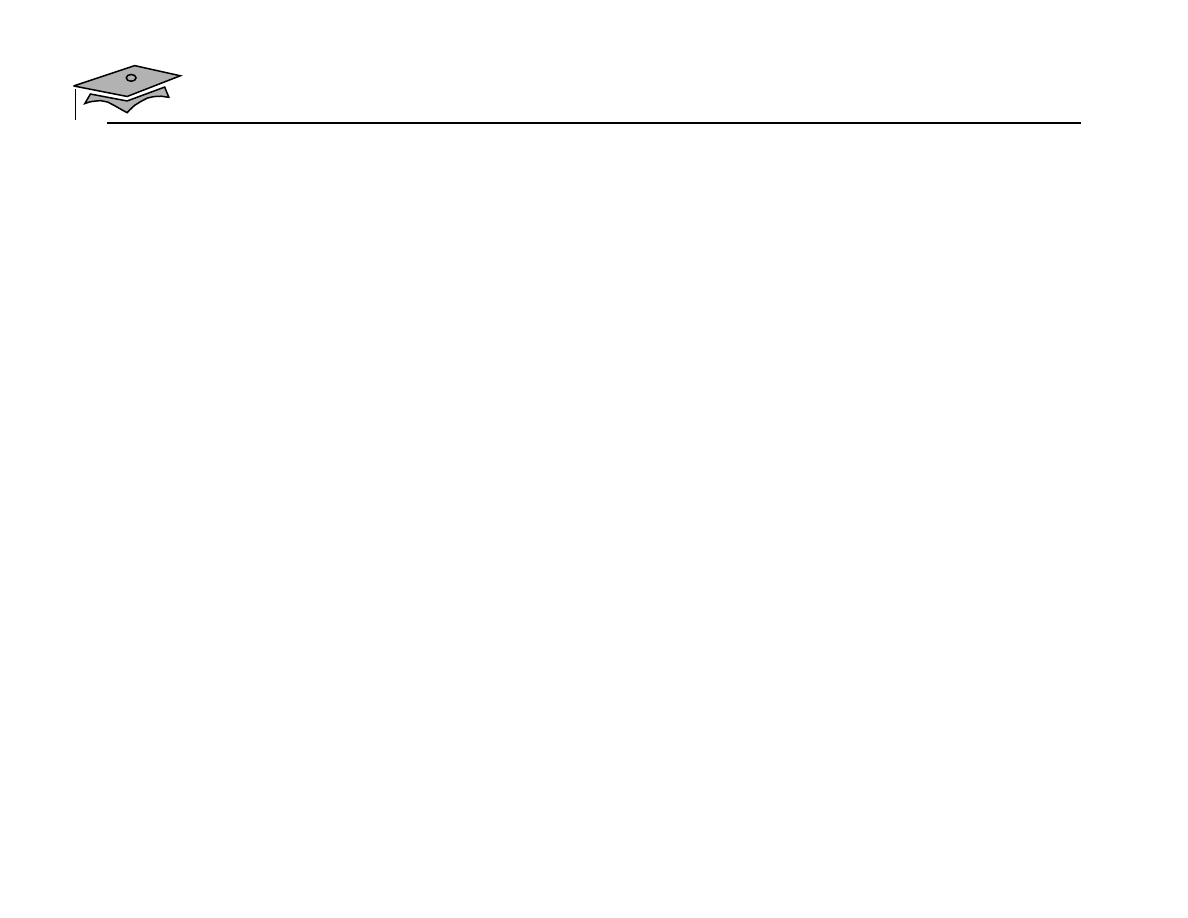
Sun Educational Services
JavaBeans Component Development
Module 13, slide 13 of 34
Copyright 1999 Sun Microsystems, Inc. All Rights Reserved. Enterprise Services November 1999 Revision B.2
InfoBus Classes and Interfaces
•
InfoBusDataProducer
interface
public abstract interface InfoBusDataProducer
extends InfoBusEventListener
•
InfoBusDataConsumer
interface
public abstract interface InfoBusDataConsumer
extends InfoBusEventListener
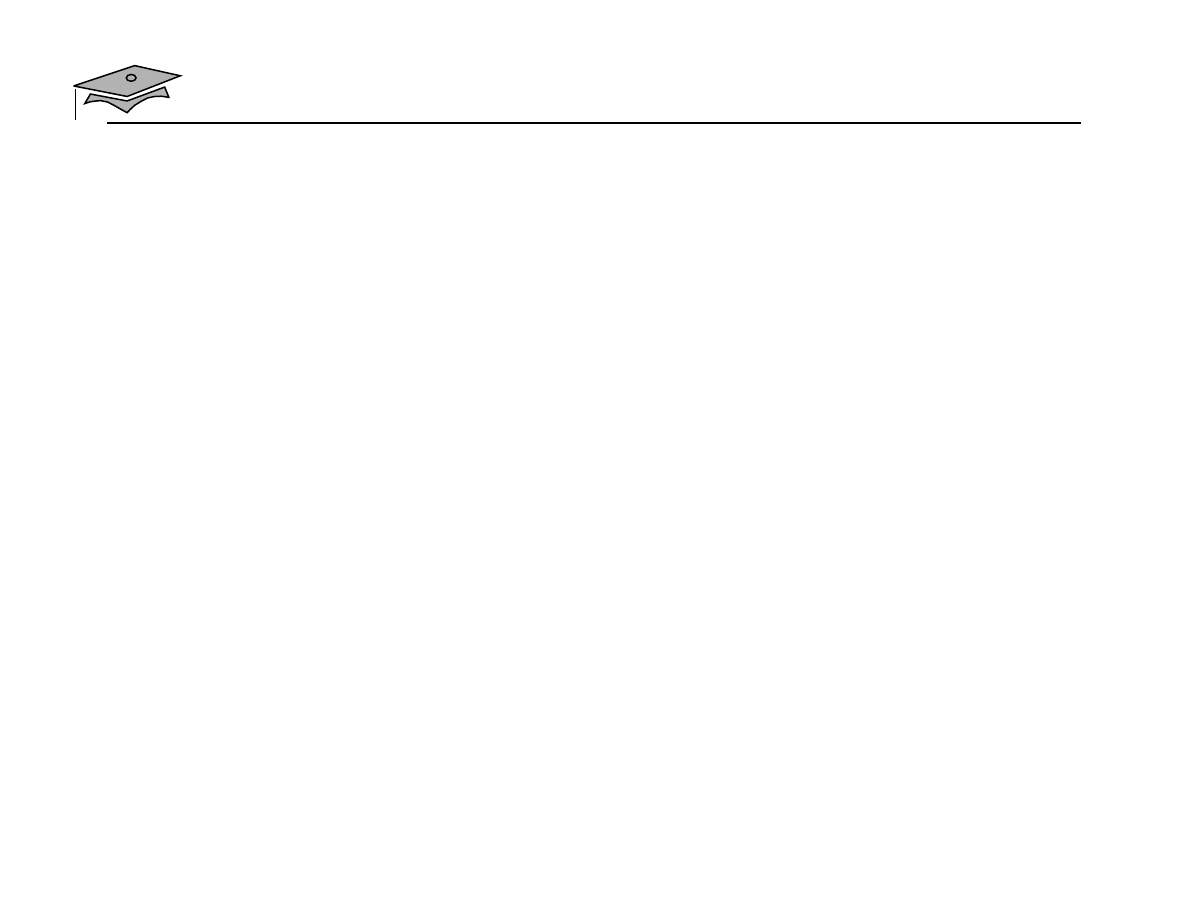
Sun Educational Services
JavaBeans Component Development
Module 13, slide 14 of 34
Copyright 1999 Sun Microsystems, Inc. All Rights Reserved. Enterprise Services November 1999 Revision B.2
Code Samples From the InfoBus
Software
public class RowsetSource extends Applet
implements InfoBusMember, InfoBusDataProducer
and
public class SimpleConsumerBean extends Applet
implements InfoBusBean, InfoBusDataConsumer,
PropertyChangeListener,
DataItemChangeListener,
java.awt.event.ItemListener
and
public class SampleConsumer extends Applet
implements InfoBusMember,InfoBusDataProducer,
InfoBusDataConsumer,DataItemChangeListener,
ActionListener, ItemListener
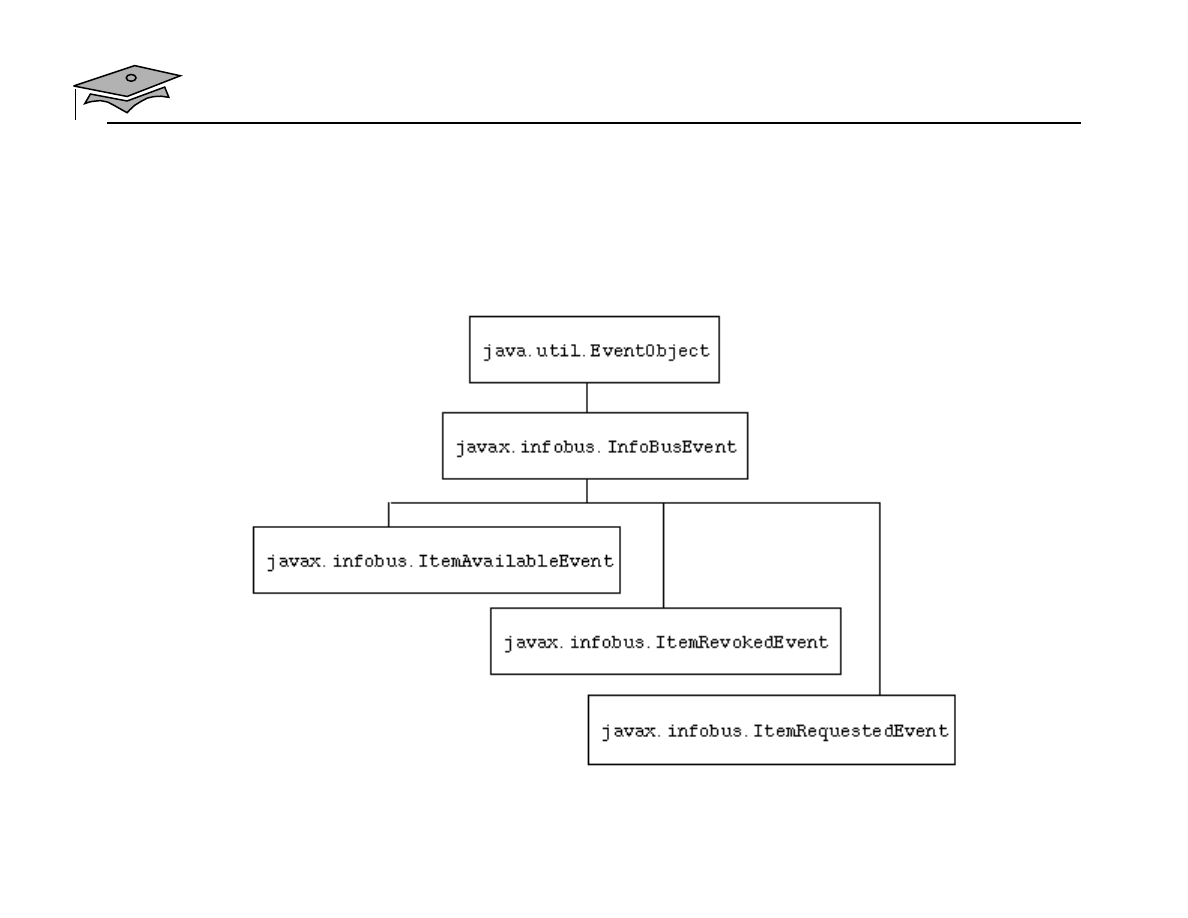
Sun Educational Services
JavaBeans Component Development
Module 13, slide 15 of 34
Copyright 1999 Sun Microsystems, Inc. All Rights Reserved. Enterprise Services November 1999 Revision B.2
InfoBus Events
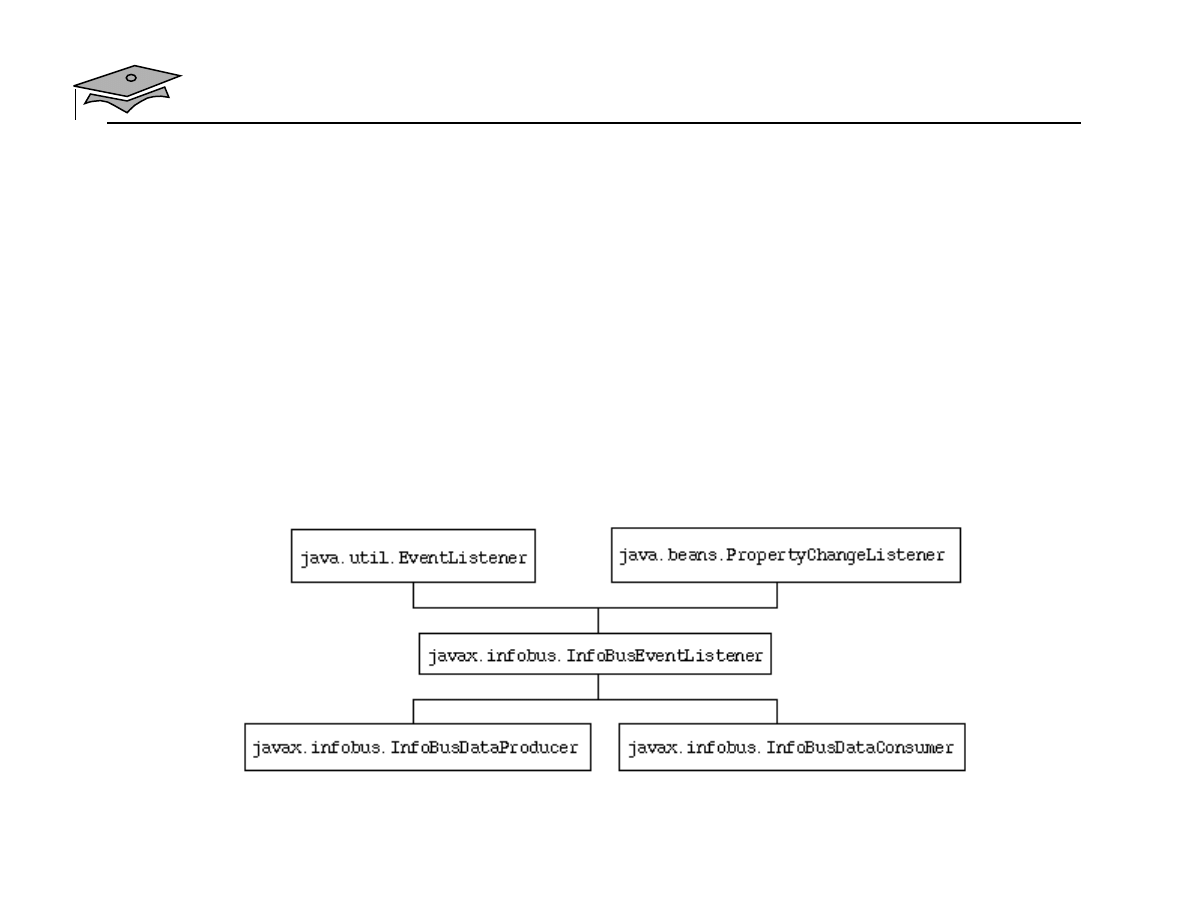
Sun Educational Services
JavaBeans Component Development
Module 13, slide 16 of 34
Copyright 1999 Sun Microsystems, Inc. All Rights Reserved. Enterprise Services November 1999 Revision B.2
InfoBus Event Listeners
•
InfoBusItemAvailableEvent
•
InfoBusItemRevokedEvent
•
InfoBusItemRequestedEvent
• Event handlers
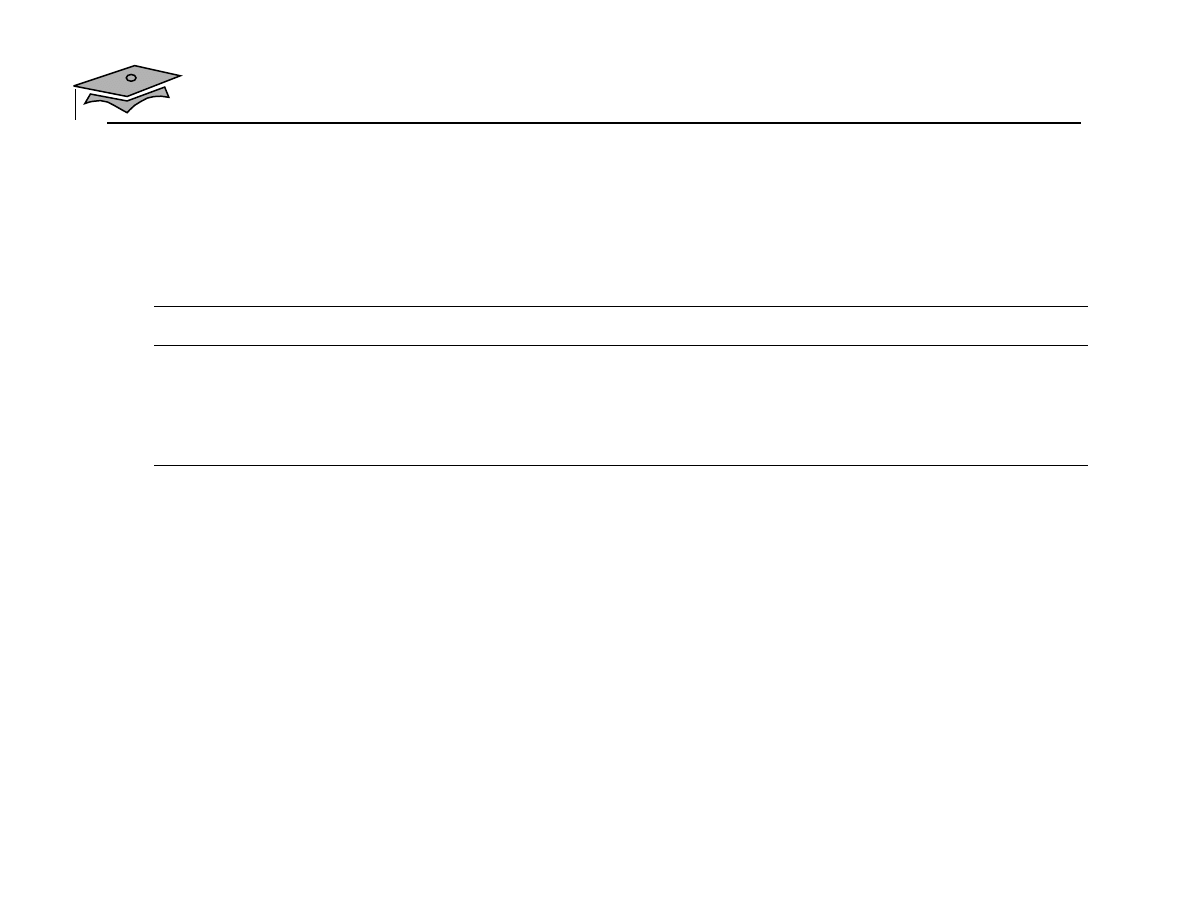
Sun Educational Services
JavaBeans Component Development
Module 13, slide 17 of 34
Copyright 1999 Sun Microsystems, Inc. All Rights Reserved. Enterprise Services November 1999 Revision B.2
Events, Firing Methods, and Handlers
Events
InfoBus Methods
Consumer Methods
Producer Methods
InfoBusItemAvailableEvent
fireItemAvailable
dataItemAvailable
InfoBusItemRevokedEvent
fireItemRevoked
dataItemRevoked
InfoBusRequestedEvent
findDataItem
findMultipleDataItems
dataItemRequested
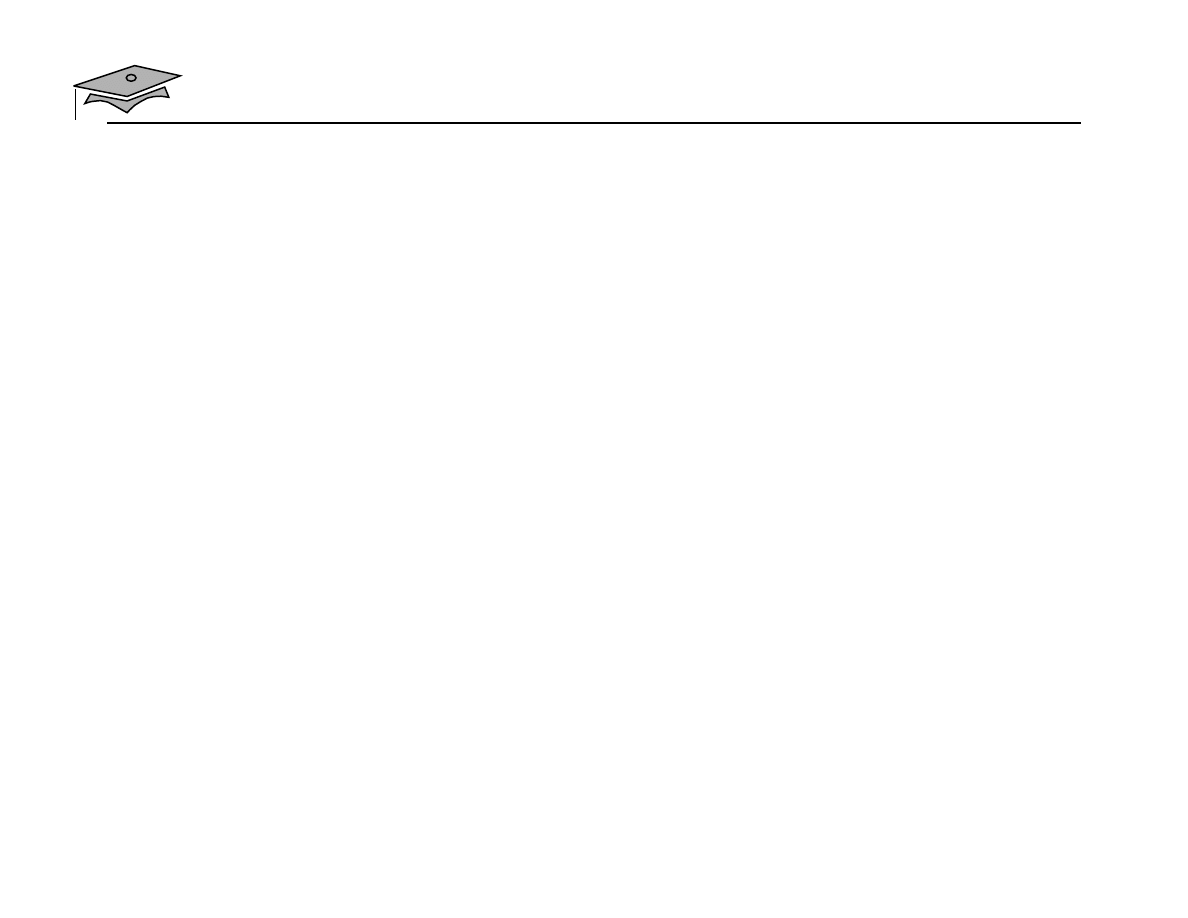
Sun Educational Services
JavaBeans Component Development
Module 13, slide 18 of 34
Copyright 1999 Sun Microsystems, Inc. All Rights Reserved. Enterprise Services November 1999 Revision B.2
InfoBus
DataItem
Interface
• Interface definition
public abstract interface DataItem
• Access interfaces
•
ImmediateAccess
•
ArrayAccess
•
RowsetAccess
•
ScrollableRowsetAccess
•
DbAccess
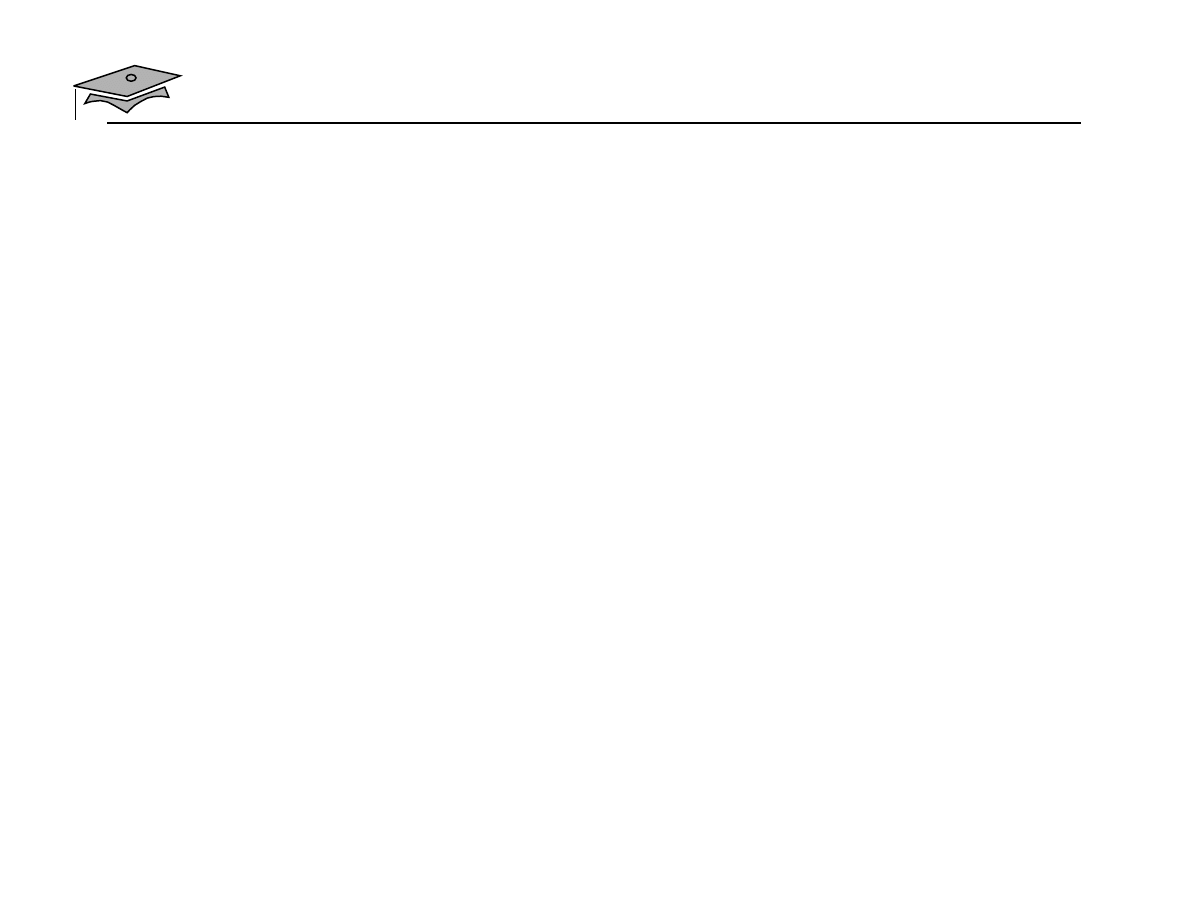
Sun Educational Services
JavaBeans Component Development
Module 13, slide 19 of 34
Copyright 1999 Sun Microsystems, Inc. All Rights Reserved. Enterprise Services November 1999 Revision B.2
Sample
DataItem
s From the InfoBus
Software
public class MonetaryDataItem implements
ImmediateAccess, DataItem, DataItemChangeManager
public class SimpleDataItem implements
ImmediateAccess, DataItem, DataItemChangeManager,
InfoBusPropertyMap
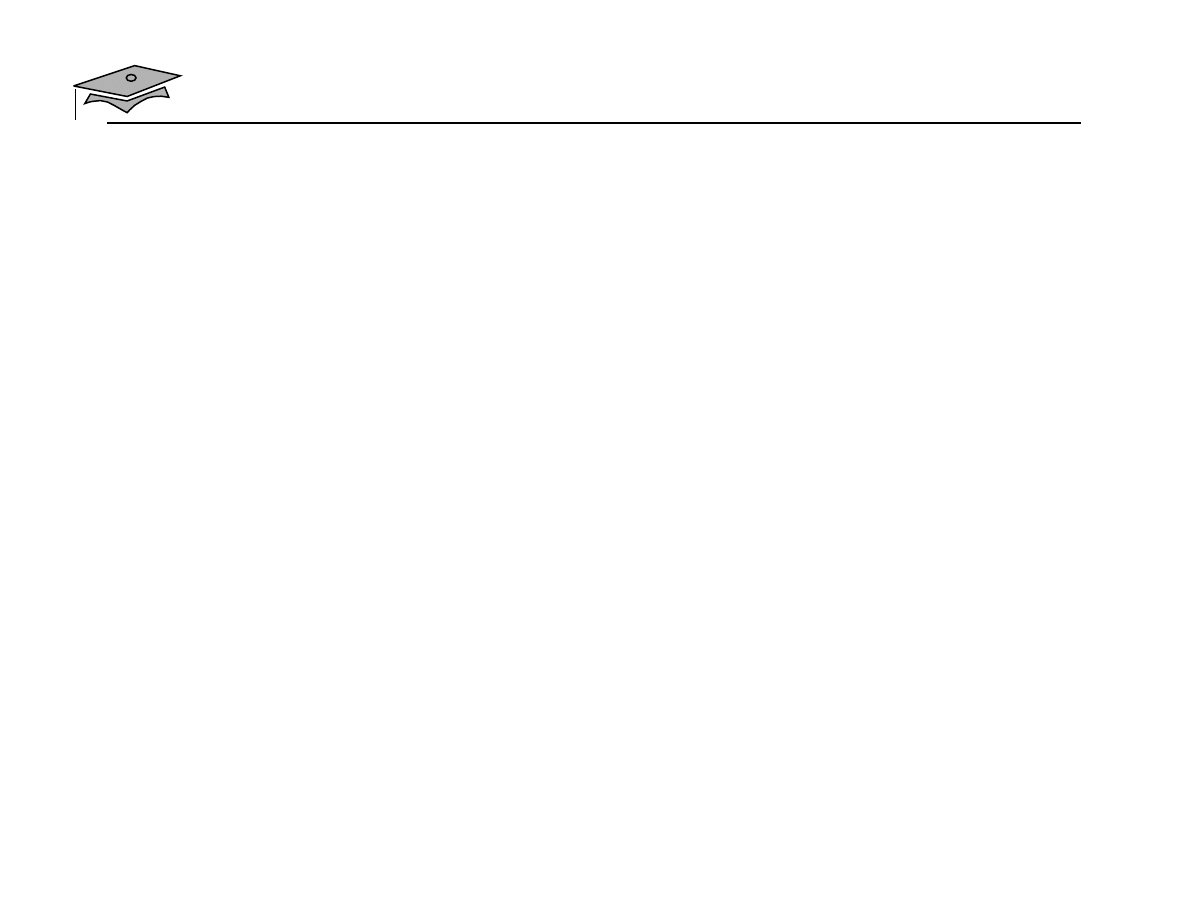
Sun Educational Services
JavaBeans Component Development
Module 13, slide 20 of 34
Copyright 1999 Sun Microsystems, Inc. All Rights Reserved. Enterprise Services November 1999 Revision B.2
Miscellaneous
•
DataController
s
•
InfoBusPolicyHelper interface
• Guidelines for well-behaved InfoBus components
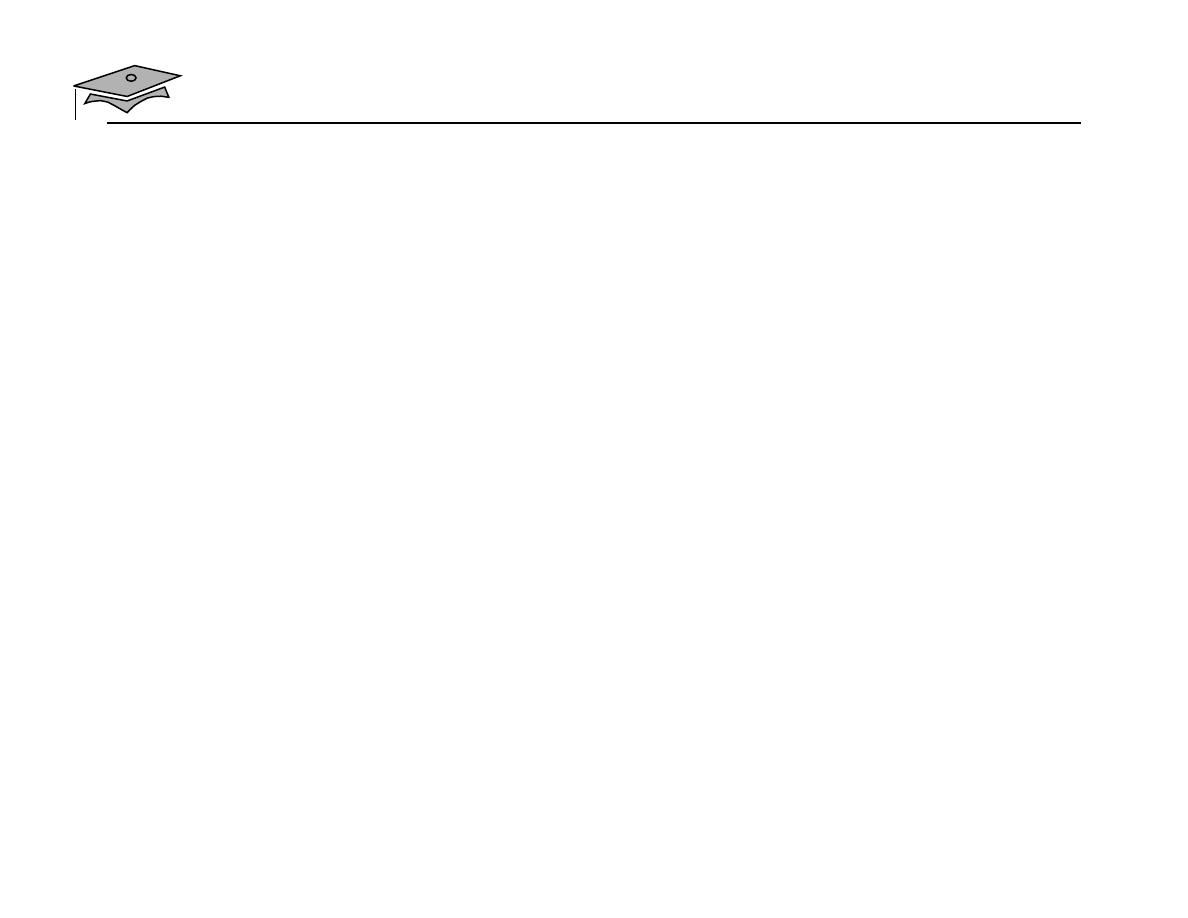
Sun Educational Services
JavaBeans Component Development
Module 13, slide 21 of 34
Copyright 1999 Sun Microsystems, Inc. All Rights Reserved. Enterprise Services November 1999 Revision B.2
JavaBeans
beancontext
Package
• Provides a logical, traversable, hierarchy of JavaBeans
• Provides a mechanism for a bean to obtain services from its
environment
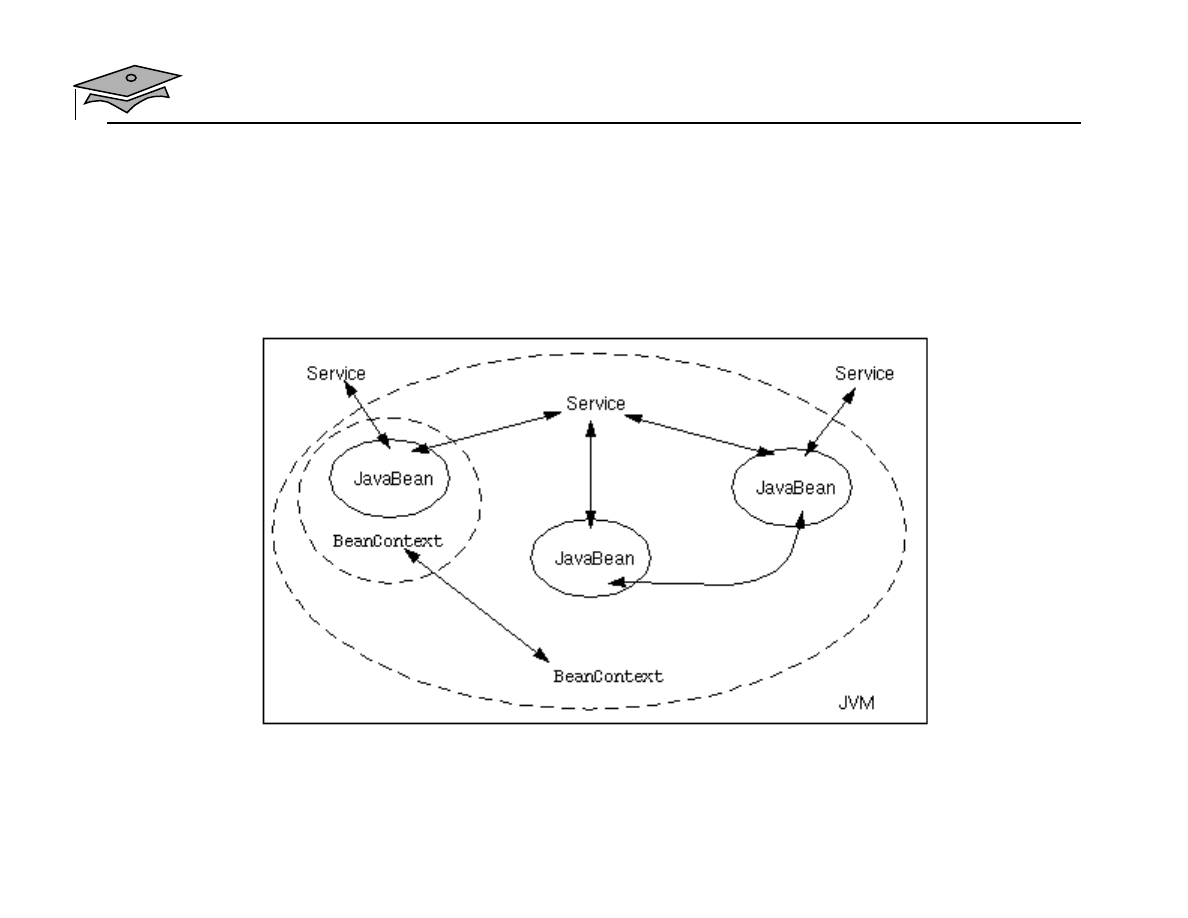
Sun Educational Services
JavaBeans Component Development
Module 13, slide 22 of 34
Copyright 1999 Sun Microsystems, Inc. All Rights Reserved. Enterprise Services November 1999 Revision B.2
Beans and BeanContexts
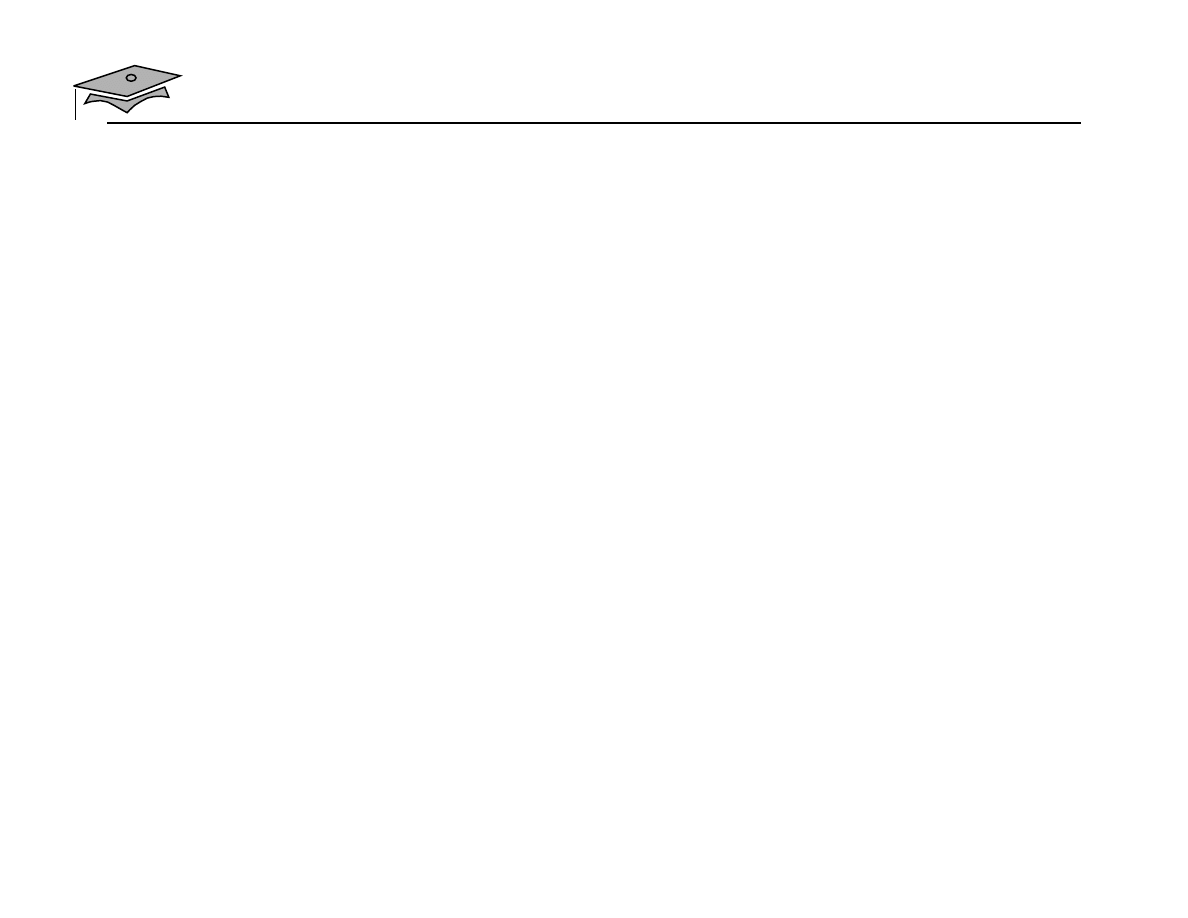
Sun Educational Services
JavaBeans Component Development
Module 13, slide 23 of 34
Copyright 1999 Sun Microsystems, Inc. All Rights Reserved. Enterprise Services November 1999 Revision B.2
BeanContext
Interface
public interface BeanContext extends
BeanContextChild, Collection, DesignMode,
Visibility {...}
• Methods
•
instantiateChild
•
getResourceAsStream
•
addBeanContextMembershipListener
• Lock –
globalHierarchyLock
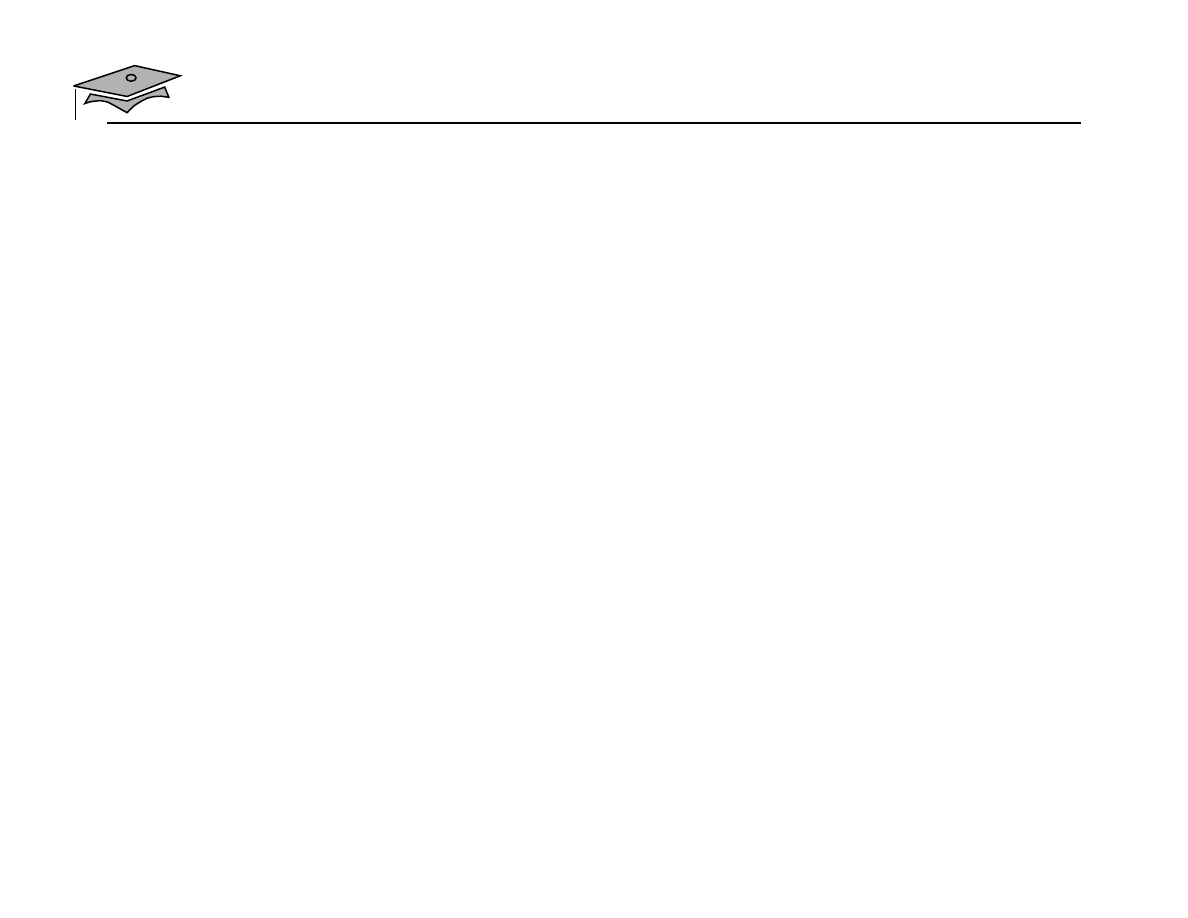
Sun Educational Services
JavaBeans Component Development
Module 13, slide 24 of 34
Copyright 1999 Sun Microsystems, Inc. All Rights Reserved. Enterprise Services November 1999 Revision B.2
BeanContextServices
Interface
•
addService
•
revokeService
•
hasService
•
getService
•
releaseService
•
getCurrentServiceClasses
•
getCurrentServiceSelectors
•
add/removeBeanContextServicesListener
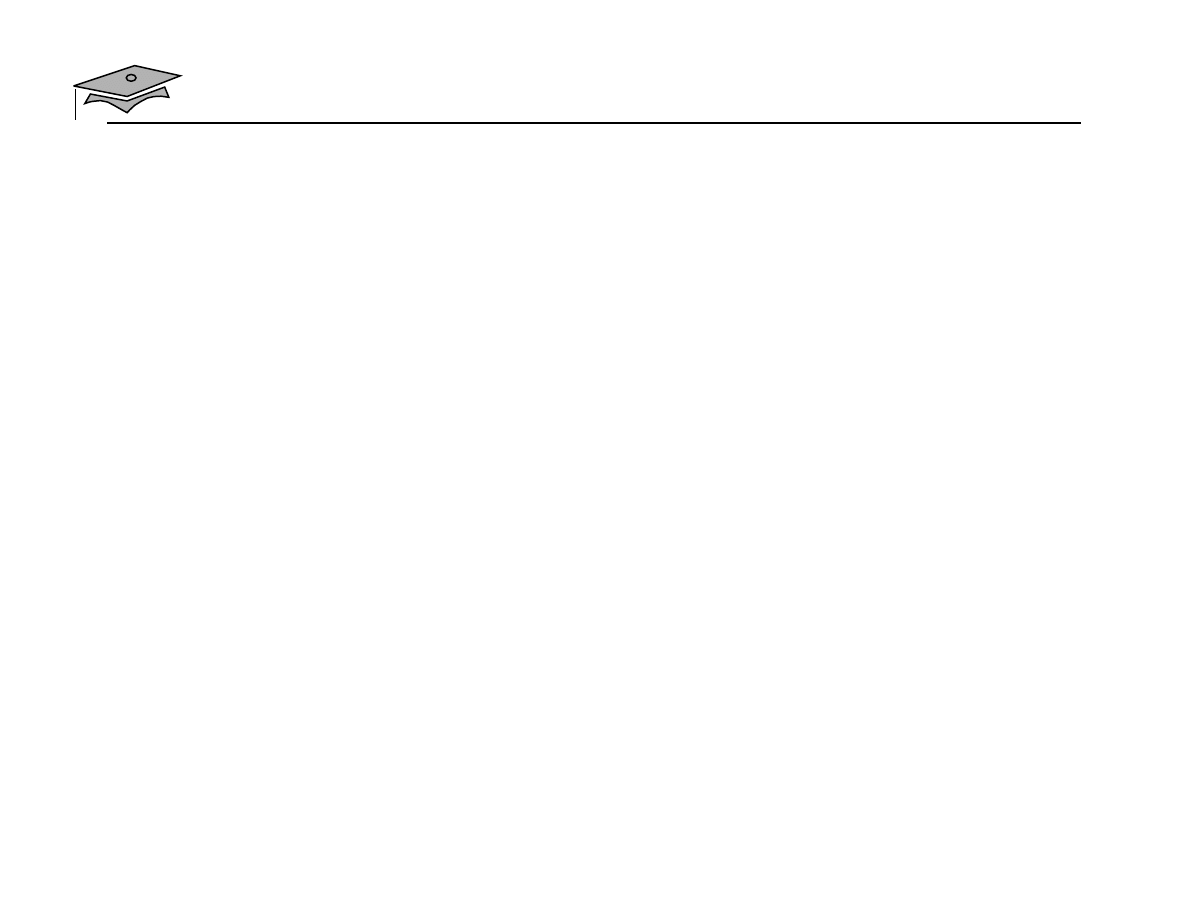
Sun Educational Services
JavaBeans Component Development
Module 13, slide 25 of 34
Copyright 1999 Sun Microsystems, Inc. All Rights Reserved. Enterprise Services November 1999 Revision B.2
Providing a Bean With a
BeanContext
Beans.instantiate(classloader cl, String beanName,
BeanContext beanCtxt)
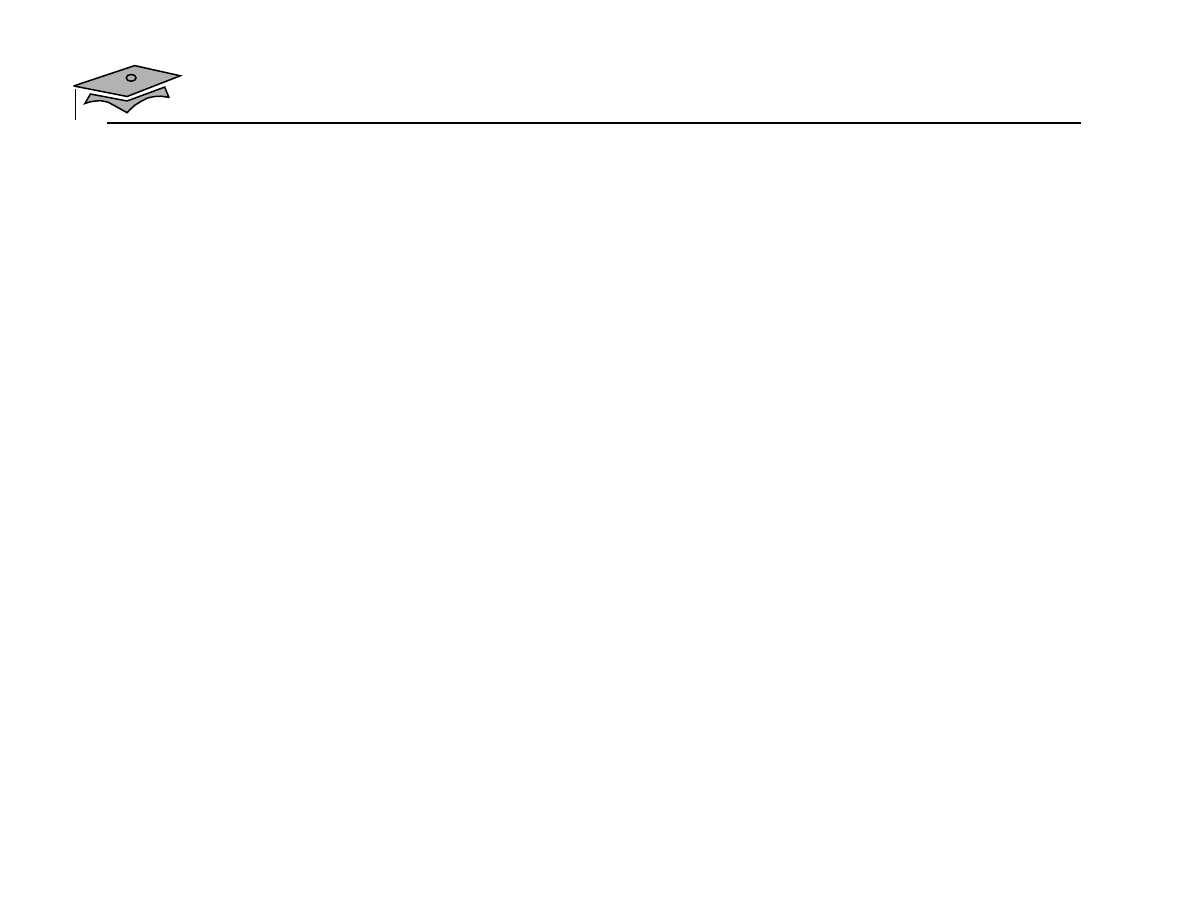
Sun Educational Services
JavaBeans Component Development
Module 13, slide 26 of 34
Copyright 1999 Sun Microsystems, Inc. All Rights Reserved. Enterprise Services November 1999 Revision B.2
BeanContext
Support for Applets
Beans.instantiate(classloader cl, String beanName,
BeanContext beanCtxt, AppletInitializer ai)
•
ai.initialize(applet, beanCtxt)
• Whatconformantimplementationsof
AppletInitializer
provide
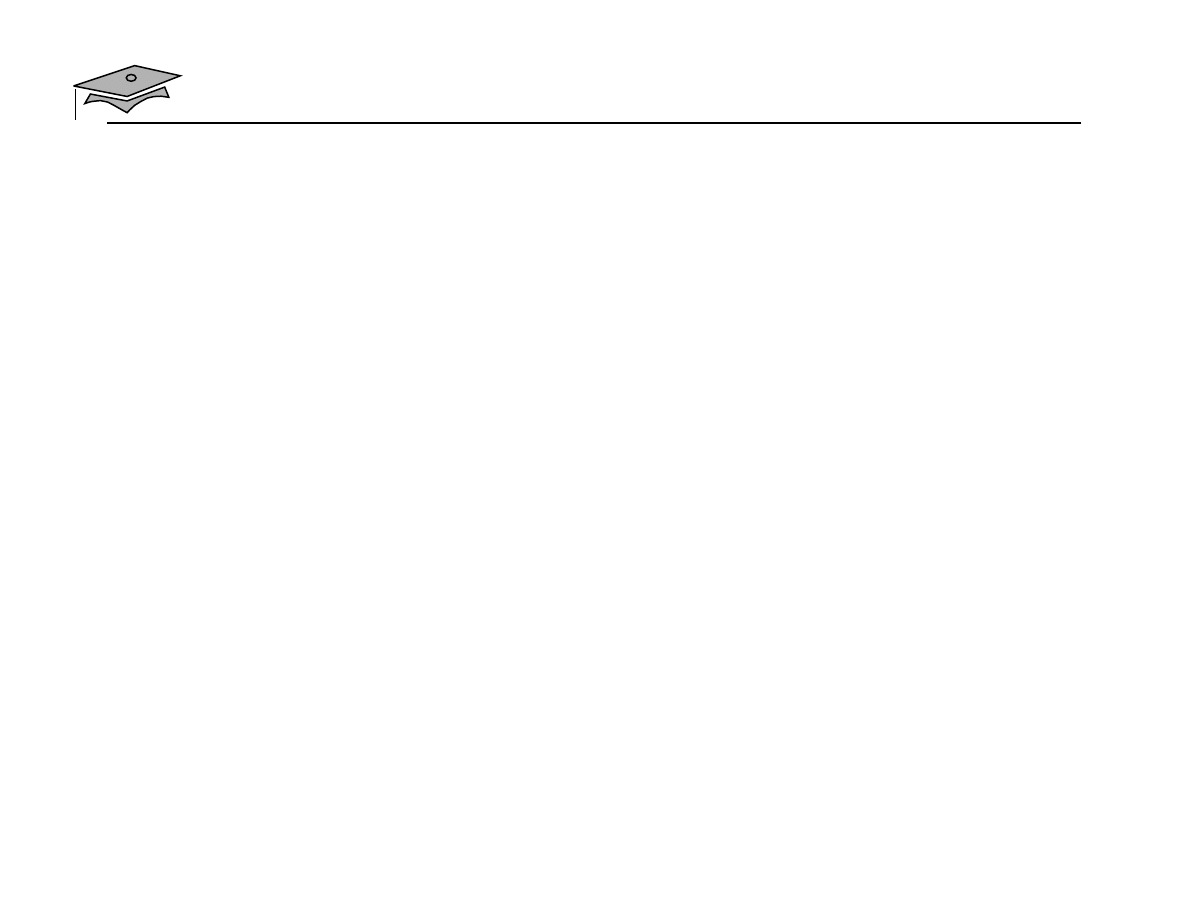
Sun Educational Services
JavaBeans Component Development
Module 13, slide 27 of 34
Copyright 1999 Sun Microsystems, Inc. All Rights Reserved. Enterprise Services November 1999 Revision B.2
BeanContext
Services Support
• InfoBus technology
• Printing
• Design/runtime mode
• Bean visibility
• Locale
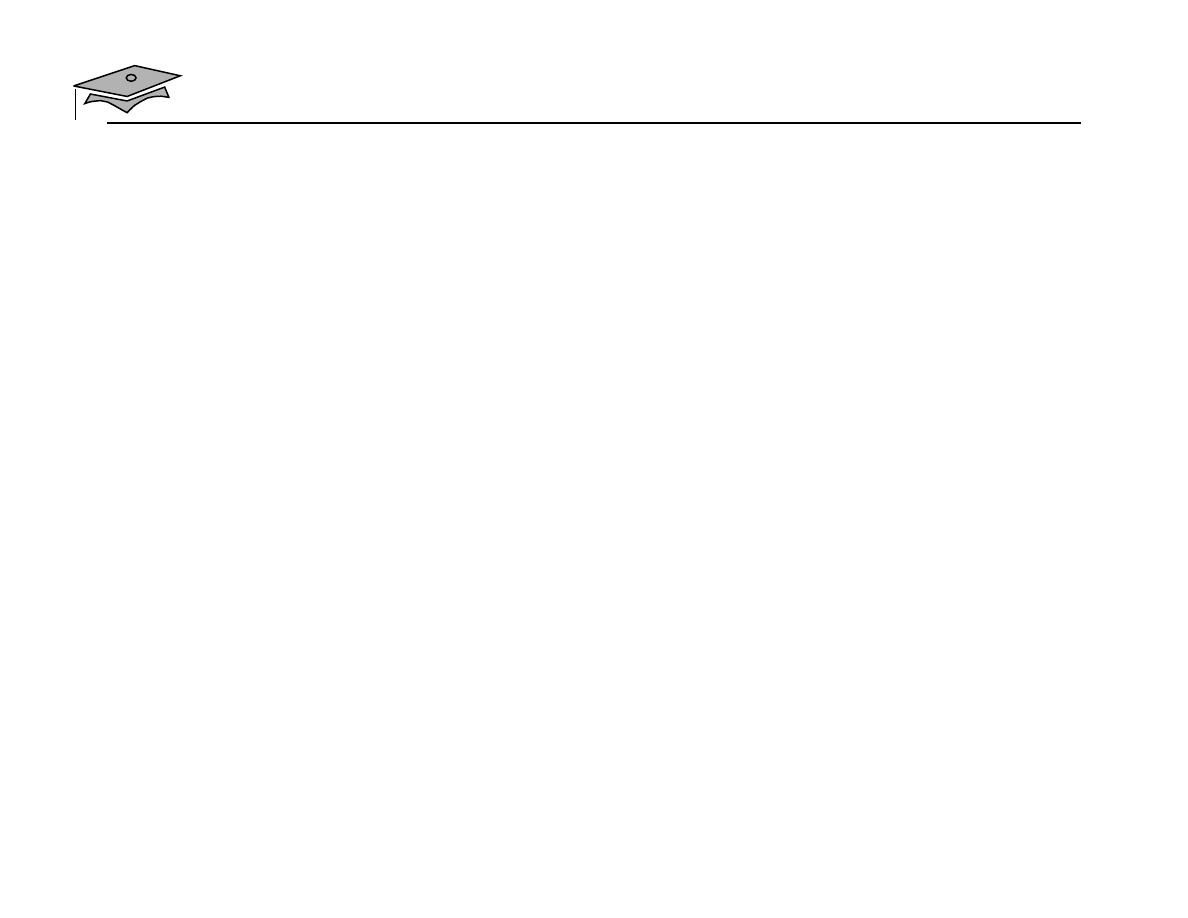
Sun Educational Services
JavaBeans Component Development
Module 13, slide 28 of 34
Copyright 1999 Sun Microsystems, Inc. All Rights Reserved. Enterprise Services November 1999 Revision B.2
BeanContext
Support Classes
•
java.beans.beancontext.BeanContextChildSupport
•
java.beans.beancontext.BeanContextSupport
•
java.beans.beancontext.BeanContextServicesSupport
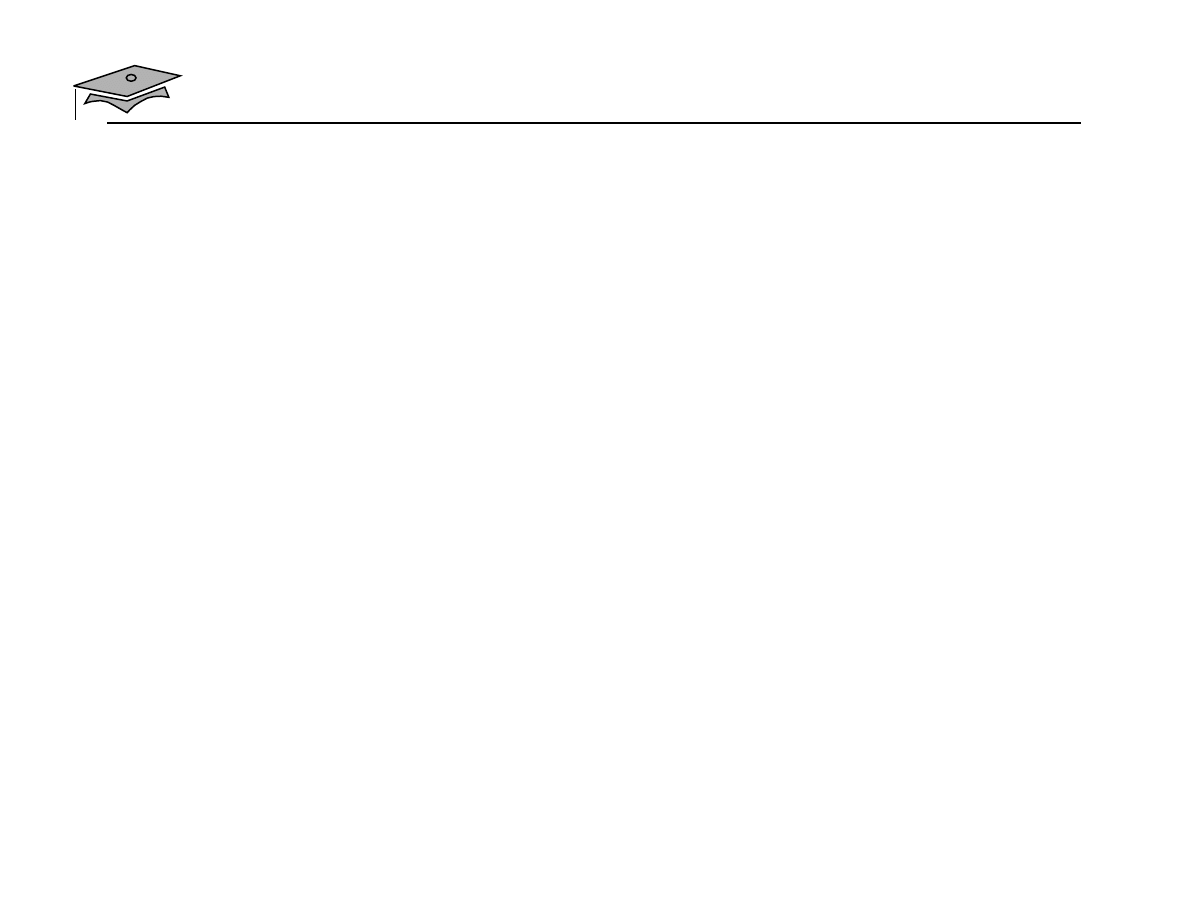
Sun Educational Services
JavaBeans Component Development
Module 13, slide 29 of 34
Copyright 1999 Sun Microsystems, Inc. All Rights Reserved. Enterprise Services November 1999 Revision B.2
JavaBeans Activation Framework
• Determines the type of arbitrary data
• Encapsulates access to data
• Discovers the operations available on data
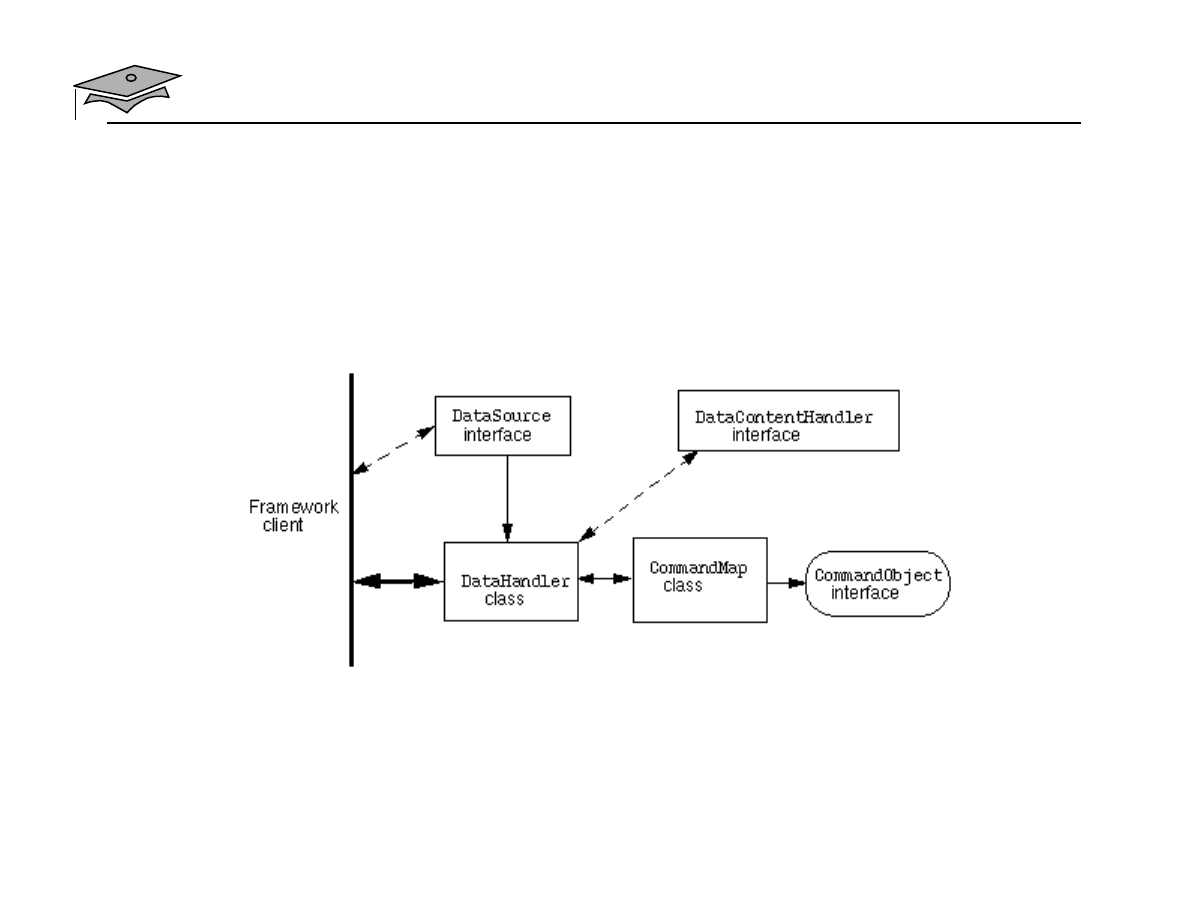
Sun Educational Services
JavaBeans Component Development
Module 13, slide 30 of 34
Copyright 1999 Sun Microsystems, Inc. All Rights Reserved. Enterprise Services November 1999 Revision B.2
Major Elements Comprising the JAF
Architecture
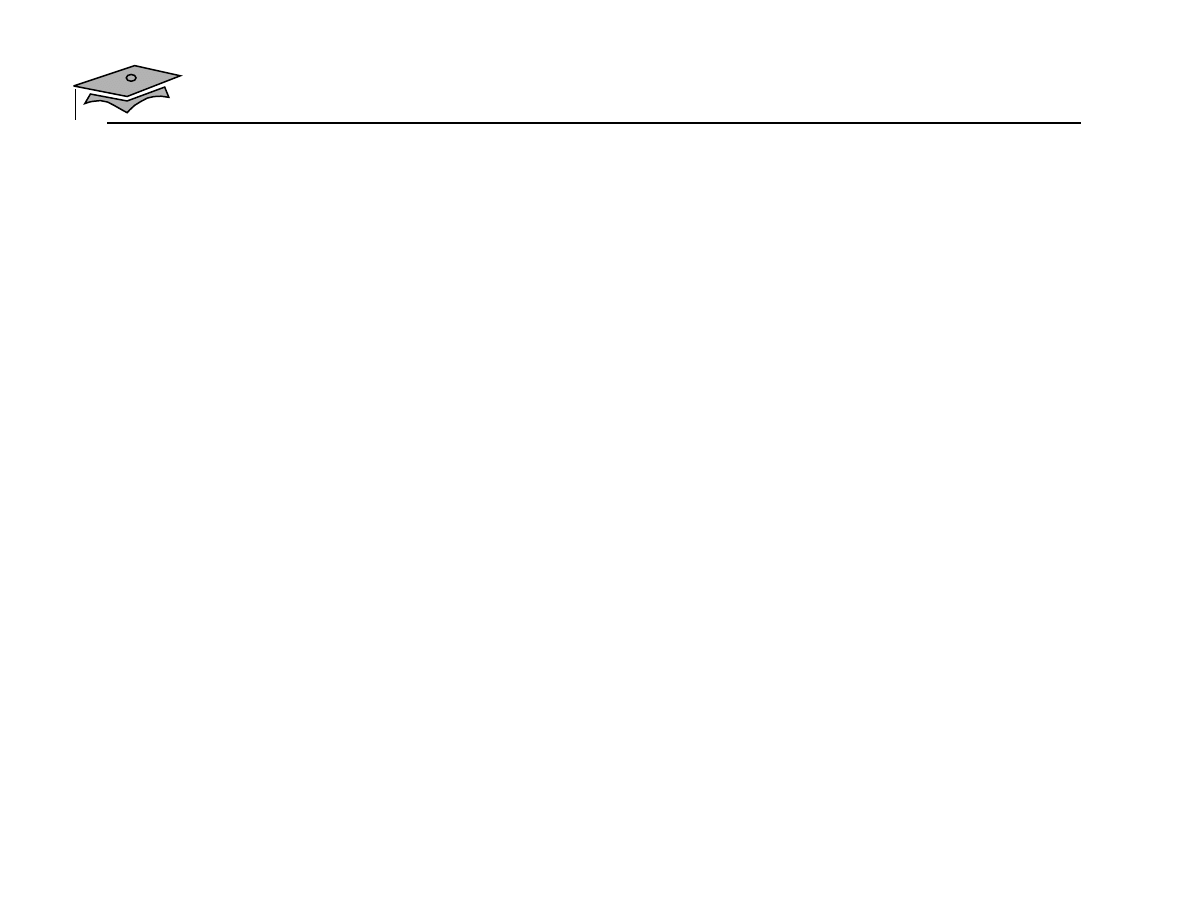
Sun Educational Services
JavaBeans Component Development
Module 13, slide 31 of 34
Copyright 1999 Sun Microsystems, Inc. All Rights Reserved. Enterprise Services November 1999 Revision B.2
Overview of the Major Elements
•
DataSource
interface
•
FileDataSource
•
URLDataSource
•
CommandMap
class
•
CommandObject
interface

Sun Educational Services
JavaBeans Component Development
Module 13, slide 32 of 34
Copyright 1999 Sun Microsystems, Inc. All Rights Reserved. Enterprise Services November 1999 Revision B.2
Overview of the Major Elements
•
DataHandler
class
• Retrieves the data typing information
• Provides a list of commands for data
• Implements
awt.datatransfer.Transferable
•
DataContentFactory
interface
•
DataContentHandler
interface
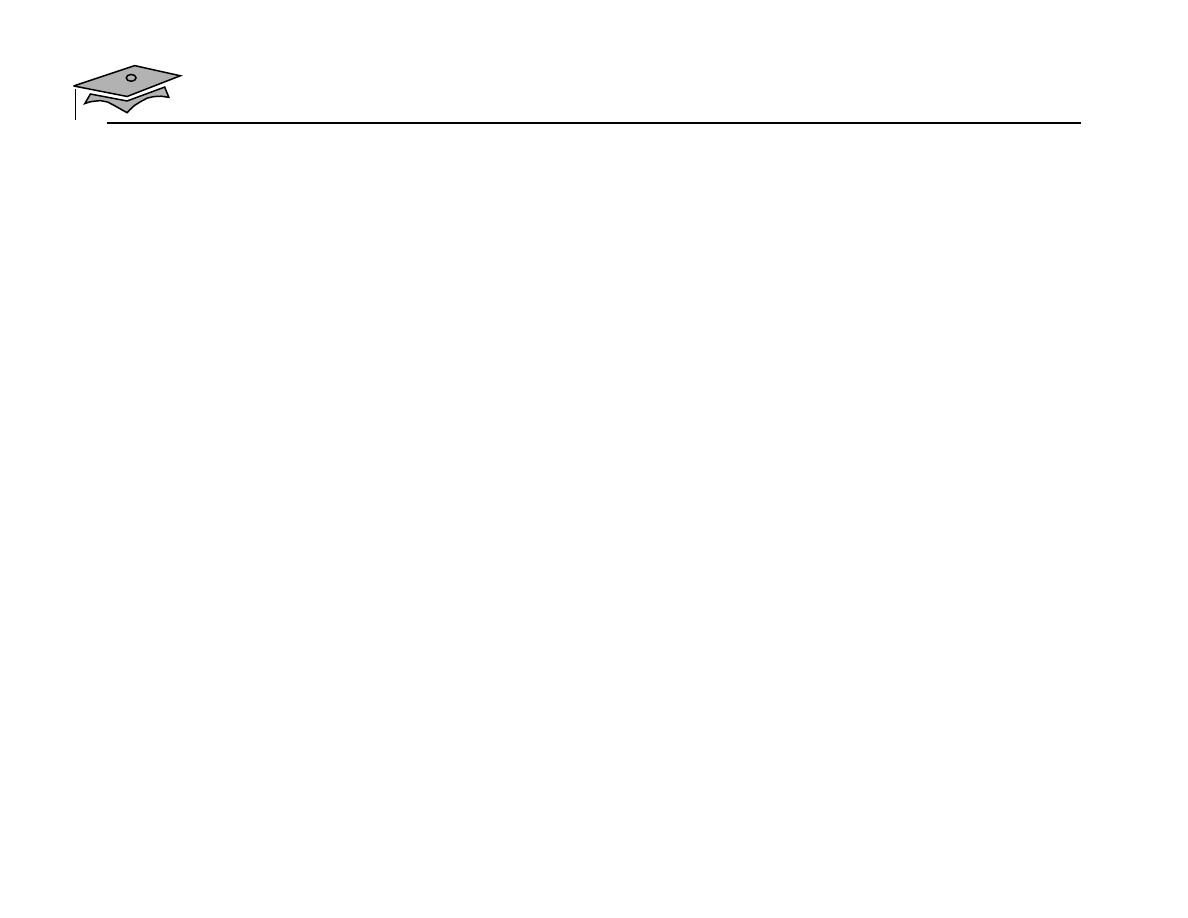
Sun Educational Services
JavaBeans Component Development
Module 13, slide 33 of 34
Copyright 1999 Sun Microsystems, Inc. All Rights Reserved. Enterprise Services November 1999 Revision B.2
Check Your Progress
• Compare and contrast rapid application development (RAD)
andintegrateddevelopmentenvironment(IDE)softwarewith
regard to component development
• Draw a diagram that captures the main interfaces and classes
used in the InfoBus
• Draw a diagram that captures the main interfaces and classes
used in the
beancontext
package
• Draw a diagram that captures the main interfaces and classes
used in the JavaBeans Activation Framework architecture
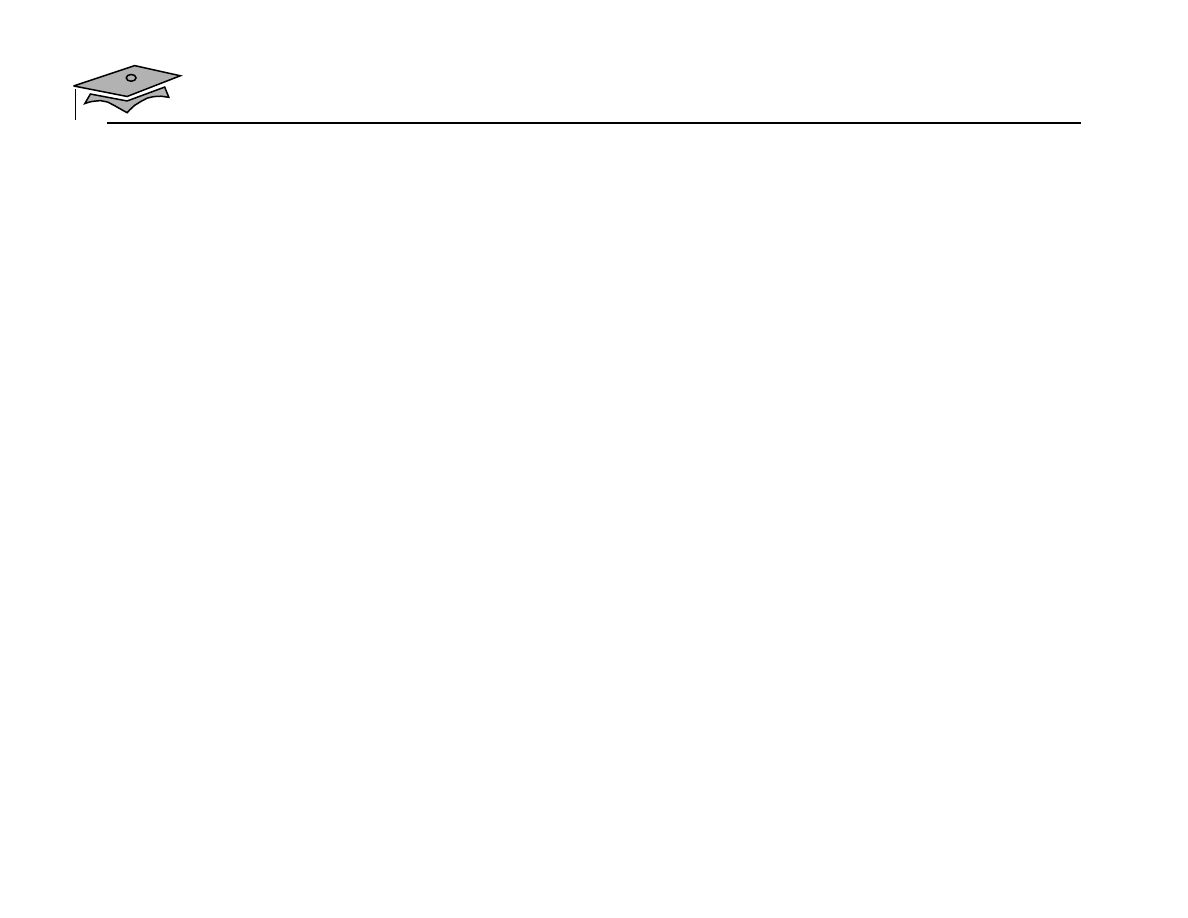
Sun Educational Services
JavaBeans Component Development
Module 13, slide 34 of 34
Copyright 1999 Sun Microsystems, Inc. All Rights Reserved. Enterprise Services November 1999 Revision B.2
Think Beyond
You might now consider taking the Enterprise JavaBeans
course from Sun Educational Services. See
http://
java.sun.com/aboutJava/training/index.html
.


Copyright 1999 Sun Microsystems Inc., 901 San Antonio Road, Palo Alto, California 94303, Etats-Unis. Tous droits réservés.
Ce produit ou document est protégé par un copyright et distribué avec des licences qui en restreignent l’utilisation, la copie, la distribution, et la décompilation. Aucune partie de ce
produit ou document ne peut être reproduite sous aucune forme, par quelque moyen que ce soit, sans l’autorisation préalable et écrite de Sun et de ses bailleurs de licence, s’il y en a.
Le logiciel détenu par des tiers, et qui comprend la technologie relative aux polices de caractères, est protégé par un copyright et licencié par des fournisseurs de Sun.
Des parties de ce produit pourront être dérivées du systèmes Berkeley 4.3 BSD licenciés par l’Université de Californie. UNIX est une marque déposée aux Etats-Unis et dans d’autres
pays et licenciée exclusivement par X/Open Company Ltd.
Sun, Sun Microsystems, le logo Sun, sont des marques de fabrique ou des marques déposées de Sun Microsystems, Inc. aux Etats-Unis et dans d’autres pays.
Toutes les marques SPARC sont utilisées sous licence sont des marques de fabrique ou des marques déposées de SPARC International, Inc. aux Etats-Unis et dans d’autres pays.
Les produits portant les marques SPARC sont basés sur une architecture développée par Sun Microsystems, Inc.
UNIX est une marques déposée aux Etats-Unis et dans d’autres pays et licenciée exclusivement par X/Open Company, Ltd.
L’interfaces d’utilisation graphique OPEN LOOK et Sun™ a été développée par Sun Microsystems, Inc. pour ses utilisateurs et licenciés. Sun reconnaît les efforts de pionniers de Xerox
pour larecherche et le développement du concept des interfaces d’utilisation visuelle ou graphique pour l’industrie de l’informatique. Sun détient une licence non exclusive de Xerox sur
l’interface d’utilisation graphique Xerox, cette licence couvrant également les licenciés de Sun qui mettent en place l’interface d’utilisation graphique OPEN LOOK et qui en outre se
conforment aux licences écrites de Sun.
L’accord du gouvernement américain est requis avant l’exportation du produit.
Le système X Window est un produit de X Consortium, Inc.
LA DOCUMENTATION EST FOURNIE “EN L’ETAT” ET TOUTES AUTRES CONDITIONS, DECLARATIONS ET GARANTIES EXPRESSES OU TACITES SONT FORMELLEMENT
EXCLUES, DANS LA MESURE AUTORISEE PAR LA LOI APPLICABLE, Y COMPRIS NOTAMMENT TOUTE GARANTIE IMPLICITE RELATIVE A LA QUALITE MARCHANDE, A
L’APTITUDE A UNE UTILISATION PARTICULIERE OU A L’ABSENCE DE CONTREFAÇON.
Wyszukiwarka
Podobne podstrony:
Sun Educational Services SL 315 Java Server Pages Technology
Sun Java Training SL 275 Java Programming Language Overheads (Sun Microsystems, 2000)
Sun 310 080 Java 2 Enterprise Edition (J2EE) Web Component DeveloperExam Preperation, Version 8 0 (T
Java Beans
java beans PVNUILNCTCGIW6I4Y2R7 Nieznany
Next Gen VoIP Services and Applications Using SIP and Java
(Ebook Pdf Jsf) Sun The Java Server Faces Technology Tutorial
Creating A Web Service From A Java Class
143030393X {72191ACF} Fast Track to Sun Certified Java Programmer (SCJP) 5 0 Upgrade Exam [Tong 2006
Web Services Business Objects And Component Model
Reflectivity in Pre Service Teacher Education A Survey of Theory and Practice
Sun Certified Java Programmer Scjp Mock Exam
[JAVA][Web services became more accessible]
Prezentacja firmy MARSTATE SERVICE BHP PPOZ PPT
Education in Poland
Java Media FreamWork
Symmetrical components method continued
więcej podobnych podstron